
Pancha-Kedar Trek: The 5 Highest Temples of Shiva Uttarakhand

Panch-Kedar refers to five holy places of the Shaivite sect dedicated to god Shiva. They are located in the Garhwal Himalayan region in Uttarakhand , India . The five temples designated in the strict pecking order to be followed for pilgrimage for worship are the Kedarnath at an altitude of 3,583 m (11,755 ft), the Tungnath (3,680 m/12,070 ft), Rudranath (2,286 m/7,500 ft), Madhyamaheshwar or Madmaheshwar (3,490 m/11,450 ft) and Kalpeshwar (2,200 m/7,200 ft). According to the legend, the Pandavas sought the blessings of Lord Shiva to atone their sins after the battle of Mahabharata. Lord Shiva eluded them repeatedly and while fleeing took refuge at Kedarnath in the form of a Bull. On being followed, he dived into the ground, leaving behind his hump on the surface. This conical protrusion is worshipped as the idol in the Kedarnath shrine. Other parts of Shiva appeared throughout the Garwahl region as follows.
- Hump at Kedarnath
- Arms (Bahu) at Tunganath,
- Face (mukh) at Rudranath,
- Navel (nabhi) at Madamaheshwar
- Hair (jata) at Kalpeshwar
Once the visit is complete one has to pay homage to Badrinath to Lord Vishnu as a witness to complete the circuit which ranges from the Kedarnath wildlife sanctuary covering around 150kms by foot and 150kms by road through some amazing landscapes, wildlife and some blissful places. The trip starts from Rishikesh . We hired a Tavera for most part of our journey DAY 1 We started early morning from Rishikesh towards out first Kedar, Kedarnath. The route passes through 5 confluences of Dev, Rudra, Karna, Nanda & Vishnu Prayag and moves towards Gaurikund which is effectively the base for trek to Kedarnath. As of writing this article due to catastrophic floods in 2013 in Garwahl area, the trek route is now changed.
Early morning around 8 we commenced our uphill 13 km climb towards Kedarnath temple.
By the time we reached Kedarnath it was raining heavy and we were tired mostly due to lack of acclimitaztion coming straight from cofy sea level homes at Mumbai to around 13000ft. We booked a room at a small guest house run by Maharshtra Mandal and retired for the night. DAY 3 KEDARNATH TEMPLE [THE HUMP OF LORD SHIVA] Kedarnath, at the head of the Mandakini River, the temple is believed to be very ancient, has been continually renovated over the centuries. The lingam at Kedarnath, unlike its usual form, is pyramidal and is regarded as one of the 12 Jyotirlingas. Situated at an altitude of 3,581mts. Kedar is another name of Lord Shiva the protector and the destroyer.
We took the blessings and visited Adi sankaracharyas Samadhi behind the temple. It is beleived that the great sankara simply vanished one day behind the temple into eternal Samadhi and hence the sgructure commerates the great seer who re-established Vedic culture in India after defeating many contemperory religious schools.
Beyond Kedarnath a hard trek uphill to Vasukital a beautiful lake located 8km up was on our mind, but reasoning with the hard task we ourselves had to visit other Kedars we dropped the idea and moved towards Gaurikund.
We reached Gaurikund around evening had some light snacks packed our luggage and move towards our next destination Ukhimath at a distance of 43km from Rudraprayag , which was the base for our next Kedara, Madmaheswar. We reached around evening at Ukhimath at checked in at a lodge. For this trek we would require some guides and the hotel owner was a great chap who arranged two local lads who were very enthusiastic and as time went we developed a strong bond with them DAY 3 From Ukhimath there is a motorable road around 22.5km towards Uniana from where the trek starts. We started early morning and reached Uniana by 9. From here a dirt track starts which first leads towards a small hamlet of Ransi.
From Ransi the first major stop is Gaundhar. Many pilgrims who take Madmaheshwar pilgrimage prefer to halt at Gaundhar around 8km from Uniana and then move up again 12 km to the temple. The place to stay here is Kailash Tourist Lodge.
We decided to push on as much as we can and try and reach Nano village but we came to know that the village heads daughter had expired and hence we may not find accommodation. So we decided to reach Khadara Khal a small but beautiful hamlet just before Naano village.
We rested at Khadara for the night and had some delicious food comprising of local grown gourds and wheat roti. It was the best connect to nature with amazing night sky views from the room DAY 4 MADMAHESHWAR [THE BELLY OF LORD SHIVA]
We started early mornig from Khadara to a steep uphill climb towards the temple. One must be aware to carry energy bars during this trek or drinks like Tang or you can get exhausted pretty soon as we found out. Luckily just before hunger would get better of us we found some good refershments at the last settlement 3kms before the temple.We had some tea and the shops final set of cream biscuits before movig towards Madmaheshwar. It was almost 4pm and overcast when we saw the first glimpse of the Madmaheshwar temple The temple of Madmaheshwar is located at an altitude of 3,289 m. above sea level, on the slope of a ridge, 25 km northeast of Guptakashi in the Garwahl region of UTTARAKHAND state in India . Located at the base of Chaukhamba peak at an altitude of 3289 m the classic temple architecture belongs to the North-Indian style. So sanctified is the water here that even a few drops are considered sufficient for ablution. Kedarnath & Neelkanth peaks are visible from here, the entire ring of mountains associated with the life & times of Shiva. The stomach of Shiva is believed to have emerged at Madmaheshwar. We retired for the night at the Temple guest house. I was priveledged to interact with the temple priest an old man who informed me so much about herbs and its use. It was a treat. He further informed me about a unique hot water spring 8ks above Madmaheshwar named Nandi Kund which is a must visit. as so much we were tempted we resisted as we had much to cover but made it a point to return to this amazing place one more time. That night we slept with calmness and peace with the amazing experinece of this temple
DAY 5 We got up early and had a quick visit to the temple, clicked some group photos. We had decided to visit Budda Maheshwar a temple 2 kms above Madmaheshwar, more ancient an surrounded by beautiful meadows with views of mighty Chaukhamba
The pond water is considered holy and is used to worship the Shiva linga at the temple. One needs to remove their footwear on the outskirts , wash themselves clean with the water and then carry the water in a fresh unused vessel to the nearby temple of Budda Maheshwar and perform the worship
We had some good snaps around this very peaceful place and decided to move towards Gaundhar. We initially had decide dto halt but ultimately gave it a push to reach Uniana that very evening. It was an ardous 24kms trek but we finally reached Uniana by 6 in teh evening. From here we moved towards Chopta our base for Tungnath. We arrived Chopta late night around 10 and checked in a small restaurant come dormitory with very basic facilities. DAY 6 TUNGNATH [THE ARMS OF LORD SHIVA] Tungnath is easily accessible by foot from Chopta around 4km with good walkable road and hence it was leisure trek towards this temple which we welcomed after past 5 days of relentless hardwork which had left our legs battered and bruised. Within 3hrs we reached the Tungnath temple Tungnath is a pilgrim cum tourist hub unlike the unadulterated surrounds of Madmaheshwar. There is stark contrast in the attitude of Temple priest where as seen with commercialization thats crept into religious places. Rules are bent for money where we see many foreign tourist clicking weird pics with idols and sanctity of footwear and other basic rules are not maintained. Anyways this does not take a bit away from the grandeur and beauty of this highest Shiva temple of all Kedaras
We had some good snaps around this very peaceful place and decided to move towards Gaundhar. We initially had decide dto halt but ultimately gave it a push to reach Uniana that very evening. It was an ardous 24kms trek but we finally reached Uniana by 6 in teh evening. From here we moved towards Chopta our base for Tungnath. We arrived Chopta late night around 10 and checked in a small restaurant come dormitory with very basic facilities. Tungnath (3886m) is the highest temple in India. Legend has it that the arm of Shiva appeared here. Ravana, of the Ramayana, is said to have performed penance at this temple to propitiate Shiva. The high altitude temple is a Seat of Swyambhu Linga or the Lord Shiva Incarnate. The mythology has it that Lord Shiva was enraged at the act of homicide enacted by the Pandavas by killing their brethren in the grand battle of Mahabharata. Aware of Shiva's annoyance, the Pandavas built the temple to please Lord Shiva and for their own salvation. Others claim that the Adi Shankaracharya during his historic visit to the region had got it built. They cite the presence of Adi Shankaracharya's image in the garbha-griha or the sanctum of the temple. However, it also houses images of the Pandavas. Besides, the ashtadhatu images of Kaal Bhairava and Veda Vyasa are among the multitude of images there. A dark left-tilting one-foot high linga is the centre of attraction. The locals describe it as an arm of Lord Shiva. From Tungnath we decided owards Chandrasila peak. The Chandrashila peak presents the most beautiful views of Nanda Devi, Trishul, Kedar Peak, Bandarpoonch and Chaukhamba peaks. Known as the summit of TUNGNATH temple, the highest of Shiva temples in all Himalayas, it lies at DISTANCE OF 1KM from the Tungnath temple. The 1km trek is ardous but takes one to heights of around 4000m presenting amazing views. At the top is a small temple.
Chandrashila literally translates to "Moon Rock" and is associated with a popular legend as a place where Lord Rama meditated after defeating the demon-king Ravana. Another legend says that moon-god Chandra spent time here in penance. The summit gives an 360degrre panaromic view of the mighty Himalayas
From Chandrashila we made our way back to Chopta to move towards our next destination of Gopeshwar the base for one the most hard treks to Rudranath the 4th Kedara
After we reached Chopta we bid adieu to our two guides of Madmaheshwar who had accompanied us till Chpta as they did not know the route of our next trek. It was hard for them to parta s they had completely immeresed with us as friends.
We reached Gopeshwar around 7in teh evening and checked in a hotel. We had a brief discusion with our host about our plans. This trek was tough as we wanted to visit Rudranath and Anusuya Mata devi temple the centre of Sakti . There were two routes one from village Sagaar , a short one and one from Mandal a long one which covered Anusuya Mata . We after much contemplation decided to make a round circuit from Sagar to Mandal. This would have required us 3 days and here we erroneously decide dto let our driver go as we thougt keeping the car waiting may add to our expenses and the next destination after this trek was easy we may save some money. This was our mistake as in Uttarakhand there are taxi unions so one cannot book a taxi from one area to another for single trip but has to pay return fare which becomes very expensive. So a first hand traveller trip is that if you are short on time and want to cut hassles of erratic bus services it is better to book one car for the entire trip which works out cheaper DAY 7 Our host was very helpful to arrange for a guide come porter for our trek. We started early mornig after some refreshments towards Rudranath . The trek leads one through farm fields before converging at a rocky dusty and steep trek routes which takes one through steep curves. Our target was to reach Panar Bugyal by the night but since there was a chance that the accommodation may be full we decided to stop at Lyuti Bugyal just below Panar
Due to strong heat and fatigue not much pictures were clicked as the focus was to reach Lyuti at earliest. We reached around 6 in the evening and were very tired. Due to very less accomdation facilites on this hard trek, the make shift lodges are almost full. I enjoyed the hot Kari made from besan and the local vegetable and roti that was served. At night I had an exeperience to sleep besides the host calf almost sharing bed with him DAY 8 RUDRANATH [THE FACE OF LORD SHIVA]
Early mornig with fresh legs we started towards the revered temple of Rudranath. There was an intial climb towards Panar Bugyal and amazing meadow with peacful scenes.
We enjoyed this atmosphere and moved ahead towards Rudranath temple which takes one through amazing scenic routes and finally crosses the Pitradhar, the highest point of the Pancaganga Meadow. It is believed that souls from either worlds cross here.
The face of Lord Shiva is worshipped at Rudranath temple in a natural rock temple as Neelkantha Mahadeva. Lord Shiva is worshipped here as Neelkantha. The temple is situated amid thick forest at a height 2286 mtrs. The temple provides magnificent view of Hathi Parvat , Nandadevi, NandaGhunti, Trishuli and many other.This is the only temple in India where the image of Shiva is worshipped as a symbol of his face, a sublime, tender aspect of Shiva, unusual, serene and beautiful indeed to behold.Devotees come to Rudranath to offer ritual obeisance to their ancestors, for it is here, at Vaitarani river (the water of salvation), that the souls of the dead cross when changing world
The accomdation for temple is almost 500m down as people are not allowed to violate temple premises. Hence one must accomdate down as if at night if someone gets a nature call he may ahve to trek down 500m , not a good prospect. Unfortunately I was too keen to be close to the temple and decided to stay up which did not for best part amuse my friends
DAY 9 ANUSAYA MATA DEVI TEMPLE [2000m] After early morning prayers we decided to head back. This was a long journey as we had to first cross Naila Pass the highest point in the valley and then make our way through narrow steep inclines and dense forest towards Anusya Mata temple and reach Mandal which accounted to almost 20kms
Anusuya Devi Temple is a highly temple dedicated to Anusuya Devi, situated at an altitude of 2000 m above sea level, in Gopeshwar of Chamoli district Uttaranchal . The temple has great archaeological importance. It is believed that it is the only place where devotees circumambulate around the river as a mark of reverence. Anusaya Devi temple is known to help devotees in distress. Childless couples often take this ardous trek to Anusaya devi temple as a last resort to have a baby.
Just 2km ahead is the Atri caves, a very spiritual and specatcular site. Since we were very tired we decided to skip this and move towards Mandal once our oblations at temple were over. We had an added responsibility to arrange our transport ahead a mess we ourselves had got into due to our ignorance. We reached Mandal around 6 and with great effort got a transport back to our hotel at Ukhimath. That very night we decided to do an journey to our next stop Helang which served as a base fr kalpeshwar. For this we had to first reach Chamoli in one taxi than change to another which would take us to Helang. We reached Helang at around 11 and checke din a dormitory and went to sleep DAY10 KALPESHWAR TEMPLE [HAIR OF SHIVA]
We woke up next morning with a sense of relief that much hard work was done. We were also elated by the fact that there was a motorable road till Urgam around 8kms from where it was an easy walk towards Kalpeshwar. Earlier this 8kms were one of the most difficult trek. We had to book a vehicle towards Urgam and back. Just to point out the cost incurred by us for this trip only was equal to the car we had hired from Rishikesh and hence once again I put forth that book a vehicle from start to end unless you wish to travel local transport.
Located in Urgam Valley at an altitude of 2,134 m. above sea level, the small rock temple of Kalpeshwar is where the Hair appeared. It is a favorite location of meditating sages. Legend has it that the sage Arghya had performed austerities here and created the nymph, Urvashi. Rishi Durvasa is also believed to have meditated here under the wish-fulfilling tree, Kalpavriksha. One cannot circumambulate this temple as its inside a stone cave and it takes a trek of 50kms to do so
After oblations with ecstatic hearts we started our return journey towards Helang. On the way back we visited Dhyan Badri Temple at Urgam Village which is one of the Sapta badri's [Adi, Badrinath(vishal), Bhavishya, Yog, Dhyan, Vridh, Ardha]. Narsinha Badri is also included in this list by some. We reached Helang by evening and requested our Urgam driver to ferry us to Joshimath . We stayed at Joshimath for the night from where we were supposed to move to Badrinath to complete our circuit. After checkin in we visited the local taxi stand at Joshimath to book a vehicle to Badrinatha nd return to Rishikesh
DAY 11 BADRINATH We got up leisurely and had our breakfast as our hard trekking days were over cause badrinath was a motorable entity. We left to Badrinath around 11 in the morning and reached there around 2. Badrinath was crowded or maybe we were not accustomed ro see so many pilgrims due to the secluded nature of our treks. So we decided first go visit Saraswati river nearMana village, the last settlement on the Indian side of Indo-China border
After visiting Vyas and Ganesh gufa we moved towards Badrinath temple. we first checked in a guest house near the temple, cleaned ourselves and then moved towards the temple to complete our pilgrimage
Badrinath (3145m)located on the right bank of river Alaknanda is situated 297 kms from the holy town of Rishikesh. Badrinath is considered to be amongst the most pious of the eternal Hindu shrines of Kedarnath, Badrinath, Gangotri and Yamunotri . Badrinath is located in the lap of Nar-Narayan Parvat, with the Neelkanth peak(6,597m) overlooking in the background. Badrinath temple is dedicated to Lord Vishnu. Sadhu and locals inform about scriptures which state that "Of all the innumerable sacred pilgrimage places in heaven and earth there is none equal to Badrinath nor shall there be one". The present temple was built about two centuries ago by the kings of Garhwal. The principal idol in the temple is of black stone and represents Vishnu seated in a meditative pose, and flanked by Nara-Narayan. Badrinath is also known as Vishal Badri and is one of the Panch Badris. The temple remains closed from October to April due to severe winter conditions. During this period the idols are taken to Pandukeshwar . Badrinath temple is the final stop to mark the completion of the legendary Pancha Kedar yatra, as being a only indigenious temple of Vishnu amidst the land of Shiva it bears testament or witness to the hard trek of Panch kedara
After completing our pilgrimage we had a sumptous meal at Saket restaurant which serves best vegetarian foods, the paneer butter masala is a dish to try. We roamed the market and retired for the night. Next mornig we had to leave early to reach Rishikesh by night. DAY 12 We had booked our return train tickets on the 15th day but since we completed our trip early we rescheduled our plan and booked next days flight back to Mumbai. hence it was imperative we reached Rishiesh that very night and started our journey early. On our way we decided to visit Adi badri temple located at karna Prayag
Adi Badri [A part of Sapta Badri], the first temple complex is an ancient shrine dedicated to Vishnu and is one among a chain of 16 small shrines located in the hill ranges. Seven temples of this chain were built during the late Gupta period (5th century to 8th century). According to tradition, Adi Shankara is attributed as builder of all the temples. The Vishnu temple is supposed to be the oldest in the region. The sanctum holds black stone 1m image of Vishnu.The image depicts Vishnu holding a mace, lotus and chakra (discus). Brahmins from South India serve as chief priests in the temple. It is considered to be the first [Adi] form of Vishnu in the region which is now moved to Badrinath in form of Vishal Badri and would be replaced by "Bhavishya Badri" [part of Pancha Badri], located at Tapovan . On shifting of Badrinath (also known as Raj Badri) to Bhavishya Badri, Adi Badri will be called the Yog Badri. The local people have a superstitious belief that in a few year the road from Joshimath to Badrinath will be closed by the meeting of the hill near the temple that stand opposite each other and that then this temple will become a place for pilgrimage. We visited all Prayags on the way to complete our journey of 5 Kedars, 5Prayags and 3Badri finally reaching Rishikesh that night. We checked in a small hotel and decided to hire a car to Delhi next morning for a flight back to Mumbai
Frequent Searches Leading To This Page:-
uttarakhand tourism homestay , uttarakhand tour packages from haridwar, uttarakhand tour places , 3 days trip to uttarakhand , panch kedar trek tour package
Madhyamaheshwar Mandir

- Treks in Himachal Pradesh
- Treks in Uttarakhand
- Treks in Sikkim
- Treks In Jammu & Kashmir
- Uttarakhand
- Himachal Pradesh

Panch Kedar Trek Guide 2023: History, Highlights, Best Time, How to Reach and Itinerary
Table of Contents
Numerous temples devoted to various Hindu deities may be found across the state of Uttarakhand. Five such respected sanctuaries where Lord Shiva is worshipped may be found in the state’s Garhwal region. These temples are collectively known as Panch Kedar (panch in Hindi means “five”).
The five temples (Panch Kedar) assigned in the strict chain of importance to be followed for pilgrimage for worship are the Kedarnath Temple at an altitude of 3,583 m, the Tungnath Temple at 3,680 m, the Rudranath Temple at 3,559 m, the Madhyamaheshwar Temple or Madmaheshwar at 3,490m and the Kalpeshwar Temple at 2,200m.
The primary temple is the Kedarnath, which is one of the four Chota Char Dhams (meaning, “the little four abodes/seats”) or pilgrimage destinations in the Garhwal Himalayas; the other three dhams are Badrinath, Yamunotri, and Gangotri. Kedarnath is also considered one of the twelve Jyotirlingas. After Kedar – ‘the local name for Shiva’, the Garhwal region is also known as the Kedar-Khanda.
The Shaiva sect has many more symbols and iconic forms in the region than the Vaishnava cult. The western section of this area, which comprises half of Chamoli district is known as Kedar-Kshetra or Kedar mandala and has all five temples that comprise the Panch Kedar.
History of Panch Kedar Trek
The word Kedar refers to a natural geological formation or glacial bank. The Pandavas, the protagonists of the Hindu epic Mahabharata, are mentioned in the most renowned mythology concerning Panch Kedar.
In the legendary Kurukshetra battle, the Pandavas conquered and murdered their cousins, the Kauravas. They intended to atone for the sins of fratricide and the murder of Brahmins during the conflict. As a result, they handed over the reins of their country to their descendants and outlined in pursuit of the deity Shiva and his blessings.
But, because he was severely upset by the Mahabharata War, Shiva disguised himself as a Nandi and fled to the Garhwal area to avoid the Pandavas.While looking for Shiva, Pandavas noticed a bull grazing near Guptakashi. Bhima identified the bull as Shiva right away.
Bhima grabbed the bull by the tail and rear legs. However, the bull-formed Shiva vanished into the earth, only to emerge in pieces, with the hump raising in Kedarnath, the arms emerging in Tunganath, the nabhi and stomach appearing in Madhyamaheshwar, the face appearing in Rudranath, and the hair and head appearing in Kalpeshwar.
The Pandavas, overjoyed with Shiva’s return in five different forms, constructed temples in each of the five locations to honor and worship Shiva. As a result, the Pandavas were cleansed of their misdeeds.

Highlights of Panch Kedar Trek
- Seeking Lord Shiva’s blessings in his five highest terrestrial abodes, Kalpeshwar, Rudranath, Tungnath, Kedarnath, and Madhya Maheshwar.
- Experience the splendor of the high-altitude grasslands of Rudranath, Panar, and Chopta.
- Observe the lovely countryside, which is embellished with blossoming flowers, dense woodland, and streams.
- Take advantage of the opportunity to immerse yourself in the rustic beauty of distant settlements.
- IInteract with their naive and industrious residents and learn how they live a joyful existence in the absence of appropriate technology.
- Enjoy camping beneath the stars amid stunning scenery.
Best Season to Visit Panch Kedar Trek
Panch Kedar Yatra is best done between May and October. All of Panch Kedar’s temples are only open for 6 months a year, from the end of April to the end of October. The temples are unreachable throughout the winter owing to heavy rain and snowfall.
In the winter, the sanctified symbolic of Lord Shiva in Kedarnath is worshipped in Ukhimath’s Omkareshwar temple, the symbolic idol of Tungnath is worshipped at Mokumath, the Rudranath symbolic image is carried to Gopeshwar, and the Madhyamaheshwar symbolic idol is cherished at Ukhimath. Only Kalpeshwar remains open all year.
Location of Panch Kedar Trek
The five temples are located in the Upper Himalayan areas, with snow-covered hill ranges of the Nanda Devi, Chaukhamba, Kedarnath, and Neelkanth peaks in the background.
Kedarnath lies in the Mandakini River valley, whereas the other temples are on the highlands between the Mandakini and Alaknanda rivers. All of the temples are in distant locations, and except Rudranath, the other four are still inaccessible by motorable roads.
The settlement of Kedarnath is located on the edge of the Kedarnath mountain slope in the remote northern Garhwal Himalayas. The streams that run in the valley behind the Kedarnath temple include the Dudhganga, Madhuganga, Swargaduari, and Saraswathi.
Urgam Valley has apple orchards, terraced fields where potato is grown extensively. Kalp Ganga River, a tributary of the Alaknanda, flows through this valley
How to Reach Panch Kedar Trek
Jolly Grant Airport serves Dehradun and is situated around 48 kilometers from Haridwar. There is a regular flight from Delhi to Dehradun; if arriving by flight, arrive one day early in Haridwar.
Haridwar is well-connected by train to other key cities like Delhi, Mussoorie, Mumbai, Varanasi, Lucknow, and Kolkata.
- DDN NZM AC EXPRESS departs from Delhi (2205)
- Doon Express departs from Kolkata (13009)
- From Mumbai, take the Dehradun Express (19019).
- From Chennai, take the Dehradun Express (19019). (12687)
From Delhi ISBT Kashmere Gate, there is a frequent bus service to Haridwar. From ISBT Kashmere Gate, try to ride only government buses. Private buses operate from outside ISBT and are untrustworthy. Buses usually drop you off at the Haridwar bus station. You must then proceed to Haridwar Railway Station.
Itinerary of Panch Kedar Trek
Day 1 – haridwar to joshimath (altitude: 6724 ft, 256 km drive, approx 10 hours).
Joshimath is the starting point for the spiritual Panch Kedar trek. Joshimath is a town in Uttarkashi that has recently become a tourist destination. Buses run frequently from Haridwar and Dehradun to Joshimath.
This long ride is breathtaking, with several tourist sights along the route. The most well-known is the confluence of the Alaknanda and Bhagirathi rivers, which subsequently merged to become the Ganga. After the exhausting voyage, relax in a hotel room.
Day 2 – Joshimath to Kalpeshwar back to Urgam Village
You will first ride from Joshimath to Urgam village, which is 19 kilometers away. Urgam village is a serene environment at 2134 meters altitude. From here, you may begin your journey to Kalpeshwar.
So far, the altitude would be the same as Urgam village. Saints meditate at Urgam hamlet, which is noted for its tranquillity. Kalpeshwar revitalizes the entire landscape. You will gradually ascend through the different woodlands with animals grazing around you. The path is easy to follow and has plenty of rest stops. Villagers will greet you at every turn.
It will be a one-of-a-kind experience to eat lunch in such a basic setting. Enjoy your hike from now on, and make a stop at one of Urgam’s culturally rich homestays.
Day 3 – Urgam to Kalgot (2400m., 12 km. Trek)
Begin your next day with a nutritious breakfast and bright sunlight. Urgam is well-known for its potato and apple farms, and there are several large fields to be seen. Just don’t infringe on their property unless you have permission.
You will be pleasantly delighted to wander across the rich valley as you begin your day. The next destination is Kalgot, which is a 12-kilometer trek from Urgam but is not strenuous. It is a great secluded environment at a height of 2400 meters, with several waterfalls around it.
They are visible as you go through the deep woodlands. You’ll notice that there will be miniature habitats that greet you now and then. This is your greatest chance to communicate with them and learn about their culture and location. Spend the night in a traditional Garhwali homestay.
Day 4 – Kalgot to Toli/Panar Bugyal (14 km. trek)
A fresh day awaits to be filled with new adventures. Today’s hike will be more difficult than yesterday’s. The track is 14 kilometers long, with the entire trip taking place under the shade of verdant trees. There will be plenty of farmland and rock trails and lovely pastures waiting for you.
The finest part about the walk is that, in addition to spiritual significance, each moment brings you closer to nature. It is the sensation of being in the wilderness. On the fourth day, you will have a true adventure experience by sleeping in tents under the dark sky, surrounded by the refreshing wind of the woodlands.
Day 5 – Toli/Panar Bugyal to Rudranath and return (2286m., 8 km. trek Each Side)
Take a few deep breaths of fresh air as you wake up in your cozy tent accommodations. You will climb up to Rudranath today. With a height of 2286 meters, it is considered the most difficult among the four temples. However, the voyage will be life-changing.
The natural rock temple is encircled by lush rhododendrons and has rock-paved paths. The hike is 8 kilometers long and moderate. When you get to the Shiva temple, the first of the Panch Kedar, you will have your first true views of the highest Himalayan peaks such as Nanda Devi, Trishul, and others.
It will be time to return to Panar after some relaxing hours at the hallowed site. Have a good time in tents with joyful expressions.
Day 6 – Toli/Panar Bugyal to Sagar Village (14 km. Trek) and drive to Chopta (2900 m., 32 km.)
It’s time to go on to the second Kedar, Tungnath. To go to Tungnath, you must first climb 14 kilometers to Sagar village. Then you will cycle 32 kilometers to Chopta village.
The trip to Sagar village takes you through lush woods and various pastures. The route to Chopta from Sagar habitat is a peaceful journey that gradually ascends. Because Chopta is a famous tourist location, it is congested.
It also serves as a camping area for the Chopta Chandrashila trek. It is a really pleasant place to unwind after a hard and exhausting day. Have a good time in your tent for the night.
Day 7 – Chopta to Tungnath(3680 m.) to Chandrashila and back to Chopta, (8 km. Trek)
Today will be an amazing day since you will be climbing to the world’s tallest Shiva temple. Tungnath temple is about 1000 years old and is located at a height of 3680 meters.
The path through the temple is made of concrete and is equipped with stairwells and grills for safety. The route to the top is fully decorated with rhododendrons, which change colors from red to pink to white as you gently ascend.
The walk is 3.5 kilometers long and generally takes 4-5 hours to complete. From afar, the temple may be seen standing in front of a cliff, surrounded by endless beauty. You may also climb up to Chandrashila, a well-known hiking destination.
This is the highest point to take a glimpse of the ocean of distant pinnacles. When you return to the base, you will sleep in a tent.
Day 8 – Chopta to Ransi (1765 m.,52 km. drive) and trek to Gaundhar (3073 m, 7 Km)
Another exciting day has passed, and it is time to proceed to the third Kedar. The excursion begins with a 52-kilometre drive from Chopta to Ransi through Kalimath. Then it’s a 7-kilometre hike to Gaundhar. The mud and scree path.
Gaundhar, at a height of 3073 metres, serves as the starting point for hikers attempting to climb Madhyamaheshwar. You will witness the sacred confluence of the rivers Ganga and Markanga. It is a breathtaking vantage point that should not be missed.
Have another enjoyable tent stay at the Gaundhar camp. Rest up for the impending Kedar the next morning.
Day 9 – Gaundhar to Madhyamaheshwar (3490 m., 10 km.)
This new day delivers the third of the five Kedars. The climb to Madhyamaheshwar temple takes 5-6 hours and covers a distance of 10 kilometres. The temple is located at 3490 metres in elevation and is a spectacular element buried among the alpine forests of the Garhwal mountains. The temple is nicely situated amid lush woodlands and lovely meadows.
The walking path is properly defined, so there is little risk of getting lost. When you get to the huge temple, you will be satisfied. Your night resting point is near the temple.
The camping area is breathtaking, with views of Kedarnath, Chaukhamba, and Neelkanth. Have your delicious meal and then retire to your tents.
Read more: Bhrigu Lake Trek
Day 10 – Madhaymaheshwar to Ransi (Trek down 17 Km) and drive to Guptkashi (1319 m, 35 Km drive)
We’re nearing the finish of the Panch Kedar yatra journey. Today we will travel 35 kilometres from Ransi to Guptkashi. Guptkashi features a temple devoted to Lord Shiva, similar to Vishwanath of Kashi, thus the name.
You will first retrace your route back to Ransi and then walk to Guptkashi. The trek is fantastic, with beautiful woodlands and a peaceful atmosphere. Following full meals, you will stay at motels.
Day 11 – Guptkashi to Gaurikund (15 km. drive) to trek to Kedarnath (3584 m., 16 km. Trek)
Kedarnath, and by far the most awaited destination, will eventually come to your favor. Kedarnath needs no explanation; it is one of the most frequented Char Dhams and a world-renowned pilgrimage destination.
Kedarnath implies opulence, heart-warming elegance surrounded by snow-capped peaks and massive glaciers. Every minute, you can see the rushing river running down the valley and hundreds of people wandering up and down.
You will stay overnight in the lap of the Himalayas, chanting OM and receiving Shiva’s blessing for a bright future.
Day 12 – Kedarnath to Gaurikund (16 km. Trek) and Gaurikund to Guptakashi (30 km. Drive)
The return route to home begins from Kedarnath, the last destination of the Panch Kedar trek. Get up early and prepare to see the exciting morning Pooja at Kedarnath temple.
Gaurikund will be your next attraction. The body of water is well – known for its hot springs. There is a well-known Parvati temple. From Gaurikund, you will travel to Guptkashi, where you will spend your final night in the highlands.
Day 13 – Guptkashi to Haridwar / Rishikesh / Dehradun
And the trip comes to an end here when you wake up on the final day of the Panch Kedar Yatra. Return home with a plethora of spiritual and exciting recollections.
Read more: Roopkund Trek
Frequently Asked Questions (FAQ’s) for Panch Kedar Trek
Which is the best time to go to panch kedar trek.
May and October is the best month to go Panch Kedar trek. During this time all the five temples of the Panch Kedar yatra is accessible.
How long is the whole trek to Panch Kedar?
The whole trek to panch Kedar lasts for 13 days. Including the day you arrive at Haridwar and leave Haridwar, the Panch Kedar trek should be over by 15 days.
Where is Panch Kedar Trek located?
All of these Kedars are located in the western Uttarakhand or the Chamoli district.
What are the five temples of Panch Kedar Yatra?
Collectively known as Panch Kedar (panch in Hindi means five), these temples are Kedarnath, Madhmaheshwar, Tungnath, Rudranath, Kalpnath. Panch Kedar trek comprises all these five Kedars.
Which is the highest point in the Panch Kedar trek?
The highest altitude of the Panch Kedar trek is 1300 ft.
Which Panch Kedar temple has the toughest trek?
Rudranath Temple’s trek is the toughest among all five Panch Kedar.
- Share This Post:
Related Articles
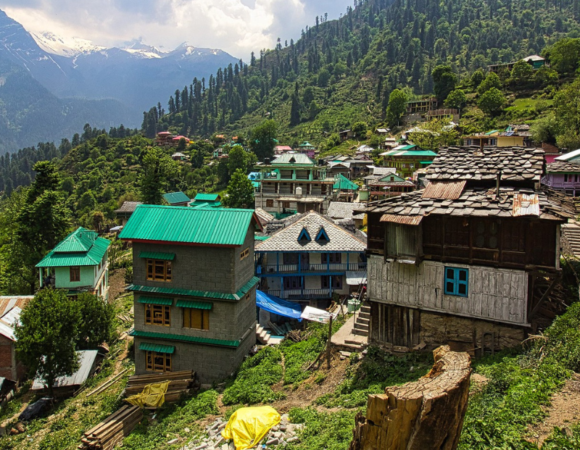
10 Best Hill Station In Himachal Pradesh, Highlights, FAQ’s
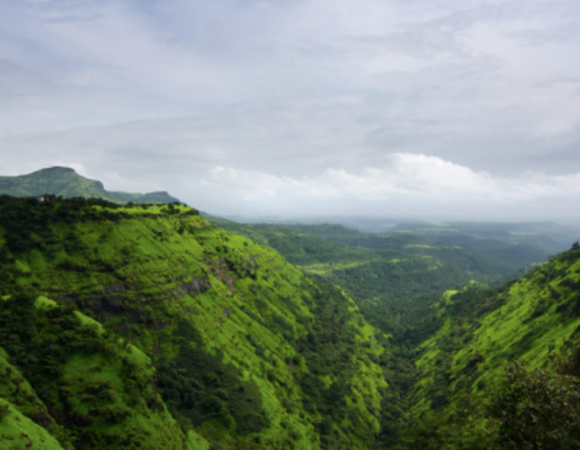
10 Best Hill Stations In Maharashtra, Highlights & FAQ’s
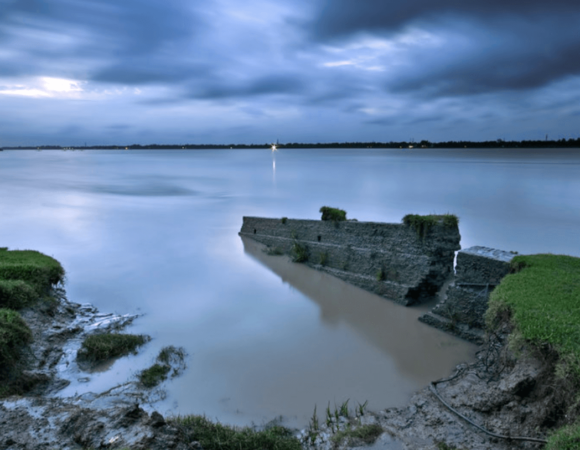
10 Best Hill Stations In West Bengal – Best Time, How to Reach Highlights & FAQs
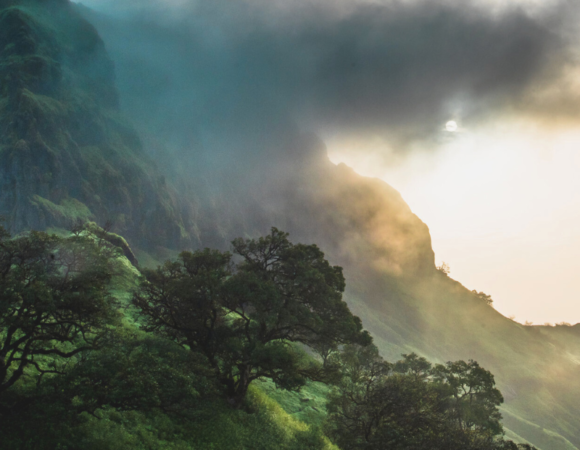
10 Best Maharashtra Trekking Places, Highlights, Treks & FAQ’s
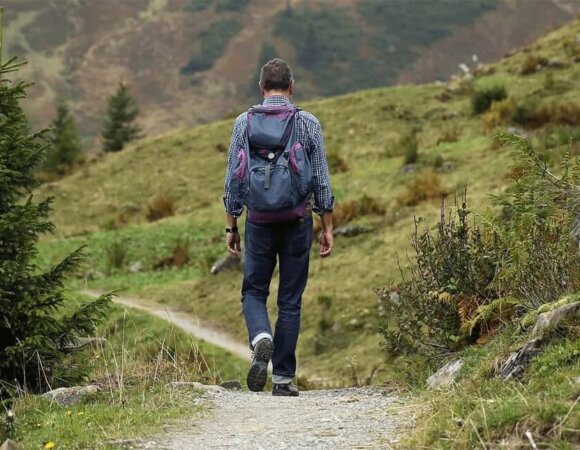
10 Best Trekking Places Near Delhi In 2024 & FAQ’s

10 Best Treks in Himachal That You Can Do in Winters
Add a comment cancel reply.
Save my name, email, and website in this browser for the next time I comment.
Things To Carry On Your Trek
Book your experience with us.
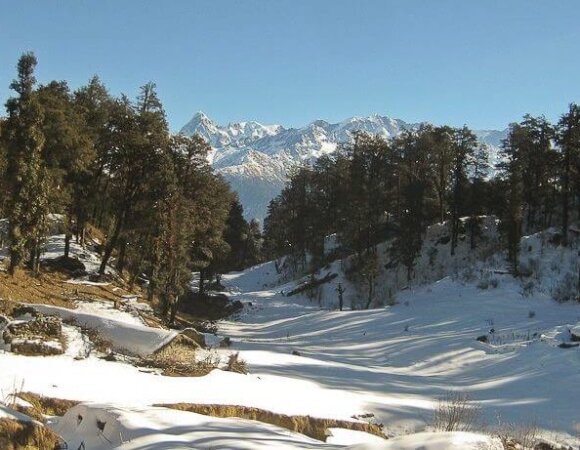
- Amenities 5
Dayara Bugyal Trek
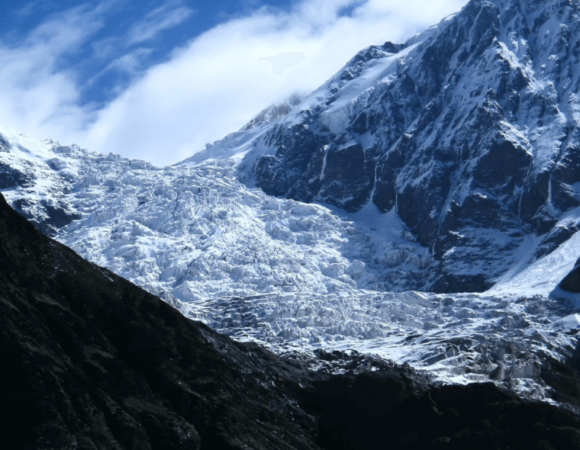
Pindari Glacier Trek
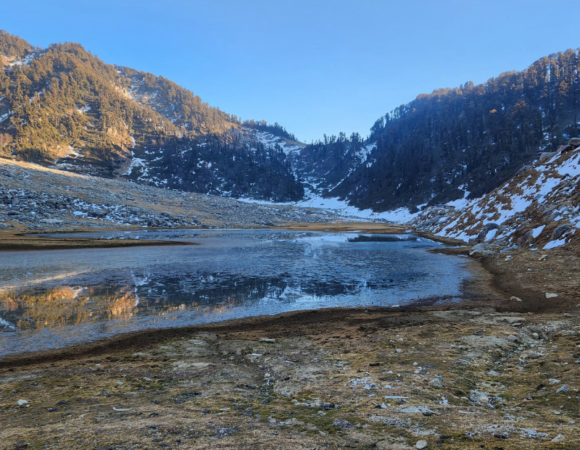
Kareri Lake Trek
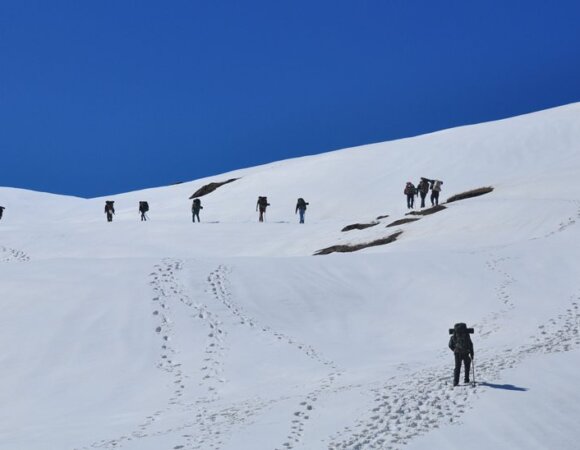
Panwali Kantha Trek
Book your unforgettable experience with us, reset password.
WhatsApp Us
- More Networks
Panch Kedar Trek, Uttarakhand | Complete Guide
Region: Uttarakhand
Base Camp: Rishikesh
Grade: Difficult
Distance: 95 km
Min Age: 15 Years+
Best Season: May – Oct
Trek Description
In the heart of the majestic Himalayas, where snow-capped peaks touch the heavens, lies a sacred pilgrimage route known as Panch-Kedar. The term “Panch” signifies ‘Five,’ and “Kedar” represents the ‘Mountain Lord’—a revered name for Lord Shiva in Hinduism. Panch-Kedar comprises five sacred temples dedicated to Lord Shiva, each representing a specific part of his divine form.
This spiritual journey is not just a physical expedition but a soulful quest that holds a special place in the hearts of Lord Shiva’s devoted followers. According to Hindu texts, it was the Pandavas, the valiant heroes of the Mahabharata, who built these temples.
Your journey begins in the vibrant city of Rishikesh, where our team will guide you through a scenic drive to the enchanting town of Guptkashi. From there, you’ll embark on a trek to Kedarnath Temple, the first of the Panch-Kedar temples. This 16-kilometer trek unfolds with fascinating checkpoints, offering you a chance to witness the divine “back side” of Lord Shiva. The day ends with a visit to the temple during the Aarti ceremony, providing a moment for spiritual reflection.
As your pilgrimage continues, you’ll retrace your steps from Kedarnath back to Guptkashi and journey to Ukhimath, gearing up for the next leg of your adventure. Your path takes you to Ransi Village, the starting point for your trek to Madhmaheshwar. Along this journey, you’ll be treated to stunning vistas and lush meadows, offering a tranquil atmosphere for introspection and devotion.
The trek continues to Tunganath Temple, the highest Shiva temple in the world, representing the “hands” of Lord Shiva. As you trek through dense forests, you’ll connect with the natural world and find solace in the majestic Himalayan landscapes.
The spiritual journey advances to Rudranath Temple, known for its tranquil ambiance and breathtaking vistas. Here, you’ll pay your respects to the “face” of Lord Shiva, drawing closer to the divine essence of his countenance.
Finally, your pilgrimage culminates at Kalpeshwar Temple, where Lord Shiva’s “hair” or “Jata” is venerated. This serene temple, enveloped in lush greenery, provides the perfect setting for meditation and reflection.
The optimal period for embarking on the Panch-Kedar pilgrimage is between May and October, as the doors of Kedarnath open in late April. During this timeframe, pilgrims can access the main temples, as the weather is favorable and the paths are clear.
However, it’s crucial to note that from early November to mid-November, these temples are temporarily closed due to heavy snowfall, rendering them inaccessible. Remarkably, Kalpeshwar Temple stands out as the exception, graciously welcoming devotees throughout the year, making it a year-round spiritual destination.
Your spiritual journey commences as our team picks you up from Rishikesh, a vibrant city that sets the stage for this remarkable adventure. Enjoy a scenic drive covering approximately 180 kilometers, immersing yourself in the breathtaking beauty of the Himalayan landscapes.
As you embark on this soul-enriching expedition, you’ll be treated to awe-inspiring mountain vistas, with the majestic Ganga River accompanying you on your journey. Your path will lead you through several significant checkpoints, each holding its unique charm and significance.
Devprayag: Your first stop, Devprayag, is a place of profound spiritual importance. Here, the holy Alaknanda and Bhagirathi rivers merge to form the sacred Ganga River, marking the inception of your Panch-Kedar pilgrimage. The divine confluence of these sacred waters sets the tone for your spiritual odyssey.
Rudraprayag: Your journey continues to Rudraprayag, where the confluence of the Alaknanda and Mandakini rivers offers another spiritually charged experience. Here, nature’s beauty combines with spiritual significance, providing another opportunity to connect with the divine through the merging of these holy waters.
Agastyamuni: Further along your route, you’ll reach Agastyamuni, a place resonating with the spiritual energy of Rishi Agastya’s meditation. It’s a site where the ancient sage delved deep into his spiritual practice, adding another layer of sacredness to your expedition.
Ukhimath: Your path then leads you to Ukhimath, a town known for its spiritual ambiance and serene surroundings. It’s a place where you can immerse yourself in introspection and soak in the tranquil beauty of the Himalayas.
Guptakashi: Finally, you will arrive at Guptakashi, where you will rest for the night. Guptakashi holds its own significance in the Panch-Kedar pilgrimage. It’s the place where Lord Shiva concealed himself from the Pandavas, prompting Yudhishthira to give it the name “Guptakashi,” signifying the “Hidden Kashi.”
Embark on the true adventure as you set out on a 16-kilometer trek from Gaurikund to the revered Kedarnath Temple. As you traverse this scenic trail, encounter a rich diversity of flora and fauna, including indigenous species of plants and animals.
The trek unfolds with fascinating checkpoints, and as you ascend, be captivated by the natural beauty that surrounds you. At Kedarnath Temple, have the opportunity to witness the divine “back side” of Lord Shiva. The day ends with a visit to the temple during the Aarti ceremony at 8:30 AM in the morning and 6:30 PM in the evening, offering a chance for spiritual reflection.
Retrace your steps from Kedarnath back to Guptkashi, preparing for the next leg of your journey. Embark on a drive to Ukhimath, gearing up for the upcoming trek to Madhmaheshwar.
A scenic drive from Ukhimath takes you to Ransi Village, the starting point for your trek to Madhmaheshwar. The trek covers a distance of 16 kilometers and treats you to stunning vistas along the way. You will also pass through Gaundar Village.
The trek follows the course of Madhmaheshwar Ganga, locally known as Madhu Ganga. The day concludes with an opportunity to witness the Aarti ceremony at the temple, which venerates the “stomach or navel” part of Lord Shiva.
After paying your respects at Madhmaheshwar, trek back to Gaundar and then continue your journey to Ukhimath via vehicle.
Your next destination is Chopta, where you’ll embark on a short but challenging trek. The trail is adorned with the beauty of white and red Rhododendron flowers.
Tungnath , the world’s highest Shiva temple, is your destination, where you’ll worship the divine “hands” of Lord Shiva during the Aarti ceremony at 8:30 AM and 6:30 PM. Following this, you’ll move on to Sagar, your base for the upcoming Rudranath trek, a place named in honor of Lord Ram’s ancestors.
This day marks one of the most challenging yet rewarding phases of your journey. Trek from Sagar to Panar Bugyal, encountering three varieties of high-altitude grasslands known as Bugyals.
The trek takes you through Pung Bugyal, Lyuti Bugyal, and finally, Panar Bugyal. These meadows are adorned with awe-inspiring natural beauty, including dense forests. The steepness of the trek requires preparation, especially for beginners.
Today’s trek takes you to Rudranath, offering breathtaking vistas and excellent photographic opportunities. Pass through Pitra Dhar, a place of worship for ancestors in the Sanatan Dharma tradition, and Devdarshani, which provides your first sight of the Rudranath Temple.
Here, the face of Lord Shiva is being worshipped, and the temple is surrounded by sacred kunds (lakes) such as Narad Kund, Surya Kund, Saraswati Kund, and Chandra Kund. You’ll be captivated by the divine energy of this place. The day concludes with the Aarti ceremony at Rudranath.
Retrace your steps from Panar to Sagar village, allowing you to soak in the serene surroundings once more.
Your journey takes you to Kalpeshwar, the final destination among the Panch-Kedar temples, located in Urgam village of Joshimath. Here, you’ll worship the divine “hair” / ”jata” of Lord Shiva. Kalpa Ganga flows nearby, adding to the sacred ambiance. This temple is easily accessible, with just a 1.5 to 2-kilometer walk. Afterward, drive from Urgam to Pipalkoti.
Note : The road to Kalpeshwar temple is now open from Devgram, which is less than 500 meters away. However, please note that it may not always be in firm condition, so check for road status before planning your visit.
The final leg of your incredible journey takes you from Pipalkoti back to the place where it all began, the spiritual hub of Rishikesh. This marks the end of your transformative Panch-Kedar adventure.
In our view, if you plan to embark on a journey towards a sacred destination, we strongly advise against imposing any stress or burden on animals. Instead, we recommend undertaking the trek independently, as it will provide you with an indescribable experience that will leave an enduring sense of accomplishment for a lifetime.
What’s Included?
Price inclusion.
- Transportation : Transportation from Dehradun to the basecamp and back to Dehradun is included in the package.
- Accommodation : Enjoy comfortable stays during your trek with accommodation in hotels, guesthouses, or dormitories, offered on a twin, triple, or dormitory sharing basis. When camping, rest in spacious tents on a double or triple sharing basis.
- Meals : We provide nourishing and delicious vegetarian meals. Our meals are designed to keep you energized throughout the trek.
- Camping Fees/Permits : All necessary trekking permits and woodland camping fees are included in the package, ensuring a hassle-free experience.
- Trek Equipment : We provide essential trekking equipment, including dining tents, kitchen tents, sleeping tents with mattresses, and sleeping bags. Utensils, ropes, micro-spikes, and gaiters (if required) are also part of our equipment offerings.
- Mules and Porters : Mules and porters are available to carry central equipment, easing your load and allowing you to focus on the trek.
- Qualified Team : Our team comprises experienced and qualified guides, cooks, helpers, and porters who are dedicated to making your trek safe and enjoyable.
- Basic First Aid : A basic first aid kit with an oxygen cylinder and a helmet (if required) is available to address any potential health concerns during the trek.
- Expert Assistance : You can always reach out to our experts for any queries or assistance during your trekking journey. Simply contact us at +91-8089693825.
Price Exclusion
- Backpack Offloading : If you prefer to offload your backpack, an additional fee of INR 1050 per bag applies.
- Mules or Porters for Personal Bags : The service of mules or porters to carry personal bags is not included and can be arranged at an extra cost.
- Emergency Costs : Any expenses arising from emergencies during the trek are not included in the package.
- Tips : Tips for the trekking team are optional and not included in the package.
- Items Not Mentioned : Any expenses or items not mentioned in the inclusion section are not covered.
- Stay at Dehradun : Accommodation and meals in Dehradun on the last day of the trek are not included.
- Meals During Transportation: Meals during transportation are not included.
- GST : A 5% Goods and Services Tax (GST) is applicable and not included in the package.
Things to Carry
- 45-60 Ltr Bag Pack With Rain Cover & Comfortable Straps
- Hot & Cold Water Bottle Like Borosil & Milton
- Energy Bar, Dry Fruits & ORS
- Personal Medical Kit
- 2/3 Full Sleeves (Non-Cotton)
- 1 Full Fleece T-Shirt
- 1 Fleece Jacket (Woollen Or Sweater)
- 1 Down Feather/Hollofil Jacket
- 1 Waterproof Jacket/Poncho
- 1 Pair Thermal Inners (Upper And Lower)
- 2 Trek Pants (Avoid Shorts & Denim Pants)
- 1 Pair of Waterproof Gloves
- 1 Pair of Woollen Gloves
- Woollen Cap
- 4 Pairs Of Cotton Socks
- 1 Pair Of Woollen Socks
- 1 Pairs Of Sunglasses (U/V Protected)
- 1 Neck Gaiters (Buff)
- 1 Waterproof & High Ankle Trekking Shoes
- 1 Pair Of Floaters
- Hand Sanitizer & Sunscreen Lotion
- Toothbrush And Toothpaste
- Toilet Paper And Wet Wipes
- Quick Dry Towel
- Lip Balm & Antibacterial Powder
- Moisturizer
How To Reach
The nearest airport to Rishikesh is the Jolly Grant Airport in Dehradun, which is approximately 35 kilometers away. From the airport, you can hire a taxi to reach Rishikesh. Several domestic flights connect Dehradun to major Indian cities.
The nearest railway station to Rishikesh is Yog Nagri Rishikesh Railway Station, which is well-connected to major Indian cities. From there you have to go to Rishikesh Bus Stand or Natraj.
Rishikesh is easily accessible by road and is connected to major cities in northern India. You can hire a taxi or take a bus from cities like Delhi, Haridwar, or Dehradun. Rishikesh has a well-maintained bus station, and you can find both government and private bus services that connect it to nearby towns and cities. Bus journeys offer an economical and convenient way to reach Rishikesh.
Difficulty Level of Panch Kedar Yatra
- Kedarnath: Suitable for All Levels – This pilgrimage destination offers a trek that falls within the easy to moderate range, making it accessible to a wide range of travelers.
- Madhyamaheshwar: Approachable for All – The trek to Madhyamaheshwar is characterized as easy to moderate, accommodating both novice and moderately experienced trekkers.
- Tunganath: Beginner-Friendly – Tunganath is a great choice for those with varying trekking experience, as it is categorized as an easy to moderate trek.
- Rudranath: Moderate to Challenging – This trek poses a moderate to difficult level of challenge, making it suitable for trekkers with some prior experience and a good fitness level.
- Kalpeshwar: Easily Accessible – Kalpeshwar stands out as an easily reachable destination, offering a straightforward trek suitable for trekkers of all skill levels.
Best Time for Panch Kedar Yatra
The optimal period for embarking on the Panch-Kedar pilgrimage is between May and October, as the doors of Kedarnath opens on the 25th of April and are the first ones to open. During this timeframe, pilgrims can access the main temples of Kedarnath, Tunganath, Madhyamaheshwar, and Rudranath as the weather is favorable and the paths are clear.
However, it’s crucial to note that from early November to mid-November, these temples are temporarily closed due to heavy snowfall, rendering them inaccessible.
Remarkably, Kalpeshwar Temple stands out as the exception among the Panch-Kedar temples. It graciously welcomes devotees throughout the year, with its doors remaining open even during the winter months when the other temples are closed due to the snowfall.
This unique feature allows pilgrims to seek the blessings of Lord Shiva at Kalpeshwar regardless of the season, making it a year-round spiritual destination.
More Info of Panch Kedar Yatra
After the tumultuous events of the Mahabharata, the virtuous Pandavas found themselves burdened by a profound sense of remorse. Their participation in the great war had resulted in the deaths of not only their own kin but also their revered teachers and numerous others.
These transgressions against “ Dharma ,” the sacred code of righteous conduct, weighed heavily on their hearts, and they were aware that these sins could obstruct their path to “Moksha,” the ultimate liberation of the soul.
The Pandavas’ deeds during the Mahabharata, including using deceitful tactics on the battlefield of Kurukshetra, had not found favor with Lord Shiva, the divine preserver of righteousness. In their earnest quest for redemption and purification, the Pandavas resolved to seek the Darshan (divine vision) of Lord Shiva, believing that his blessings held the key to absolving them of their grave sins.
As the Pandavas embarked on their journey towards the majestic Himalayas, their hearts filled with both hope and trepidation. Upon reaching the hallowed presence of Lord Shiva, they encountered an enigmatic turn of events. The omniscient Lord Shiva, in his infinite wisdom, chose to conceal his true form and assume a guise to test the sincerity of the Pandavas’ penance.
Lord Shiva, the cosmic dancer, transformed himself into a Nandi, a sacred bull, and took refuge amidst the idyllic Himalayan landscapes. From afar, the Pandavas beheld the divine bull, unknowingly standing before their beloved deity.
Yudhishthira, the wise and noble leader among the Pandavas, perceived that Lord Shiva had concealed himself from them, recognizing that their sins were not yet fully atoned for. In reverence and acknowledgment of this divine act of concealment, he declared that the very place where Lord Shiva had veiled his presence would henceforth be named Guptakashi, signifying the “Hidden Kashi.
It was Nakul and Sahadev, the observant and perceptive brothers, who first noticed the uniqueness of the bull. Sensing the divine presence within this unusual manifestation, they shared their discovery with the mighty Bhima, the strongest among the Pandavas.
Learning of Lord Shiva’s transformation into a bull, Bhima, fueled by his unwavering devotion and determination, embarked on a quest to find and capture the divine being.
The divine encounter between Bhima and Lord Shiva, now in the form of the Nandi bull, carried a profound significance. As Bhima approached, Lord Shiva chose to merge with the earth itself, disappearing from Bhima’s sight. Yet, it is said that Bhima’s unshakeable faith and spiritual insight enabled him to recognize the divine presence that had merged with the earth.
The legends narrate that as Bhima sought to capture Lord Shiva, the earth yielded to his devotion, and numerous divine Lingas (representations of Lord Shiva) emerged from different points on the ground. These Lingas served as sacred reminders of Lord Shiva’s omnipresence and became revered pilgrimage sites, each enshrining a fragment of the divine essence.
In this way, the Pandavas’ journey to seek Lord Shiva’s forgiveness and redemption transformed into a profound spiritual odyssey, leaving behind a trail of sacred sites known for their deep significance and spiritual potency.
This tale of divine concealment, discovery, and ultimate revelation encapsulates the timeless theme of human devotion and the divine’s boundless compassion, a theme that continues to inspire countless pilgrims and seekers on their spiritual quests. The different places from where the different body parts of Lord shiva occurred are:
Kedarnath Temple – The Back Side of Lord Shiva
Our journey begins with Kedarnath, the first of the Panch-Kedar temples. Located amidst the breathtaking Garhwal Himalayas, Kedarnath Temple is perched at an altitude of approximately 11,755 feet above sea level. Devotees believe that this temple represents the “back side” of Lord Shiva. The temple’s surroundings are a testament to nature’s grandeur, with the Mandakini River flowing nearby and towering peaks as witnesses to the divine presence.
Madhya-Maheshwar Temple – The Stomach and Navel Part of Lord Shiva
Continuing our spiritual quest, we reach Madhya-Maheshwar Temple. This sacred site is said to embody the “stomach and navel” of Lord Shiva. Situated in the midst of lush meadows and pristine wilderness, the temple offers a tranquil atmosphere for introspection and devotion. The journey to this temple, surrounded by serene beauty, is an experience of spiritual awakening.
Tunganath Temple – The Hands of Lord Shiva
Next on our pilgrimage is Tunganath Temple, representing the “hands” of Lord Shiva. Perched at an altitude of approximately 12,073 feet, it is the highest temple dedicated to Lord Shiva in the world. The trek to Tunganath takes devotees through dense forests, offering a chance to connect with the natural world and find solace in the majestic Himalayan landscapes.
Rudranath Temple – The Face of Lord Shiva
As we advance on our spiritual journey, we come to Rudranath Temple, the sacred site symbolizing the “face” of Lord Shiva. The hardest trek among Panchkedar is nestled in the Garhwal Himalayas, this temple is known for its tranquil ambiance and breathtaking vistas. Devotees believe that visiting Rudranath brings them closer to the divine essence of Lord Shiva’s countenance.
Kalpeshwar Temple – The Hair (Jata) of Lord Shiva
Our pilgrimage culminates at Kalpeshwar Temple, where Lord Shiva’s “hair” or “Jata” is venerated. This serene temple is enveloped in lush greenery and a sense of spiritual serenity. The calmness of the surroundings provides the perfect setting for meditation and reflection. This is the only kedar which is always open unlike the rest of the Kedar’s and is most easily accessible.
The sequence of these temples mirrors the anatomy of the lord, allowing pilgrims to pay their respects to different aspects of his form. As one embarks on this sacred voyage, they not only traverse the rugged terrain of the Himalayas but also embark on a journey within, seeking spiritual enlightenment and communion with the Lord.
The Panch Kedar region is not only a spiritual haven but also a sanctuary for a diverse range of flora. Spring brings vibrant colors to the landscape, with brilliant red, pink, and white rhododendron blossoms adorning the countryside. Deodar and pine forests offer thick foliage along the hiking trails, adding to the area’s natural charm.
The rare Brahmakamal, also known as Saussurea obvallata and Uttarakhand’s state flower, showcases its uniqueness during the monsoon season. Higher elevations host juniper and birch trees, enriching the area’s biodiversity.
As you ascend into the Himalayas, alpine meadows come to life with an array of alpine flowers, including primulas, gentians, and anemones. The region is also home to Himalayan Balsam, known for its exploding seed pods, and Cyananthus lobatus with its bell-shaped blue or purple blooms.
Himalayan geraniums adorn gardens with exquisite pink to purple blossoms, while Anaphalis Margaritacea, also known as pearly everlastings, retain their color even after drying. Rudranath’s meadows are where you may find the striking yellow Ranunculus hirtellus, and Himalayan Bistort, or Bistorta affinis, thrives in the Himalayas.
The Panch Kedar region is a haven for diverse wildlife. The elusive Himalayan Musk Deer, found in the deep woodlands, is known for its unique scent glands that produce musk. The Himalayan Monal, Uttarakhand’s official bird, enchants with its colorful plumage and distinctive vocalizations.
Blue Sheep, or Bharal, frequent the high mountain slopes and serve as essential prey for local snow leopards. The Himalayan Tahr, a robust herbivorous mammal, roams the alpine meadows.
The rare and elusive Snow Leopard, representing the region’s pristine environment, has successfully adapted to the challenging mountain habitat. Himalayan Black Bears, omnivores, inhabit the forests near the Himalayas and play a vital role in the ecosystem.
Red Foxes are versatile carnivores that can be found at lower elevations. The majestic Himalayan Griffon Vulture soars gracefully on thermals, scavenging carrion and playing a crucial role in maintaining alpine ecology.
- Kalimath Temple, near Madhmaheshwar (Rudraprayag) : Located near Madhmaheshwar in Rudraprayag, the Kalimath Temple is a place of spiritual significance. It is dedicated to the Goddess Kali, and the serene surroundings make it a perfect spot for meditation and reflection.
- Anusuya Mata Temple, near Rudranath (Gopeshwar) : Nestled near Rudranath in Gopeshwar, the Anusuya Mata Temple is a sacred site. It is dedicated to Goddess Anusuya, known for her devotion and hospitality, and the temple’s location offers breathtaking views of the Himalayan landscape.
- Gopinath Temple, near Rudranath (Gopeshwar) : The Gopinath Temple, situated close to Rudranath in Gopeshwar, is dedicated to Lord Krishna. It’s a place where devotees come to seek spiritual solace and admire the temple’s architectural beauty.
- Deoriya Tal, near Tunganath (Chopta) : Deoriya Tal, located near Tunganath in Chopta, is a pristine and serene lake surrounded by lush forests. It’s a popular trekking destination and an ideal spot for nature enthusiasts to soak in the natural beauty.
- Chandrashila Peak, near Tungnath (Chopta) : Chandrashila Peak, near Tungnath in Chopta, is a trekkers’ paradise. The summit offers panoramic views of the snow-clad Himalayan peaks and is a must-visit for adventure seekers.
- Shri Markandeshwar Temple, near Tunganath Makku Village (Chopta) : The Shri Markandeshwar Temple, located near Tunganath Makku Village in Chopta, is dedicated to Lord Shiva. It’s not only a religious site but also a place to appreciate the tranquil surroundings.
- Bansi Narayan Temple, near Kalpeshwar Temple Urgam Village (Joshimath) : Situated near the Kalpeshwar Temple in Urgam Village, Joshimath, the Bansi Narayan Temple is dedicated to Lord Vishnu. It’s a place of devotion and architectural beauty set against a backdrop of scenic splendor.
- Dhyan Badri Temple, near Kalpeshwar (Joshimath) : The Dhyan Badri Temple, near Kalpeshwar in Joshimath, is a sacred site where Lord Vishnu is worshipped. The temple’s location in the serene Himalayan landscape offers a tranquil atmosphere for spiritual seekers.
Map of Trail
The Panch Kedar temples vary in difficulty levels. Rudranath is considered the toughest trek among them. Kedarnath and Madmaheshwar are moderate in terms of difficulty. The easiest ones to reach are Kalpeshwar and Chopta Tungnath.
During the Panch Kedar Yatra, you can witness stunning views of various Himalayan peaks, including Kedarnath, Neelkanth, Chaukhamba, and more, depending on the temple you visit.
You will come across ATMs in various towns during your Panch Kedar Yatra. However, it’s advisable to carry sufficient cash or make transactions in Rishikesh before embarking on the journey.
Charging points may be limited during the trek, so it’s recommended to carry a power bank for your electronic devices.
/ Per Person
5% GST & Transportation Cost
Cancellation Policy
Available Dates
Call for Booking
Similar Treks
Hampta pass trek, kuari pass trek, gidara bugyal trek, gaumukh tapovan trek, leave a comment cancel reply.
Save my name, email, and website in this browser for the next time I comment.
+ Transportation Cost
Subscribe to our newsletter
Get news and discounts straight to your inbox
We are Associated With
Himalayan Dream Treks
Himalayan Dream Treks is a mission-driven outdoor adventure company. The aim is to make destinations that aren’t always found on standard maps available to people who enjoy visiting new locations.
Important Links
Why Choose Us?
Advance Payment
Cancellation Policy & Refund
Privacy Policy
Terms & Condition
Career At HDT
Contact Details
+91-80896 93825
+91-94565 46051
[email protected]
Office Address
Dehradun Office :
10 B, Mothorowala Rd, Dharampur, Ajabpur Kalan, Dehradun, India, Uttarakhand, 248001
© All rights reserved 2024 Himalayan Dream Treks
(To the Himalayas and Beyond)
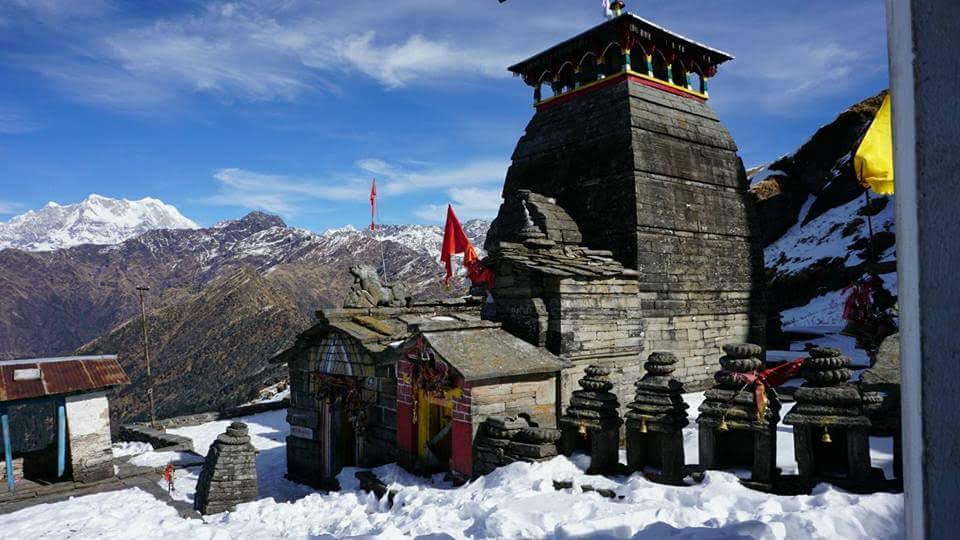
Panch Kedar Trek
Journey to the five holy abodes of shiva, panch kedar story.

Panch Kedar Trek Itinerary:
Day 1 dehradun to karanprayag via devprayag & rudra prayag.
We embark on this surreal trekking journey intending to capture the most astounding confluences along the road to Karanprayag. The deep and serene waters of River Ganga accompany us till Dev Prayag. A short picture-break at this holy confluence of Alaknanda and Bhagirathi would already blow your mind. It is the last of the five holy Prayags. The confluence is believed to be godly and thus is the name. The pious place has served as the meditation haven for Shri Rama and also King Dasharatha. The spot is now known as Raghunatha Temple that dates back to Treta Yug. A myriad of Hindus flock at Baitalshila, a natural spring at Devprayag. The main reason being the magical powers of the water to cure skin diseases. Further along, this topsy turvy drive takes us to Rudra Prayag, the Confluence of River Mandakini and Alaknanda. We shall explore this riveting confluence on the last day of our Panch Kedar Trek. Meanwhile, a theatrical story awaits you at Karnaprayag. The most tragic character of Mahabharat, Karna, is believed to have worshipped Sun God at this confluence. After being killed by Arjuna in the battle, Lord Krishna cremated Karna at the very site where he meditated at this confluence. You may even explore the one and only Karna Temple of India perched on a huge boulder at Karanprayag. Besides this, the Uma Devi Temple with its Swayambhu Idol of Devi Parvati is an iconic attraction too. While the mythology fuels your ecstasy, the sublime sight of the rivers soaked in varied hues of waters make you go wow. Our night stay would be at Karnaprayag.
Day 2 Karnaprayag - Urgam - Kalpeshwar - Urgam
We shall commence the journey after breakfast. Around 2.5 hours of scenic drive via Nandprayag and Gopeshwar brings you to the most beautiful Urgam valley. River Kalpganga and the terraced fields of apple, rajma and potatoes feel like an entirely different world. If you are visiting in mid-summer, the pleasant sight of swaying fields of flowers awaits you. A short hike with the views to marvel you is what you can expect on this beautiful day. Kalpeshwar, the first temple on our Panch Kedar Trek, is ringed by lofty mountains. It acts as an amphitheatre to gaze at the peak like Nanda Devi, the highest peak of the state. Additionally, the view of Mt. Trishul and Nanda Ghunti is also a delight to soul. However, the spiritual vibes of the valley are derived from the ancient legends. The folklore claims it to be the favourites of the sages like Arghya and Durvasa who meditated here. The main attraction, the stone structure of Kalpeshwar Temple, is quite an ancient construction. It can be reached through a narrow cavernlike path. As per the Panch Kedar legend, the tresses or ‘jata’ of Lord shiva appeared at Kalpeshwar. This fetches it an alternate name of Jateshwar Mahadev. Around 150 meters beyond the temple is another divine spot of Dhyan Badri. It doesn’t fall on Panchbadri list, nonetheless it is a different experience to visit. Our Panch Kedar trek is planned to let you experience each of the Panchkedars at your pace. Take the advantage of this and relish the views. Optionally, you can prefer to be teleported back in time while listening to the folklores.
Day 3 Urgam to Kalgot/Dumak (2,215 m)
Start your day by quickly basking in the warm sunrays while eating a palatable local breakfast. This is to energise you for the 12 km long trekking trail from Urgam to Dumak. This remote village is surrounded by refreshing waterfalls fed by mountain springs. It is an absolute delight to stay at this village oozing rustic charm. The trail is easy to moderate with short stretches of gentle ascents. You may take a fancy in chasing the wild butterflies and moths encountered on the way. Your fanciful trek amidst forest might be interrupted by rustling of leaves and cackling calls of langurs. The dance of the sun with the shadows makes this day’s trek all the more dramatic. This easy trail is your chance to experience the colourful flora of Garhwal Himalayas.
Day 4 Kalgot\Dumak to Pannar Bugyal - 3400 mts
This day starts with a scrumptious breakfast followed by a meditative trek amidst forest. Every step feels like a step closer to the almighty. Today’s trek is all about vertical climb, rocky patches and being close to nature. The trail is absolutely breath-taking. You must warm-up yourself with basic exercise before starting the trek to avoid feeling it as ‘breath- taking’ in literal sense. Take enough water breaks to keep yourself hydrated. This is essential as it is the first day of actual trekking. Also, be alert for the calls of birds around. You may spot Himalayan Monal, Black Drongos or Green Bee Eaters. The trail passes completely through a desolate forest route. Spotting of snakes, wild moths and owls is going to be a thrilling experience. Pannar Bugyal, as the name clarifies, is an open meadow from where you can see a clear view of Mt.Trishul, Nanda Devi, Nanda Ghunti and Bandarpoochh cliff. The sunset paints the peaks in hues of pink and saffron. Needless to say, it is an awe-inspiring experience for every trekker.
Day 5 Panar - Rudranath/Panch Ganga
Start after a breakfast with the refreshing views. Today’s trail is a mix of ascents and descents. The morning starts with an ascent to reach the ridge. from here the view of the lush green Panar Bugyal can literally leave you speechless. All the major peaks encircling the valley would be visible on and off. During Spring and Monsoon, the ridge welcomes you with vibrant wild flowers and shrubs on both the sides. The first important spot to cross is Pitradhaar. It is believed to be the point from where our ancestors’ souls have transcended to the other world. Further on the same trail falls Panch Ganga. This is the highest point of the ascent today. This windy spot is decked up with prayer flags and bells. You may rest here for a moment to take a picture or two. The total trekking duration till Panch Ganga is around 3.5 hours. The trail turns moderately easy as you may quickly dart down the valley from here. After a few stretches of ascents and descents, the Shrine of Rudranath is visible. This auspicious site is made more divine by the glistening peaks of Nanda Devi and Kamet. There is small stream called ‘Vaitarini’ near the temple which claims to have the ‘Water of Salvation’. The temple premise has a lot to explore for nature lovers. You must not miss ‘Suraj Kund’, ‘Tara Kund’ and ‘Chandra Kund’. Attend the evening pooja and spend the night under the sky crammed with stars.
Day 6 Panchganga - Anusuya devi via Naola Pass to Mandal drive to Chopta
Trekking route for today is the same till Panchganga. From this spot onwards, the trail goes down towards Naola Pass. During and post-monsoon, Naola Pass is literally a treat to eyes. With its lush green craggy ridge and views to mesmerize, Naola Pass is trekkers’ favourite spot. Not many pilgrims take this route and thus, the path remains exclusive for trekkers. Anusuya Devi Temple is a small unattended shrine. She was the wife of Rishi Atri. According to one of the mythological events, Brahma, Vishnu and Mahesh visited Devi Anusuya to test her devotion. They came at the same spot in the form of three Brahmins. Her chastity and immense devotion made the three Gods transform themselves into infants. The same infants, Durvasa, Soma and Datatreya are now revered as saints in Devbhoomi Uttarakhand. Hence, the birthplace of these renowned souls makes Anusuya Devi shrine, an important place of worship for the locals. If time permits, you may take a diversion to explore Atri Rishi Cave. After this charismatic hike on a desolate trail, we shall head straight down to Mandal. From here, Chopta is just 1.5-hours-long scenic drive.
Day 7 Chopta - Tungnath Trek and further to Chandrashila (3,950 m)
It is a relatively moderate 2 KM climb to Tungnath, the highest Shiva Temple at 3470 metres. It is one of the Panchkedars where the ‘bahu’ or the limbs of the bull appeared. The temple is said to have been built in ancient times by the Pandavas. The black-stone temple structure is located just 2-kilometre below the mighty Chandrashila Peak. The views from here are as exhilarating as the divine legend of Panchkedar. Chopta- Tungnath trek claims to have the shortest approach path from Chopta Road. The cemented steps with 11 scissor cuts unravel the sight that would leave you speechless. Along the climb too, widening valley and the peaks greet at every clearing. The view of the Garhwal Valley clad in varied hues of Rhododendron flowers during the month of March and April is mesmerizing. The Tungnath range is rich in flora and fauna paving way to the establishment of the Botanical Station here. Chopta-Tungnath range also has a decent population of the birds like Golden Eagle, Himalayan Monal, Bearded Vultures, woodpeckers, Upland Buzzard, Ashy Wood-pigeons, and European Goldfinch. Among the animals, the main trail is famous for trekkers being accompanied by Bhutia Dogs all the way up to the peak. If your luck supports, you may encounter spotted deer and musk deer too. The summit for Chandrashila is just 1 hour or 2 kilometres of a mildly strenuous climb from Tungnath. It is in literal sense an amphitheatre to admire the mountains and valleys. From Chandrashila Summit you can see the snow-capped peaks like Mt. Nanda Devi, Trishul, Nanda Ghunti, Kamet, Bandarpoochh, Neelkanth, Chaukhambha and Kedar Dome. Feel the divinity at the very location where Lord Ram and even the ardent devotee Ravana had once meditated to invoke Lord Shiva. Once you have had enough of this surreal sight, we shall trace back the same path to reach Chopta.
Day 8 Chopta - Deoria Tal - Sari
Deoriatal, at an altitude of 2438 metres, is a long trek of about 12-13 kilometres with descending trail from Chopta. The trail slides through terraced fields, blooming rhododendron flowers and dense patches of Banj Oaks. You can hear and may spot the birds and animals of Chopta-Tungnath Trek range on this trail as well. Deoriatal is a pristine location encompassed by soaring mountains. Mt. Neelkanth, Chaukhambha, Bandarpoochh, and Kalanag overlook this divine lake. Once upon a time, it was the bathing pond for Gods and Rishis. It has an alternate name of ‘Indra Sarovar’. You must take a stroll around this lake where the mysterious Yaksha appeared to ask questions to Yudhishthira during their exile period. You may take an opportunity to just sit and feel the serenity punctuated by the calls of birds. The beauty of this lake is impeccable in winters as well. After this rejuvenating experience at Deoriatal, you would hike for 3-km to reach Sari Village. Relax and prepare for the challenging trek of Day 9.
Alternatively if we want to make the day easier, we can drive to Sari from Chopta which will take less than an hour and proceed to trek to Deoria Tal in another hour and a half. On the consecutive day we descend back to Sari and continue our journey ahead to Madhyamaheshwar.
Day 9 Sari to Ransi (1 hour Drive) & trek to Madhyamaheshwar trek
An hour-long drive from Sari through tiny hamlets and cultivated fields takes you to Ransi. This is our base for the 16-Kilometre-trek to Madhyamaheshwar. The trail has varied transition from dense forest trails, swaying farms, Garhwali villages to finally the open meadows of Madhyamaheshwar. A plethora of birds including the endangered species of Himalayan Monal can be spotted on this trail. Musk deer are a common sighting too, thanks to the breeding centre located in the vicinity. The first of the tiny hamlets on the way to Madhyamaheshwar is Gaundhar. After 2 kilometres from here lies the Madhyamaheshwar Ganga or Madhu Ganga. It is a holy confluence of Saraswati Ganga and Morkhanda Ganga. After some similar chattis or tiny villages like Gaundhar, you finally reach an open meadow of Madhmaheshwar temple. The sturdily standing Chaukhambha seem to be saluting Lord Madhmaheshwar. The name signifies the middle-part or the ‘navel’ and ‘stomach’ that manifested at this place. A navel- shaped lingam is worshipped at the main shrine. The temples of Devi Saraswati and Ardhnarishwar are among the other shrines in this complex. The older temple is located at a little distance from the current shrine. It is known as Vridh-Madhmaheshwar. Nonetheless, the sublime beauty awaits you after a steep climb above this temple. The little shrine at the bank of the pond is famous as Bura-Madhyamaheshwar. It showcases the sublime vistas consisting of the peaks of Chaukhambha, Trishul, Neelkanth, Panchuli and Kamet. The flabbergasting drama shall not be missed at sunset which is as magical as the vibes here. We shall spend the night amidst the craggy mountains on the gentle meadows of Madhmaheshwar.
Day 10 Madhyamaheshwar to Ransi - Drive to Guptkashi
After a tranquil night spent at Madhyamaheshwar, now it is the time to pay our prayer to the main Kedarnath shrine. The same route down via chattis that you crossed on your way up takes you back to Ransi. Traversing through the splendid valley created along Mandakini, we shall reach Guptkashi. This is not just a stopover but also a place which holds a great importance in Hindu scriptures. As per Mahabharata, when Pandavas were searching for Lord Shiva, he was hiding at this very location. The name ‘Guptkashi’ is derived from this instance. Lord Shiva is worshipped here as Vishwanatha and the main shrine is dedicated to Him. Right in front of the temple is the Manikarnika Kund. This kund is supposed to be an underground or ‘gupt’ (hidden) confluence of Ganga and Yamuna. The rivers are supposed to be flowing underground till they manifest at this conjunction. Today’s route would be glistened by the fluttering flowers of Magnolia or Champaka. These flowers are the speciality of the valley spread around Mandakini. Even the town Guptkashi has abundance of Champaka flowers. It serves as a decor for almost every home. You may shop or refill your wallet with cash at Guptkashi’s small market.
Day 11 Guptkashi to Gaurikund drive and trek to Kedarnath (3,584 m)
Start the long day with a crazy ride to Gaurikund from Guptkashi. The route passes through another holy confluence. Here River Basuki merges with River Mandakini to form the gorgeous Son Prayag. Ice-capped mountain views accompanies you throughout the journey. The motorable road ends at Gaurikund, another town associated with a fanciful legend. Folklore says that Gauri, who later became wife of Shiva, initiated her penance here. She was adamant to win over Shiva’s love. It was at this very place surrounded by hot-water springs that Shiva-Parvati’s love story took a turn. They finally tied the knot at Triyugi(Tirju) Narayan, located not too far from here. The trail is well defined with gravelled path to begin with and later the cemented steps. You would be accompanied by many devotees heading to Kedarnath on ponies. The trail offers splendid views of untouched waterfalls gushing down the valley to meet Mandakini. You will also walk through many of such waterfalls on the trail as well. Look for the dazzling rainbows here if it is a sunny day. River Mandakini flows on your right till the famous Bailey Bridge. This bridge was washed away during 2013 flood and is now reconstructed by BRO. The ascent starts from this point onwards. It continues till the plain plateau where the temple is located. By now, the shabby constructions of lodges surrounding the temple would be visible. Straight walk from here takes you to your destination. The Kedarnath temple, at an altitude of 3584 meter, is located right in the lap of the massive Kedarnath Peak. Enjoy the setting sun creating a scintillating backdrop for the temple. Take the blessings of the lord during the evening aarati and prepare for a cosy slumber.
Day 12 Kedarnath to Gaurikund to Rudraprayag
Get up early morning and devour the beauty that surrounds you. The awe-inspiring sight of Sumeru, Kedarnath Peak and Kedar Dome is the most divine thing in the Himalayas. Enjoy this most-visited pilgrim of Uttarakhand and get ready for the descent. Post-breakfast, trace down the same path, greeting the birds, shrubs and the gurgling waters of Mandakini. By noon we reach back to the base at Gaurikund and board on the vehicle for the return journey. A motorable road from Gaurikund via Guptkashi takes us back to Rudraprayag. One of the holy Panch Prayags, Rudraprayag, has numerous legends to tell. The name of this Prayag is attributed to the Rudra form of Shiva. He is said to have performed tandav at this Prayag. Another legend attributes the name to Shiva’s act of playing Rudra Veena at this confluence. The story of Naradmuni playing Veena at Rudraprayag is also well-known. You must spend the evening at the confluence to relieve all the tiredness of the trek. Apart from the mythological mentions, Rudraprayag was widely popular among wildlife lovers. The town has now modernised way too much with the ever-expanding construction sites. However, once upon a time, the wild tigers from Kedar and Tungnath Forest range roamed till Rudraprayag. One such man-eating wild tiger mentioned by Jim Corbett resided right here at Rudraprayag.
Day 13 Rudraprayag to Dehradun
Post-breakfast board on the vehicle and reach back to Dehradun/Rishikesh/Haridwar by evening and depart with the fond memories of the Panch Kedar trek etched in your heart.
Day 2 How difficult is the trek & what are the challenges?
Panch kedar trek gallery.
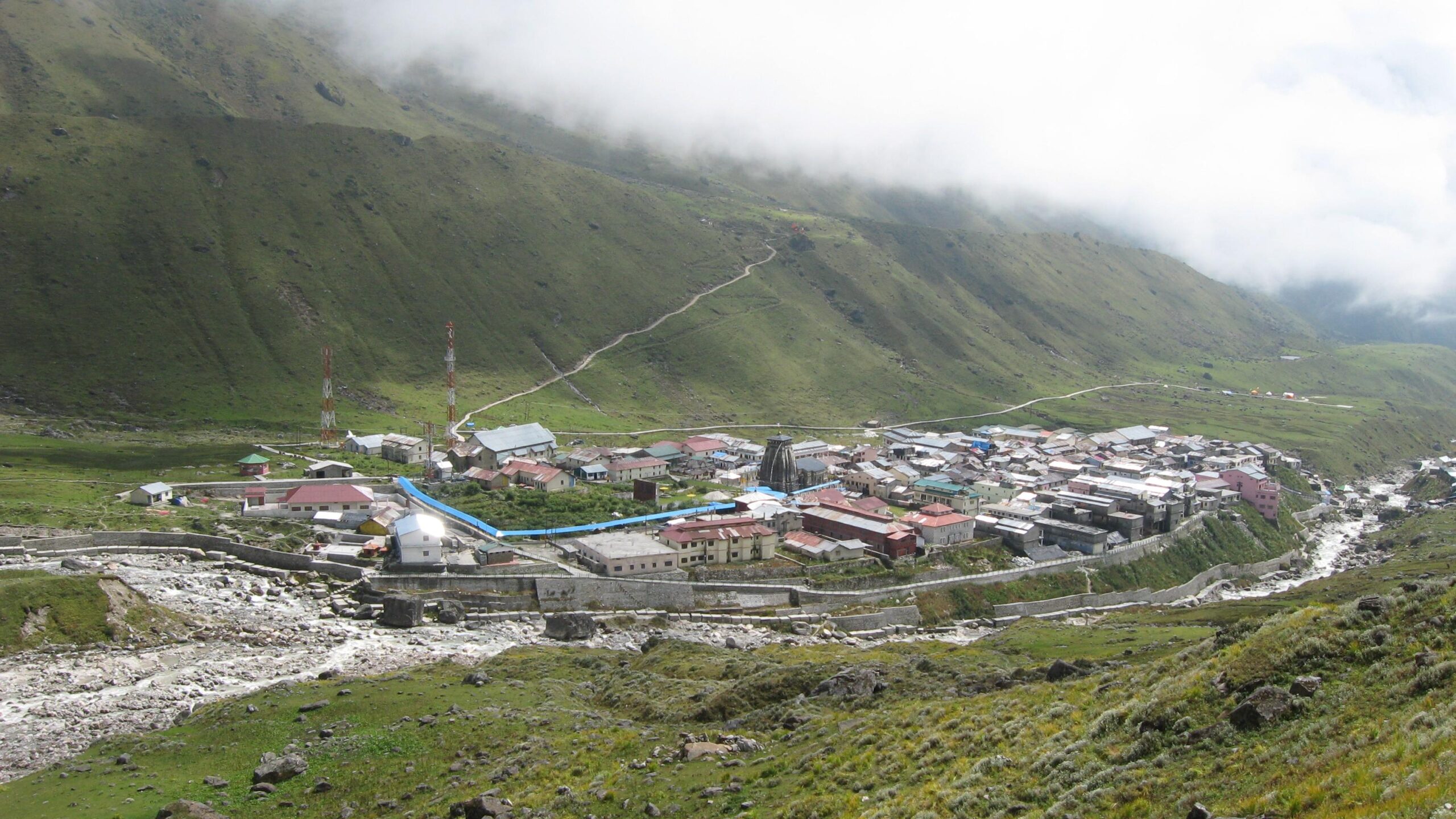
Panch Kedar Trek FAQs
What are the altitudes of the panch kedar temples.
The altitudes of the Panch Kedar temples are as follows: Kedarnath (3583m), Tungnath (3680m), Rudranath (2286m), Madhyamaheshwar (3497m), and Kalpeshwar (2,200m).
What is Panch Kedar?
Panch Kedar refers to the group of five sacred Hindu temples dedicated to Lord Shiva, located in the Garhwal region of Uttarakhand. These temples are Kedarnath, Tungnath, Rudranath, Madhyamaheshwar & Kalpeshwar.
What is Panch Kedar Trek distance?
The Panch Kedar trek distance is approximately 170-200 kilometers, covering the pilgrimage trail that connects the five sacred temples dedicated to Lord Shiva in the Garhwal region of Uttarakhand.
What is the best time to visit Panch Kedar trek?
The best time to visit the Panch Kedar trek is during the summer months from May to June and in the post-monsoon season from September to October.
What is the best time to do the trek and how is the weather?
What are the top highlights of the trek.
There are no reviews yet.
Your email address will not be published. Required fields are marked *
Your review *
Name *
Email *
Save my name, email, and website in this browser for the next time I comment.
- Transport support from and to Dehradun: starting from pickup on day 1 to drop on day 13.
- Guide and cook fees.
- Rent for camping equipment.
- Forest entry charges.
- Porter and mule support to carry camping equipment. Please note that personal luggage can be carried by mules and/or porters on chargeable basis.
- All veg meals starting from day 1 lunch to day 13 lunch.
- Accommodation throughout the trek. Tented or Guest House, based on location.
- Your designated hotels may not reopen by the time you reach there. While we are making alternate arrangements, do understand that things may not be as “tip-top” as our designated hotels.
- The gurudwara, Hemkund Sahib may not be open. While we are trying to take permission to go to Hemkund Sahib, if it does not happen, then do understand that the pandemic has put restrictions beyond our control.
- Transport to reach Dehradun from hometown.
- Personal expenses like tips, personal medicines, phone calls etc.
- Any transport support during the trek apart from what is included above.
- Accommodation in Dehradun.
- Personal luggage with mass not exceeding 12 kg per bag per person can be carried by porters/mules @ Rs 300 per trekking day per bag.
Upcoming Treks
- 17-07-2021 to 23-07-2021 open
- 17-07-2021 to 23-07-2021 close
Send Request
Your query has been successfully registered. we will contact you within 24 hours., something went wrong.try after sometime..

Panch Kedar Trek
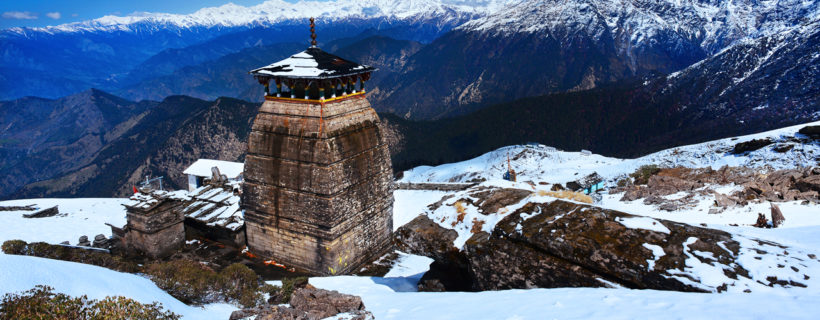
Description
Reviews (1), things to take, available dates, include / exclude.
The five pilgrim site circuit of Kedarkhand in garhwal region is a popular trekking circuit comprising various terrains and landmarks. The holy circuit of Panch Kedar starts from Kedarnath and rounds off to Tungnath, Rudranath, Madhyamaheshwar and ends at Kalpeshwar. Located at various astounding heights ranging from 2200m of Kalpeshwar to 3600m of Tungnath Panch Kedar trek is a remote but highly celebrated pilgrimage circuit in the Himalayan region of Uttarakhand.
According to legends and hindu mythology the Pandavas are said to have built the temples after the great Mahabharata war. It is believed that after the war, the Pandavas left their reign in search of atonement, and in the process, they attempted to seek forgiveness from Lord Shiva.
In contrast, Lord Shiva was deeply affected by the bloodshed and refused to meet with the Pandavas. Lord Shiva hid in the Garhwal Himalayas as a bull, and when one of the Pandava brothers caught him, the bull’s body submerged in the ground, only to later reappear in other forms, which is now known as “Panch Kedar.” The missing bull reappeared in parts in Kedarnath, Rudranath, Tungnath, Madhyamaheshwar, and Kalpeshwar, with the hump in Kedarnath, face in Rudranath, arms in Tungnath, navel in Madhyamaheshwar, and hair in Kalpeshwar.
This Panch Kedar Trek generally starts from Kedarnath and ends at Kalpeshwar temple. Trekkers will not only be covering the beautiful vistas during the on vehicle road but also along the route. The journey will witness high altitudes, rocky terrain, green pastures, many glistening streams and many majestic Himalayan peaks.
Key Points of Panch Kedar Trek
Trek highlights of panch kedar trek.
Even before the trek starts trekkers are subjected to beautiful vistas En route with stunning temples at every few kilometers clearly stamping that yes trekkers are indeed at the Land of Gods ‘ Uttarakhand ”.
The trek officially begins in Gaurikund and takes in a number of campsites and driveways along the way. The majestic views of the Kedarnath trails to the staggering height of Tungnath this circuit tests the physical endurance of devotees and trekkers. This trek will cover various forests of rhododendron trees adorned in crimson and pink colors. The meadows of Pun Bugyal and Punar Bugyal, with the Himalayan Mountains as a backdrop, will be the closest thing to pure bliss. The trail circuit to Panch Kedar is covered in changing vegetation and terrains in Himalayan region after every few kilometers.
Devotees would chant and celebrate the trail for the duration of the journey. The reverberation of “Har Har Mahadev” at various points in the journey will imbues you with a powerful spiritual presence.
The final reach of every temple is enough to overwhelm devotees with the chants of “Mahadev”. Temples covered in long ribbons of marigold garlands, long happy queues of devotees, spectacular glacier and mountain views and the calmness of the Panch Kedar temples everything about the sites will capture you in their essence.
Things to Look out for-
- Souvinersform Rishikesh are great for memories.
- There are countless photogenic vistas, so we recommend that you prepare yourself for any aesthetic shoots. The best pictures are those taken under a blue sky with snow-covered peaks in the background.
- Explore the tranquility of this holy site and submerge yourself in Mahadev’s blessings.
The altitude covered in Panch Kedar Trek
- Rishikesh-340m
- Sonprayag-1829m
- Gaurikund-1982m
- Kedarnath-3583m
- Ransi village-2438m
- Madmaheshwar-3490m
- Chopta-2608m
- Tungnath-3680m
- Chandrashila-4000m
- Punar Bugyal-2258m
- Rudranath-3600m
- Urgam village-2010m
- Kalpeshwar-2200m
Best Time to Visit Panch Kedar Trek
Panch Kedar temple is best visited during the months of May to November. Devotees and trekkers can enjoy the mild temperatures of these months. The unfavorable temperatures and precipitation make this trek a pre and post monsoon season trek. Temperatures typically range from 13 to 17 degrees Celsius during the day, with substantially colder nights.
Views along the journey in Panch Kedar Trek
Rishikesh to Gaurikund- Beautiful routes covered in Himalayan vegetation, witness the magical confluence of the Alaknanda and Bhagirathi rivers at the site of Rudranath.
The distant views of Himalayan Mountains and varying legends associated with the place are sure to motivate trekkers.
The top view of temples offers a great view of many Himalayan peaks like Panchachuli, Bandarpoonch ,Kedarnath and many more.
Sagar village to Panar Bugyal-Pun bugyal after the 2hr journey from Sagar village before reaching Punar Bugyal is a beautiful grassland with hills covered in green pastures and strong confluences of distant mountains. Pitradhar ridge lying En route provides a spectacular view of Chaukhamba Peaks.
Nearby places to visit in Panch Kedar Trek
We recommend trekkers to first complete their Pilgrim circuit and then visit the places after Kalpeshwar. Trekkers will be bound to circuit trek and shall only be provided to explore nearby villages and trails while on rest days or camp set ups.
Visit the famous sagar temple in the Sagar village, the village is a great exploration point for a start and end stop of a trek.
While returning from the Kedarnath Temple trekkers can opt for trek via Anusuya Devi temple to Mandal further from where teams can either walk or take a cab to Sagar Village. The temple of Anusuya Devi is dedicated to goddess Sati. Sati was believed to be the wife of Atri Muni, one of the great sages from Saptarishi.
Trekkers can visit Budha Kedar temple, Sapt Badri and Dhayan Badri temple that are in close vicinity of Kalpeshwar temple.
Set amidst the high altitude ranges, concerns regarding Panch Kedar circuit trek safety are undeniably very valid questions. Yes, the trek to all the Panch Kedar are indeed very safe and reliable; trails and much clearer safety protocols are sure to ease anyone’s concerns.
Difficulty level in Panch Kedar Trek
Because the temple sites are relatively high in elevation, we strongly advise any beginner level trekkers to have a reasonable level of physical fitness. We recommend that trekkers prepare physically and mentally for this trek before embarking on it.
Any medical assistance that is required will be provided at any point of the journey; however, trekkers must consult their professional care before beginning any trek. We also strongly advise trekkers to learn about altitude sickness and to notify our teams as soon as any symptoms appear.
Weather conditions in Panch Kedar Trek
Weather conditions depend on the time of the year trekkers are travelling. In the months leading up to and following the monsoon season, the daytime temperatures are moderate, but the nighttime temperatures are significantly lower. Monsoons receive moderate to heavy rainfall.
Things to carry in Panch Kedar Trek
1) Because nights at elevations tend to be considerably colder, we suggest having well-graded, warm and comfortable clothing along with good quality shoes.
2) Despite the fact that we handle medical crises, we urge individuals to keep their emergency kits at hand in any case of personal underlying illnesses.
3) Since the journey provides you with a picturesque view of many peaks, don’t forget to bring your camera along with extra batteries.
4) Our staff will consult with fellow trekkers about their luggage and, if lacking, will assist trekkers in obtaining any necessary equipment. Only the relevant luggage should be brought, as a result.
Other trekking Essentials-
Connectivity and Transactions
1) Because connectivity along the route is unpredictable, we urge people to do all of their work ahead of time.
2) Last ATM transactions available will be at Gaurikund But we recommend travelers to collect cash beforehand or while in Rishikesh as ATMs available at other places might not dispense cash at times.
How to Reach in Panch Kedar Trek
If you are travelling from any metropolitan city in India or from outside India, getting to the capital city of Delhi may be the first and most important step. All major modes of transportation, such as air, road, and rail, can take you to Delhi.
Rishikesh is connected to most major cities in India via all chief modes of transportation. Trekkers could perhaps conduct extensive research for their direct mode of transportation to ensure a much smoother arrival.
How to reach Rishikesh from Delhi
By air – Jolly Grant Airport is the nearest airport to Rishikesh. It is well connected to Delhi and many chief cities with daily flights.
By road -Delhi has direct road routes to Rishikesh. Trekkers will have to book either a bus or private cabs. Prior booking for cabs and buses are easily available at various sites.
Delhi>Rishikesh>Gaurikund
By railway – Nearest Railway station to Rishikesh will be Rishikesh Railway station. Since Rishikesh is connected to all major railway routes, trekkers can opt for a direct route or via Delhi. They can also opt for direct trains to Dehradun or Haridwar and the take acab or bus to Rishikesh.
Some important points to note-
- Please note that we don’t provide timings schedules for transportation before Rishikesh. Subjected to various conditions the scheduled timings and availability of particular rides may differ. We recommend trekkers to reach out our teams for any queries. You can drop an email or call us for an initial guided session.
- Our teams will be collecting trekkers at fixed points of airports, railway stations and bus stands.
- It is recommended that unless any delay arrives, trekkers are advised to reach the destinations at least 2 hours prior.
Short itinerary of Panch Kedar Trek
Note: – Our service will remain from Rishikesh to Rishikesh – for more details please check includes or excludes
Things Himalayan Hikers Recommend
As previously stated, a camera, as well as spare batteries and memory cards, are recommended. We can assure and guarantee that you will be stopping frequently along the trail to observe the grandeur of the trekking experience.
We strongly recommend trekkers to prepare beforehand for the journey ahead. Regular practicing physical fitness and mental endurance will surely assist trekkers in great time.
After the trek, we strongly encourage trekkers to tag us on social media when they post any memories from the trip; this will not only prove invaluable to us with our work, but will also serve as a motivational example for all of our experts.
Why you should choose us
We’re here to give you the greatest experience possible through the eyes of highly skilled and qualified specialists who have a passion for adventure sports. We are community members attempting to promote our favorite adventure sports while also supporting local businesses. We, at Himalayan hikers, dedicate ourselves to providing you with an unforgettable experience.
Day 1: Rishikesh to Sonprayag
Our teams will pick up trekkers at Rishikesh and then they will be taken to Sagar Village. Trekkers can relish in the beauty of the journey. Reach Sagar village and check in to respective hotels and rest for the night. If time allows, trekkers can explore the village and nearby temples.
Day 2 : Gaurikund to Kedarnath
Next day after breakfast teams will be dispatching for Pun Bugyal. The two hour long journey will take trekkers through various sites and shepherd trails. After Pun Bugyal trekkers will be moving forward towards Punar Bugyal where they will be setting up camps for the night. Along the way to Punar Bugyal Hikers will be coming across many glistening streams and pink rhododendron trees. Lay out the tents under the never ending skyline and rest for the day.
Day 3 : Rest day
Day 4 : kedarnath to gaurikund to ransi village, day 5: trek to nanu, day 6: trek to madhmaheshwar, day 7: trek down to ransi village, day 8: tungnath to chandrashila to saggar village, day 9: trek to panar bugyal, day 10: punar bugyal to rudranath, day 11: rudranath to urgum village, day 12: kalpeshwar to urgam, day 13: urgum to rishikesh, mandatory documents, please carry the documents given below.
Original and photocopy of government photo identity card- (Aadhar Card, Driving License, Voters ID, etc, Passport and Visa important to foreigners Medical Certificate (First part should be filled by the Doctor and Second part by the Trekker) Declaration Certificates
Note: – Many trekkers commit the same mistake of carrying unnecessary items on a trek which only makes the backpack heavy. It is important to know the right items to carry. It differs from season to season if you are trekking in summers then carry less layers of warm clothing and if you are trekking in winters carry enough layers to protect yourself against chilly cold.
Necessary Items for trekkers

Backpack (50 to 60 liters) A strongly built backpack with good support is compulsory for a trek. (Rain cover is important)
Sturdy Trekking Shoes The shoes should be strong enough with good support. The people ask if sports shoes would be comfortable but it is good to bring the right trekking shoes.
The Clothes You Should Bring On a Trek Avoid keeping extra clothes because it only makes you backpack heavy.
Trek Pants – The jeans are never suitable for a trek so you need at least 2-3 trek pants for treks carry more for longer treks.
Jacket – Jackets are very important to carry on a trek it protects you against the chilly weather. So carry 2 jackets on a week long trek.
Layers of warm Clothing Carry warm woolen layers or fleece. Carry more layers during winter season (at least 2 to 3) and less during summer.
Thermals – The Temperature decreases at night so you might be need thermals for Night.
T- Shirts – Bring those t shirts which dry fast.
Poncho –They are needed if you are trekking on a Rainy day to keep you dry.
Hiking Pole
Water Bottle 2
Cap or Balaclava
Woolen and Waterproof Gloves
Socks (Woolen and Regular)
Torch head light
Personal Toiletry Items – (toothpaste, toothbrush, toilet paper, sanitizer etc.)
Carry Personal Medical Kit
Personal Medical Kit (Carry minimum 5 tablets and maximum 10)

Diamox – (Prevents altitude sickness)
Digene – (It cures discomfort in stomach, acidity)
Crocin Advance – (Cures fever and headache)
Aspirin/Combiflam – (Pain reliever)
Disprin – (Cures headache)
Avomine – (Prevents motion sickness)
Avil – (It treat allergies)
Norflox TZ & Lomofen – (Prevents Diarrhoea)
Ranitidine – (Reduces the amount of acid in stomach)
Volini/Moov spray – (For sprains)
Betadine/Savlon – (Antiseptic cream)
Stretchable/Elastic bandage
Note:- Use medicines only when prescribed by the doctor. In case you face any problem during your trek, discuss and take advice from the Professional guide.
Sorry! Here are no Available dates right now. For Any Queries you can Email us with [email protected] and Call Us +91 9756197558
What is Included In This Trek?
Transport Facility from Rishikesh to Rishikesh
Forest Permit and entrance fee
Accommodation in Hotel on twin share basis
All meals: breakfast, packed lunch, tea, coffee, snacks, soup and Dinner
Radio Walkie Talkie for Communication
Good Experience Local Trek Leader guide and Technical guide
Medical Kit
Oxygen Cylinders
What is Not Include In This Trek?
Personal Insurance
Medical Certificate
Personal toiletry Items and Personal Medicine kit
1 review for Panch Kedar Trek
Rajani – April 24, 2022
Want to know the price
Your email address will not be published. Required fields are marked *
Name *
Email *
Save my name, email, and website in this browser for the next time I comment.
Related Tours
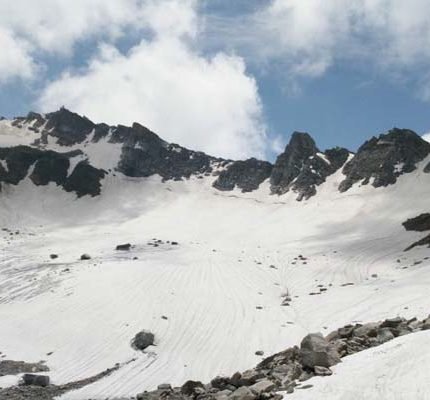
GWARU PASS TREK
It is hiding in Kullu valley has virgin trails and a wide terrain variety.
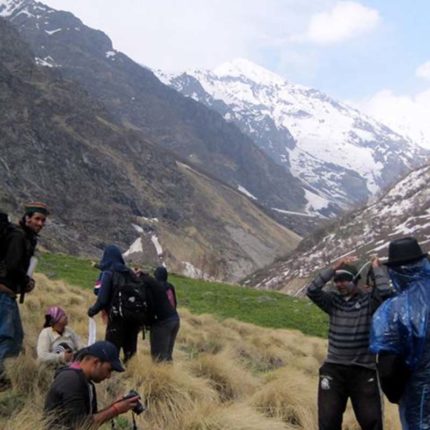
Vishkhopri Trek
It is present at the confluence of Supin and Guggal Gad.
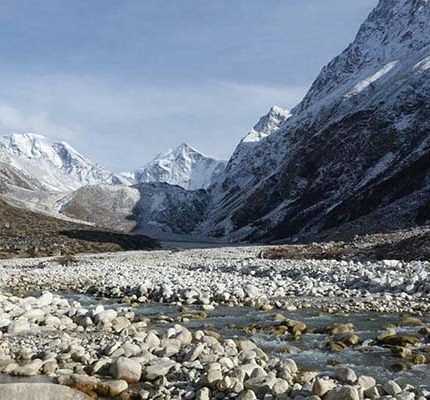
Nandi Kund Trek
Nandi Kund Trek – Adventurous trails steeped in Mythology
Send a quick enquiry
- Overview Itinerary Dates Include/Exclude
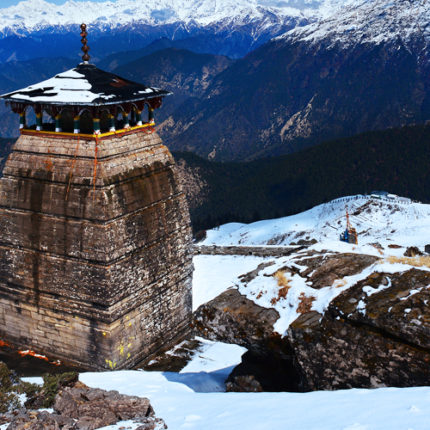
A Complete Guide to Trekking Tours in India
India Tours
International tours, destination wedding, medical tourism, plan your trip.
- Trekking in India
Panch Kedar Trek
- Accommodation
- Sightseeing
- Trip Highlights
- Best Time to Visit
About Panch Kedar Yatra Trek
One of the popular spiritual treks in Indian Himalayan region, the Panch Kedar Trek stretches from an altitude of 2134 meters, in Urgam, to a height of 3680 meters, in Tungnath. The entire stretch reflects the mythical colours of the Mahabharata where the Pandavas went to the Himalaya to meet Lord Shiva who avoided the meeting due to the Gau Hatya (Killing Cow) and Brahmahatya committed by the Pandavas. It is believed that in the struggle that followed, parts of Lord Shiva’s body that appeared in the form of a bull surfaced at various places in the Himalaya. The forelegs that showed up at Pashupatinath in Nepal, the hump of the bull at Kedarnath, the torso including the navel at Madhyamaheshwar, the arms at Tungnath, the face at Rudranath, and the matted hair at Kalpeshwar, thus forming the Panch Kedar in India (excluding Pashupatinath being in Nepal).
The Panch Kedar Trek not only covers the five shrines dedicated to Lord Shiva but also allows you to get acquainted with the remote villages that exhibit an ancient charm. The entire trail from Kalgot to Kedarnath en route to Rudranath, Mandal, Chopta, Gaundhar, Tungnath and Madhyamaheshwar offers immense opportunity to get enamoured by nature of the place which is blessed with the snow capped peaks sequestering the dense forest and lush green meadows rolling down the valleys. Below are the five Kedar and their significance;
Panch Kedar Trek Highlights:
- Seek the blessing of Lord Shiva at his five supreme earthly abodes at Kalpeshwar, Rudranath, Tungnath, Kedarnath and Madhya Maheshwar
- Witness the pleasant scenery that is adorned with blooming flowers, thick forest and streams
- Get an opportunity to imbibe in the quaint charm of the remote villages. Interact with their innocent and laborious inhabitants and learn their way of leading a happy life without the modern technologies.
- Enjoy camping under the open sky amidst the beautiful landscape.
Best Time to Visit Panch Kedar
The best months for Panch Kedar Yatra are between May and October. All the temples of Panch Kedar open only for 6 months, generally from end April to October each year. During the winters the temples are inaccessible due to rainfall and snowfall. In winter, the sanctified symbolic of Lord Shiva in Kedarnath is worshipped at the Omkareshwar temple at Ukhimath, the representative idol of Tungnath is worshipped at Mokumath, the Rudranath symbolic image is brought to Gopeshwar, and the Madhyamaheshwar symbolic idol is venerated at Ukhimath. Only Kalpeshwar is open throughout the year.
Where are Panch Kedar?
The five temples lie Upper Himalaya region, with the background of snow-covered hill ranges of the Nanda Devi, Chaukhamba, Kedarnath and Neelkanth peaks. Kedarnath is located in the Mandakini River valley while the other shrines are situated in the highlands between the Mandakini valley and the Alaknanda gorge. All the temples are remotely located and except Rudranath, the other four are still not accessible by motorable roads.
The village of Kedarnath is on the edge of Kedarnath mountain slope in a remote northern part of the Garhwal Himalayas. The Dudhganga, Madhuganga, Swargaduari and Saraswathi are the streams that flow in the valley behind the Kedarnath temple. Tungnath has an impressive backdrop of the peaks of Panchachuli, Nanda Devi, Dunagiri, Kedarnath and Bandar Poonch and is situated near Chopta, which is at a short distance from Ukhimath. Kalpeshwar is located in the Urgam valley in a dense forest area. Urgam Valley has apple orchards, terraced fields where potato is grown extensively. Kalp Ganga River, a tributary of the Alaknanda, flows through this valley.
Panch Kedar Trek (Detailed Itinerary)
Delhi – haridwar – rishikesh, other benfits (on arrival).
- Stay Included
In the morning take an AC train for Haridwar at 06:50 hrs. After arriving in Haridwar, meet our guide who will help transfer you to Rishikesh and check into the hotel. Evening time is free for leisure activities. Overnight stay at the hotel.
Rishikesh - Pipalkoti (1219 mts / 3998 ft) (218 kms / 7-8 hrs)
After the breakfast, we will drive to Pipalkoti via Devprayag, Rudraprayag, Karanprayag, Nandprayag. Upon arrival, check into your hotel. Dinner and overnight stay at the hotel.
Pipalkoti - Helang - Urgam (2134 mts / 7000 ft) (9 kms trek / 3-4 hrs)
In the morning, we will drive to Helang and from here begin trekking to Urgam Village. We will cross Alaknanda River via Road Bridge. We shall walk through the dense forests to reach Urgam Valley. Explore the valley, delectable dinner and overnight stay in tents.
Urgam - Kalpeshwar - Urgam (2 kms one side)
Early in the morning, we will trek up to the first Kedar (one of Panch Kedars). Later, return trek to Urgam. Dinner and overnight stay in tent.
Urgam - Kalgot (2215 mts / 7265 ft)
After the breakfast, we shall trek towards the Kalgot Village. Arrive at the village in the evening and witness the culture of local people. Dinner and overnight stay in tents.
Kalgot - Rudranath (2286 mts / 7498 ft)
In the morning, trek to Rudranath temple from Kalgot. Dinner and overnight stay in Rudranath.
Rudranath - Sagar - Mandal (18 kms trek / 8 kms drive)
Post breakfast, trek down to Sagar Village by passing through the dense forest and meadows. Upon arrival at Sagar, drive to Mandal the same day. Dinner and overnight stay in tents.
Mandal - Chopta (2900 mts / 9512 ft) - Tungnath (19 kms /2 hrs / trek 3.5 kms)
After the breakfast drive to Chopta. Upon arrival at Chopta, trek to Tungnath (the third Kedar). After arriving at Tungnath Temple, visit the temple and then relaxing a bit can further trek to Chandrashila Peak. Dinner and overnight stay in Tungnath.
Tungnath - Chopta - Jagasu – Gaundhar
In the morning trek back to Chopta. Upon your arrival at Chopta, drive to Jagasu (45 kms / 2 hrs). From here trek up to Gaundhar. Dinner and overnight stay in tents.
Gaundhar - Madhyamaheshwar (3289 mts / 10788 ft)
Post early breakfast, we will begin trekking to Madhyamaheshwar (the fourth Lord Shiva temple of Panch Kedar). Upon arriving here, we will pitch our camp here. Dinner and overnight stay in tents.
Madhyamaheshwar – Gaundhar
In the morning, trek back to Gaundhar. Dinner and overnight stay in tent.
Gaundhar - Jagasu - Guptkashi
Today, we will trek about 12 km to reach Jagasu and from there drive to Guptkashi (30 kms). Dinner and overnight stay at hotel.
Guptkashi - Gaurikund - Kedarnath (3584 mts / 11756 ft)
After the breakfast, we shall drive to Gaurikund. Upon arrival here, we will begin trekking to Kedarnath, which is one of the twelve Jyotirlingas of Lord Shiva. On arrival, check in at guest house. Evening time is free for exploring the area. Dinner and overnight stay in guest house.
Kedarnath - Gaurikund - Rudraprayag
In the morning, we will visit Kedarnath temple and then trek down to Gaurikund and drive to Rudraprayag along the river Mandakini. On arriving at Rudraprayag, we will check into the hotel. In the evening, we shall visit the confluence of Alaknanda & Mandakini River. Dinner and overnight stay at hotel.
Rudraprayag - Haridwar (160 kms/4-5 hrs) – Delhi
Post breakfast, we will drive to Haridwar via Devprayag. From Haridwar, we will board a train for Delhi at 18:05 hrs. Arrival at Delhi by 22:45 hrs.
Fill Enquiry Form Below
Why tmi for trekking holidays, experienced.
An experienced trekking tour operator, with a team of an experienced adventure enthusiast ensure to give our clients well-designed trekking tour packages.
We are certified by major tour and travel associations in India and world like IATA, IATO, TAAI, IMF & MOT (Ministry of Tourism, Govt of India).
Happy Customers
TMI has received numerous accolades from its happy customers for its excellent services and best adventure holidays.
Local Offices
We have local office in Ladakh, Uttarakhand, Sikkim, Jammu & Kashmir, & Himachal Pradesh for our customers to find assistance anytime and anywhere.
Related Tour Packages
08 Nights - 09 Days
Adi Kailash Trek
17 Nights - 18 Days
Auden’s Col Trek
6 Nights - 7 Days
Auli Gorson Bugyal Trek
Auli snow view trek.
8 Nights - 9 Days
Bagini Glacier Trek
12 Nights - 13 Days
Bali Pass Trek
5 Nights - 6 Days
Brahmatal Trek
Chenap valley trek.
4 Nights - 5 Days
Chopta Chandrashila Trek
11 Nights - 12 Days
Darma Valley Trek
Dayara bugyal dodital trek, dayara bugyal trek.
14 Nights - 15 Days
Dhumdhar Kandi Pass Trek
Dodital lake trek.
7 Nights - 8 Days
Dodital Yamunotri Trek
Gangotri kedarnath trek.
9 Nights - 10 Days
Gangotri Nandanvan Trek
Gangotri tapovan trek, gulabi kantha trek.
10 Nights - 11 Days
Har Ki Dun Ruinsara Tal Trek
Har ki dun trek, hemkund sahib trek, kafni glacier trek, kalindikhal trek, kanari khal trek, kedar kantha trek, kedarnath trek, kedarnath vasuki tal trek, kedartal trek.
15 Nights - 16 Days
Khatling Sahasratal Trek
Kuari pass tapovan trek, kuari pass trek, lamkhaga pass trek, masar tal lake trek via khatling glacier, mayali pass trek, milam glacier trek, nag tibba trek.
16 Nights - 17 Days
Nanda Devi East Base Camp
20 Nights - 21 Days
Nanda Devi Inner Sanctuary Trek
Nanda devi trek, nandi kund trek, panchachuli bc trek, pangarchulla peak climb trek.
13 Nights - 14 Days
Panpatia Col Trek
Panwali kantha trek, pindari glacier trek, pithoragarh sin la pass trek, pithoragarh to lipulalekh trek, roopkund trek, rupin pass trek, satopanth lake trek, shivling base camp trek, sunderdhunga bc trek, valley of flowers trek, more about trekking in garhwal, our latest informative travel blogs, explore the hidden natural treasure of himalayas with these unexplored treks in uttarakhand, india trekking guide: best informative blogs on india himalayas trekking tour, where to visit in uttarakhand and himachal for adventure, chilling, and finding peace for a post-lockdown holiday, india trekking information at a glance, trekking destinations.
- Uttarakhand
Special Interests Treks
- Wildlife Treks
- Spiritual Treks
- Weekend Treks
- Cultural Treks
- Family Treks
Best Time for Trekking in India
- Best Time to Do Ladakh Trek
- Best Time to Do Uttarakhand Trek
- Best Time to Do Sikkim Trek
- Best Time to Do Himachal Trek
- Best Time to Do Kashmir Trek
- Best Time to Do Garhwal Trek
Fixed Departure Tours
- Fixed Departure for Ladakh
- Fixed Departure for Uttarakhand
- Fixed Departure for Sikkim
- Fixed Departure for Himachal
- Fixed Departure for Kashmir
Seasonal Treks
- Spring Season Treks
- Summer Season Treks
- Monsoon Season Treks
- Autumn Season Treks
- Winter Season Treks
Essential Links
- Things to Carry
- Terms & Condition
- Trekking Equipment
- Trekking Permit
How It Works
- Tell us details of your holiday plan.
- After you submit the form, one of our travel experts will get back to you with customised holiday package based on your requirement, within 24 hours.
- Grab the deal and start packing your bags for an indelible holiday with Tour My India.
Call Us for details
+91-9212553106
Request a quote.

Home / Himalayan Treks / India - Uttrakhand Panch Kedar Trek
Wandering in the himalayas in search of lord shiva.

Quick Informations
- 📅 Duration: 20 Da
- 🔼 Highest Altitude: 5200m
- 🛑 Grade: Strenuous ( know trek grades )
- 👍 Best Time: May - Jun - July - Sep - Oct
- 🏃 Activity Type: Trek
- 🔄 Trail Type:
- 🚩 Starts From: Sari
- 🚩 Ends In: Gaurikund
- 🌏 Region: India - Uttrakhand
- 🎌 Country: India
- 🛪 Nearest Airport: Jolly Grant Airport, Dehradun, Uttrakhand
- 🚉 Nearest Rail Head: Dehradun, Uttrakhand
Key Geographical Highlights
Daywise itinerary for panch kedar trek, ▼day 1 arrival day sari.
Today we pick you up in the morning after breakfast and take on the beautiful drive to Ukhimath and then to Sari. On reaching, we check-in to the hotel and then rest for the remainder of the day. Sari is a peaceful little village. You must take time out to explore it.
▼Day 2 Exploration Day Chopta
Today early morning we start our 1-hour trek to Deoria Tal from Sari to make sure we reach there at the time of sunrise to enjoy the dawn view. After spending enough time captivating the views and taking photos, we trek back to Sari. After that, we drive to Chopta which takes about 2 hours. On reaching Chopta, we firstly check-in to our hotel and then set out to walk around the village. We can do the Chandrashila Summit today itself, but we would rather keep it for sunrise time.
▼Day 3 Exploration Day Ransi
Today, we start our day a little before dawn to enable us to enjoy the dawn from the ridge top. It takes about 2.5 hours to reach the temple of Tungnath and then to the top of the Chandrashila Peak. The summit of Chandrashila peak offers a wide array of some of the popular peaks of the Garhwal Himalayas including the likes of Nanda Devi. After spending enough time to satiate ourselves with the views of the panorama of peaks and surrounding valleys, we head back to Chopta and drive to Ransi. Its a 3 hour drive to Ransi from Chopta.
▼Day 4 Trekking Day Bantoli
Today is the starting day of our Nandi Kund - Ghiya Vinayak Pass Trek. We head towards Bantoli from Ransi and its a very scenic trek. The village and religious life of the high altitude villages of Uttrakhand is on display throughout the trek route. Being a popular pilgrimage route, the route is chirpy as well with full of vivid colours and life.
The trek is more or less easier getting steeper at times. We get enough option to have our lunch and little snacks enroute Bantoli. Gaundhar is a point we come across on the route very near to Bantoli on the Nandi Kund - Ghiya Vinayak Pass Trek. It is here where the Madhyamaheshwar Ganga and Markanda Ganga meets, with a lovely looking small bridge over it. Little more on the route and we reach Bantoli, our halt for the night.
We have quite a few options to settle in one of the homestays on offer. If not, we pitch our small tents somewhere. Hot dinner awaits us and with this, the first day of our trek to Nandi Kund and Ghiya Vinayak Pass ends.

▼Day 5 Trekking Day Madhyameshwar
We are into the second day into our trek to Nandi Kund and Ghiya Vinayak Pass. Madhyamaheshwar is one of the panch kedars and is one of the popular and highly rated pilgrimage route for the Hindus. The trek route crosses Nanu Chatti just after some time into the trek. It the passes by Maikhamba and Kun Chatti, from where its a good walk for some 3 hours to bring us to the shrine of Madhyamaheshwar.
Post lunch, we go on for a acclimatization walk to Buda Madhyamaheshwar. If lucky, we might catch a glimpse of Chowkhambha in a small water body near Buda Madhyamaheshwar.
Our route for tomorrow to Kachni Khal is visible and inspires enough motivation in us to take the challenge. Post dinner, we wish good night to each other and get into our cozy sleeping bags.

▼Day 6 Trekking Day Kachni Dhar
Today our trek to Nandi Kund takes a drastic change, both in the form of difficulties of the climb, and the solitude of the trail.
After waking up to a lovely morning in the blessed site of Madhyamaheshwar, we get ready to tackle the day's trek. It involves a steep continuous climb to the Kachni Khal marked typically by 2 huge rocks forming a gateway.
An arduous climb of some 4 - 5 hours gets us to the top of Kachni Khal. From here, the trail forks and one goes left towards Kedarnath, other to Panpatia and the route on the right goes towards Nandi Kund. Our campsite is a rocky patch today with great views of Chowkhamba.
Evening, we take a light acclimatization walk to Kachni Khal and return to our campsite

▼Day 7 Trekking Day Pandavsera
The trek for today leaves behind all signs of civilization and follows an unmarked shepherd's trail to reach Pandavsera. A very efficient local guide is much required here. We trek through bushes and cross the Madhyamaheshwar nala multiple times and pass by few small waterfalls to reach a flat meadow. This is marked as Pandavsera and we camp here for the night, by the stream.

▼Day 8 Trekking Day Nandi Kund
The trail to Nandi Kund from Pandavsera follows the small stream of Madhyamaheshwar Nala emerging out from Nandi Kund. It's a gradual climb that gets steeper at times. The rough terrain presents its own challenges. We cross the Madhyamaheshwar Nala multiple times and then climb up steep for another hour to reach the serene Nandi Kund. The peaceful lake and its tranquil waves take our hearts right away and lower down our energy injecting immense peace in us and give us divine happiness and satisfaction. This is why we travel to the difficult parts of the Himalayas for!The entire view of the surrounding is so beautiful that simpler words which I know fail to do justice to the actual beauty of the place. The peaks of Chowkhamba hovers over the lake. The name of the Lake is derived from Nandi - The name of the Bull which was actually Lord Shiva in disguised avatar hiding away from the Pandavas, who were seeking mercy and moksha (liberation from the cycle of life and death as per the Hindu belief) from Lord Shiva after the war of Kurukshetra. We spend the remaining part of the day relinquishing the beautiful place that we are in with no one around to disturb. No noise, no disturbances from unwanted people around, no mobile, no internet. Just us and Mother Nature in its heavenly best.
▼Day 9 Pass Crossing Day Barma Bugiyal
Today is the highlight day of our trek as we cross the mighty Ghiya Vinayak Pass to topple over to the other side of the valley. It will be a long tiring day today. We can cut out the chances of bad weather hitting us on this hard terrain by starting the day as early as we can. A steep continuous climb for about 3 hours from Nandi Kund will take us to the top of the mighty Ghiya Vinayak Pass. The views from the top of the Ghiya Vinayak pass is just breathtaking. The coveted peaks of Chowkhamba, Neelkantha and Nanda Devi are visible on a clear day. The glacier table of the Panpatia too is visible from here.Weather permitting, we will spend a good time enjoying the views from the top of the Ghiya Vinayak Pass. After that, we will soon find ourselves negotiating the very steep descend to the lush green valley on the other side of the Ghiya Vinayak pass. It's the beautiful meadow of the Barmna Bugiyal on the other side of the pass. We lose altitude rapidly and in about an hour and a half we reach our designated campsite for the night. It will be a long rewarding day today and we will complete the 2 important missions of this trek - The Serene and Pious Lake Of Nandi Kund and Crossing the Mighty Pass Of Ghiya Vinayak. This being done, the remaining days of the trek are just about taking ourselves back to civilization. The remaining part of the trek still remains very beautiful though, as it passes through some untouched meadows and beautiful villages of the Garhwal Himalayas.

▼Day 10 Trekking Day Matigair
Will write later

▼Day 11 Exploration Day Dhing

▼Day 12 Trekking Day Rudranath
▼day 13 trekking day panar bugyal, ▼day 14 trekking day kalpeshwar, ▼day 15 trekking day gaurikund, ▼day 16 trekking day kedarnath, ▼day 17 trekking day gaurikund, ▼day 18 trekking day rishikesh.
Drive to Rishikesh
▼Day 19 Contingency Day
Panch kedar trek - package & cost details, ▼ cost terms.
Must Read - Important Pre-Booking Information
▼ Fixed Departure Dates
We do not organize fixed departures for this trip.
If you want to do this trek with us, please fill this form to Request A Customized Private Trip Plan just for your team members. We will get back to you with all the details specific to your personalized requirements
▼ Cancellation Policy
When should you book.
We typically get booked about 3 - 6 months in advance. It is advisable to book this much in advance as you get early bird discounts and also your travel costs like flights/hotels/trains etc are much cheaper and confirmed if you book well in advance.
Rules Of Cancellation:
If cancellation is done:
- Up to 30 days or more before the trek start date - Full Refund of the total paid amount
- Between 30 days to 20 days before the trek start date - 50% refund of the invoiced amount . 50% of the invoice amount will be charged as a cancellation penalty.
- Between 20 days to 0 days before the trek start date - No refund. Free rescheduling or transfer of slots is allowed as specified below.
- Transfer Of Slot to a Different Batch/ Trek : No Loss Of Money, valid up to 1 year from the Invoice date. It can be availed up to 20 days before Trek Start Date by sending an email.
- Transfer of Slot to Friend/ Family For Same Batch: No Loss Of Money, valid up to 1 year from Invoice date. It can be availed up to 7 days before Trek Start Date by sending an email.
- Validity : This rule is only applicable for treks between 4000 to 6000 meters of any grade
Find detailed info on Cancellation & Refund Policy

Panch Kedar Trek - Why Its A Must-Do
- The mythological story around the establishment of Panch Kedar is very fascinating. It is believed that the Pandavas after the war of Kurukshetra felt very guilty of killing their own kins and brahmans. They were seeking the mercy of Lord Shiva, who was angry with them and was hiding and running away from the Pandavas. Shivji in order to hide from the Pandavas had taken the form of a bull named Nandi. In Guptkashi, Bhima recognized the bull as Shiva. However, Lord Shiva disappeared and the bull burst split into 5 parts which fell in 5 different locations. Later the Pandavas established 5 temples in all these 5 locations to be collectively named the Panch Kedars, meaning 5 Shivas. These locations are Madhmaheshwar where the navel of the bull is supposed to have fallen, Tungnath where his limbs fell, Kalpeshwar, where hairs fell, Rudranath, where face fell and finally Kedarnath where the hump of the bull fell.
- Apart from religious significance, the architecture, construction and location of these temples draw tremendous curiosity and fascination.
- The lakes of Deoria Tal, Buda Madhyamaheshwar and Nandi Kund are the ultimate serene lakes situated at an altitude of 4000 meters. The turquoise hues of the waters of Nandi Kund surrounded all around by rocky barren mountains will certainly blow off your mind in appreciation of Mothe Nature.
- The mountain massif of Chowkhamba lures you and gets you lost in its vastness and beauty.
- The peak of Chandrashila offers a grand panorama of many popular peaks of the Garhwal Himalayas including the revered Nanda Devi, Dunagiri, Hathi, Gauri, Trishul, Kedarnath, Chowkhamba among many others.
- The temple of Kedarnath needs no introduction to anyone who keeps knowledge of the Indian Himalayas and the culture of India. It is one of the most pious temples of the Hindus.
- These valleys are home to myriads of wildflowers, wild berries and rhododendrons. The alpine meadows of the high altitude and dense jungles are home to many wildlife including the likes of Himalayan Black Bear and the feared Leopard.
- This trek itinerary gives you a good amount of time to understand the Garhwali culture and its rich heritage. It offers you a good time to enjoy the Garhwali Hospitality and cuisines in their authentic and raw forms.
- introduction
- geographical info
- detailed itinerary
- elevation profile
- package Details
- common questions
- contact info
- description
- key highlights
+91 8017216725
+91 9434062849
Write To Us
WhatsApp Us
.png?w=auto&h=400)
Panch Kedar Trek
Panch kedar trek overview.
Delight in embarking on the Panch Kedar Trek, one of the popular spiritual treks in the Himalayan region. The trek will take you to visit the five Kedarnath temples dedicated to Lord Shiva: Rudranath, Tungnath, Kalpeshwarnath, Madmaheshwarnath and Kedarnath.The trek will take you on a 15 days journey and will not only cover the 5 temples but will also take you to several remote villages on the way. You will be trekking through dense forests, lush rolling valleys, cascading waterfalls, rocky climbs, flowing streams, rivers and more and will visit some spectacular places such as Chopta, Gaundhar, Urgam Village, Panar Bugyal and others.
For a major part of your journey, you will also be enjoying the spectacular view of the majestic Himalayas with their various stunning snow-covered peaks.Being at high altitudes, the temples are covered with snow for a part of the year and become inaccessible. So, you will need to check out the best time for Panch Kedar trek before you embark on this amazing journey.
Book Kedarkantha Trek
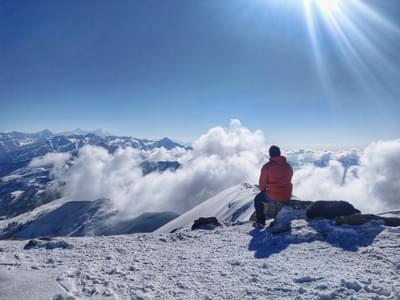
Panch Kedar Trek Detailed Itinerary
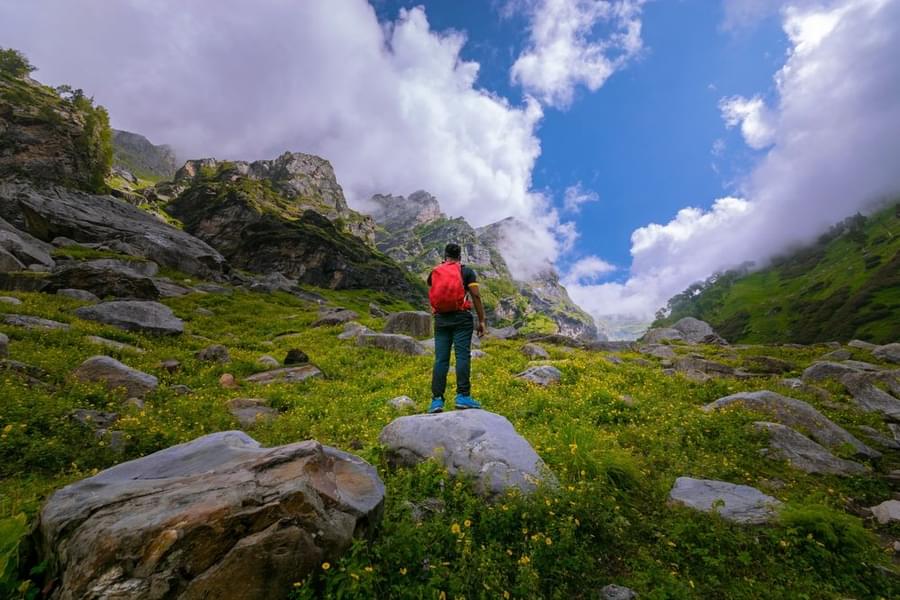
Reach Joshimath
You will need to reach Joshimath by road on your own to start on your Panch Kedar Trek.
On reaching Joshimath, you will be taken to your accommodation for the night and rest for the night at Joshimath
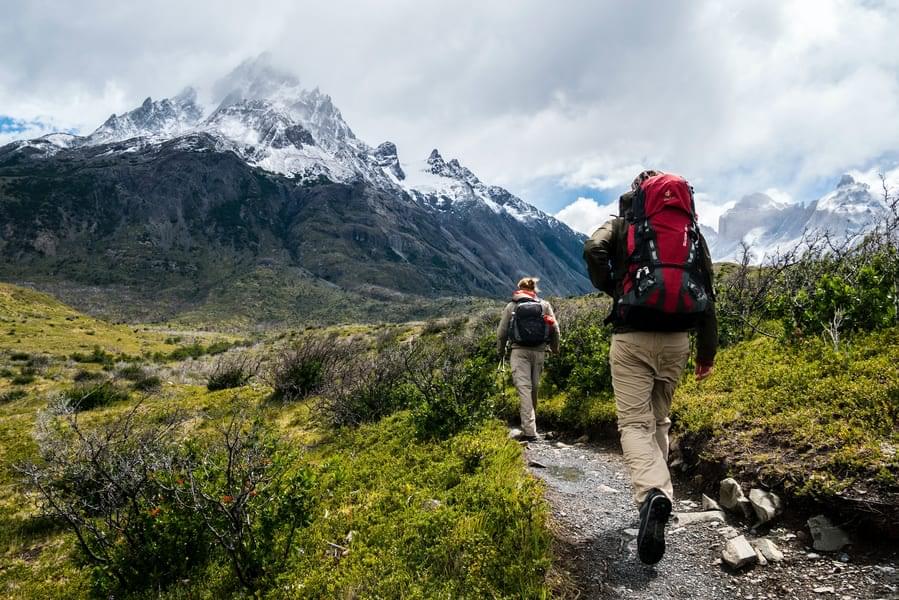
Joshimath to Kalpeshwar to Urgam Village
Maximum Altitude: 2100 m
Drive: 19 km
Kalpeswar is a 19 km drive from Joshimath and you will be driving there soon after your breakfast.
Reach Kalpeshwar Temple, the first one of the five temples of the Panch Kedar, located at an altitude of 2134m.
Spend some time at the place which is a favorite spot for meditation for sages.
Feel mesmerized looking at the entire valley filled with flora and fauna of vibrant colors.
Start on a 3 km trek to reach Urgam Village and head towards the homestay, your accommodation for the night.
Enjoy a meal with the locals and delight in knowing about their lifestyle, tradition and culture.
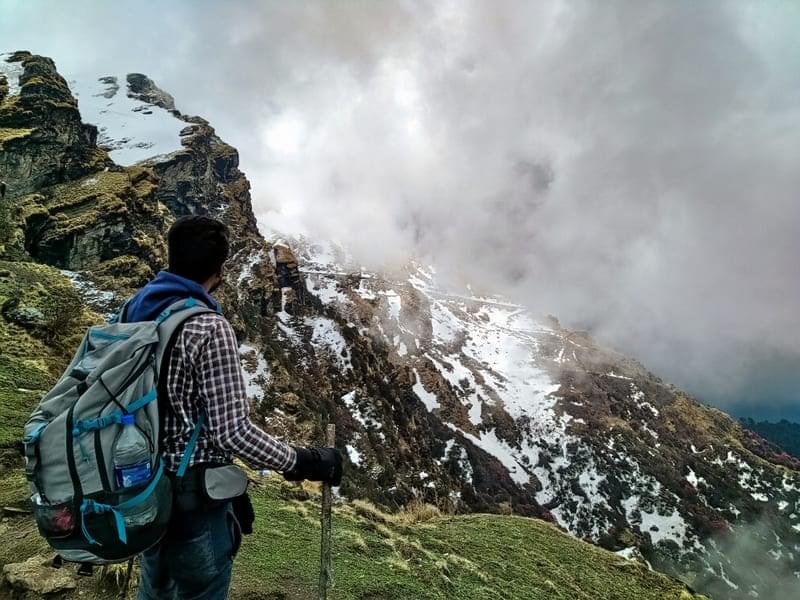
Urgam to Kalgot
Maximum Altitude: 2182 km
Trek: 12 km
Enjoy a mouthwatering breakfast at the homestay before you embark on a trek to Kalgot as per your Panch Kedar trek itinerary.
Kalgot is located at an altitude of 2183 m above sea level and you will be trekking for 12km.
Feel captivated as you trek through dense forest and listen to the sound of cascading waterfalls in the backdrop.
Delight in the vista of apple orchards and potato cultivation as you proceed through the Ugram valley.
Finally, reach Kalgot and rest at a homestay with a Garhwali family for a night
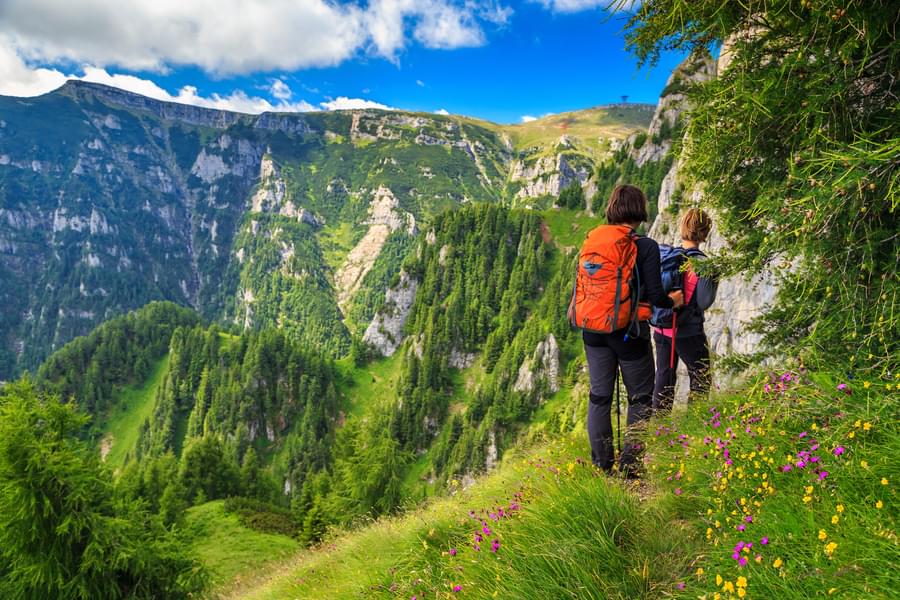
Kalgot to Panar Bugyal
Trek: 14 km
Next day you will embark on another enjoyable trek of 14 km to reach Panar Bugyal.
Enjoy climbing uphill through dense forest and delight in the serene ambience during your journey.
Trek through lush farm fields, and meadows, and climb up rocky hills.
Reach Panar Bugyal and enjoy a stay in a tent in the midst of natural beauty and majestic mountains.
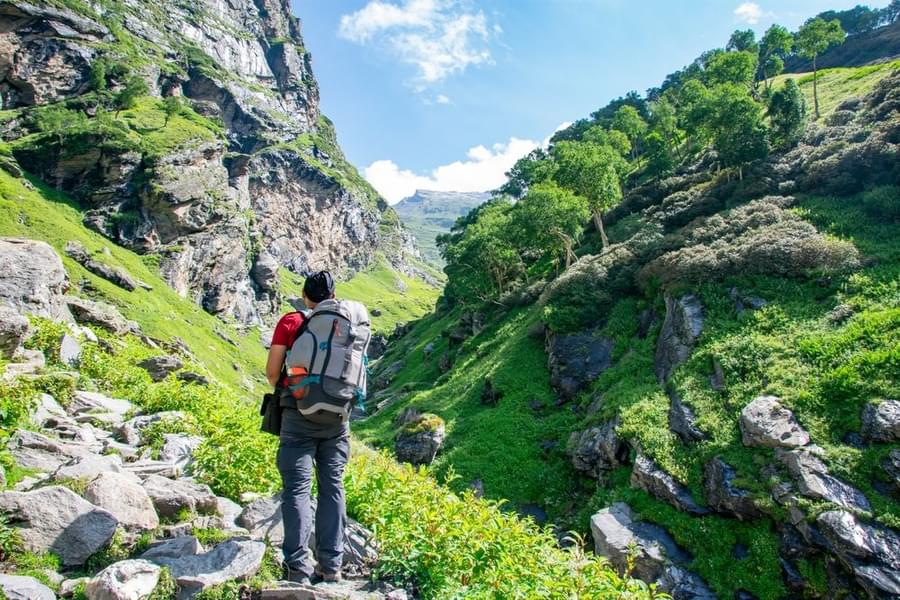
Panar to Rudranath and Return
Maximum Altitude: 2286 m
Wake up to a breathtaking view of the scenic Panar Bugyal and start your day with a delicious breakfast.
This is the day you will be reaching the second temple of the Panch Kedar Trek, Rudranath, located at an altitude of 2286 m from sea level.
Reach the temple to offer your prayers to the Lord Shiva.
Feel enchanted looking at the spectacular panoramic view of the Himalayas, Nanda Ghunti, Nanda Devi, Trishul and other such majestic mountains.
Head back to Panar to spend your night at the tent.

Panar to Sagar Village
Maximum Altitude: 2900 m
Drive: 32 kms
The sixth day of your trek will find you heading towards Sagar village by trekking.
Trek for 14 km from Panar to Sagar village, passing through high-altitude grasslands and thick forests.
Reach Sagar Village and begin your road journey for 32 km to reach Chopta, known as Switzerland of the Garhwal region.
Feel mesmerized as you reach Chopta and take a look at the beautiful vista laid before you.
Take a rest in a guest house at Chopta for the night.
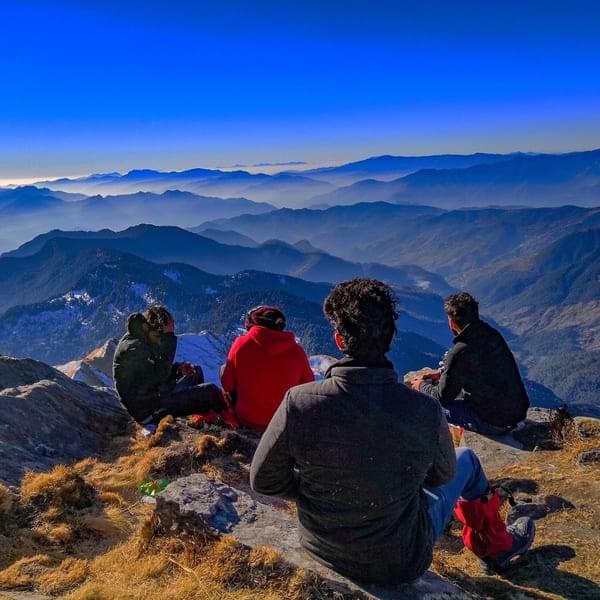
Chopta to Tungnath (3680 m. By Trek) to Chandrashila and Back to Ukhimath (9 km. By Trek and 25 km. By Drive)
Feel excited as you start the seventh day of your Panch Kedar Trek as this is the day you will be trekking to reach Tungnath, the highest Lord Shiva temple in the world.
Tungnath is located at an altitude of 3680m above sea level and is an approximately 3.5 km trek from Chopta.
Embark on an easy trek for around 4 hours and trek through thick forests, and lush alpine fields.
Feel mesmerized looking at the snow-capped Himalayan ranges surrounding you as you reach the temple and offer your prayers.
Trek further up to reach Chandrashila (meaning "Moon Rock"), a summit above Tungnath temple located at an altitude of 4000 m. above sea level.
Get the breathtaking view of the Himalayas from Chandrashila and take a look at the Nandadevi, Bandarpunch, Trisul, Kedar Peak, and Chaukhamba peaks.
Trek down and then drive back to Ukhimath to spend the night at a guest house in the town.
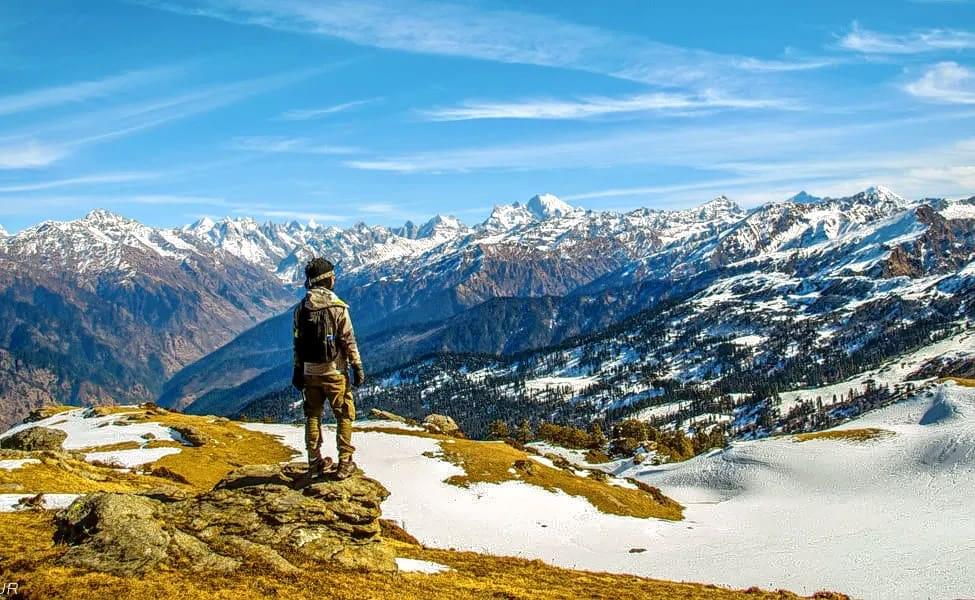
Ukhimath to Kalimath (20 km. By Drive) to Ransi (1765 m., 7 km. By Trek)
Day 8 will find you driving from Ukhimath to Kalimath.
Reach Kalimath and start trekking towards Ransi, located at a height of 1765 m. above sea level.
Trek through the rocky trail and reach Ransi.
Spend the night at a camp
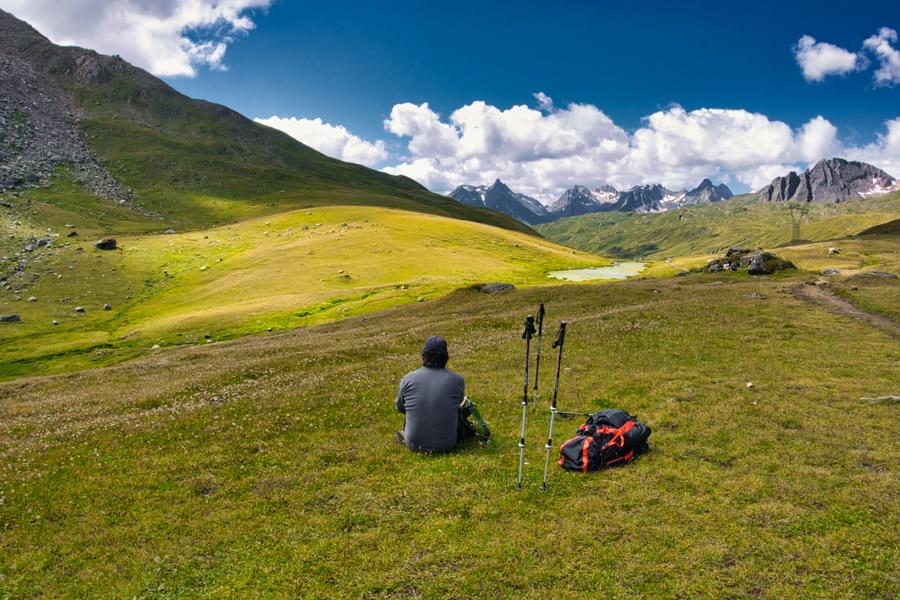
Ransi to Gaundhar
Maximum Altittude: 3073 m
Your ninth-day Panch Kedar trek itinerary will include a trek from Ransi to Gaundhar, located at 3073 m above sea level, the base camp for trekking towards Madhyamaheshwar.
On the way, stop at the meeting point of Madhyamaheshwar, Ganga River and Markanga Ganga River and spend some time looking at the stunning view.
Reach Gaundhar, and spend the night at a camp
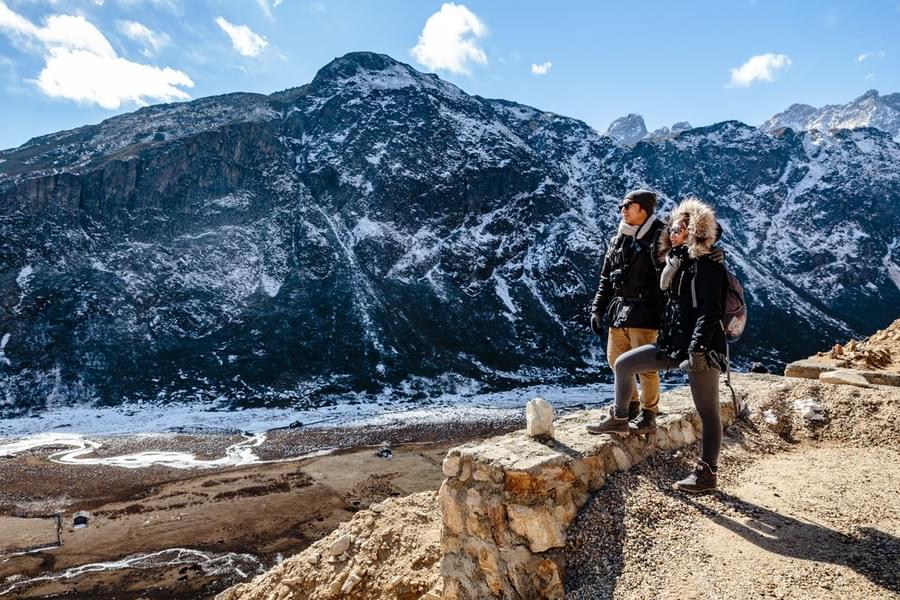
Gaundhar to Madhyamaheshwar
Maximum Altitude: 3490 m
Trek: 10 km
Start your trek from Gaundhar to Madhyamasheswar on the 10th day of your trekking tour.
Trek for around 5 to 6 hours through the well-graded trail with thick forest, lush fields, and slopes.
Reach Madhyamasheswar, located at the height of 3490 m above sea level and feel delighted looking at the typical north Indian-style temple.
Settle in a campsite for night.
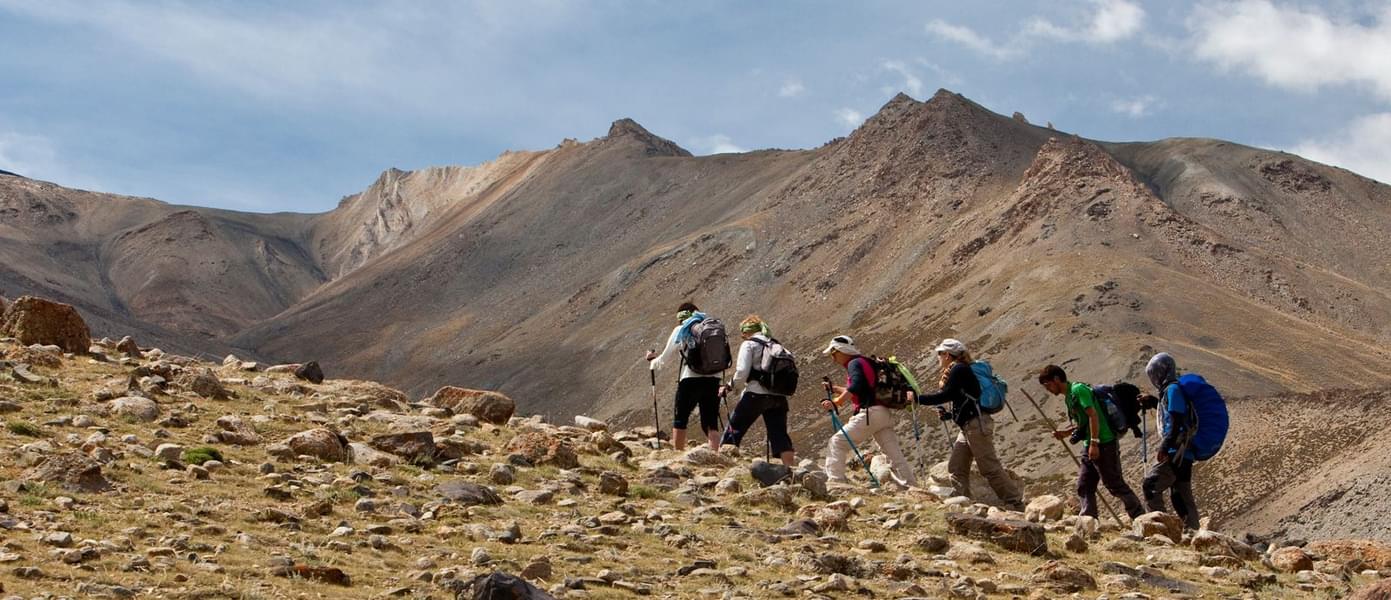
Madhyamaheshwar to Gaudhar
Wake up to the incredible view of the prominent peaks of Kedarnath, Chaukhamba, Neelkanth and others.
Start the trek along the same route as the previous day towards Gaudhar.
Reach Gaundhar and stay overnight in the camp.
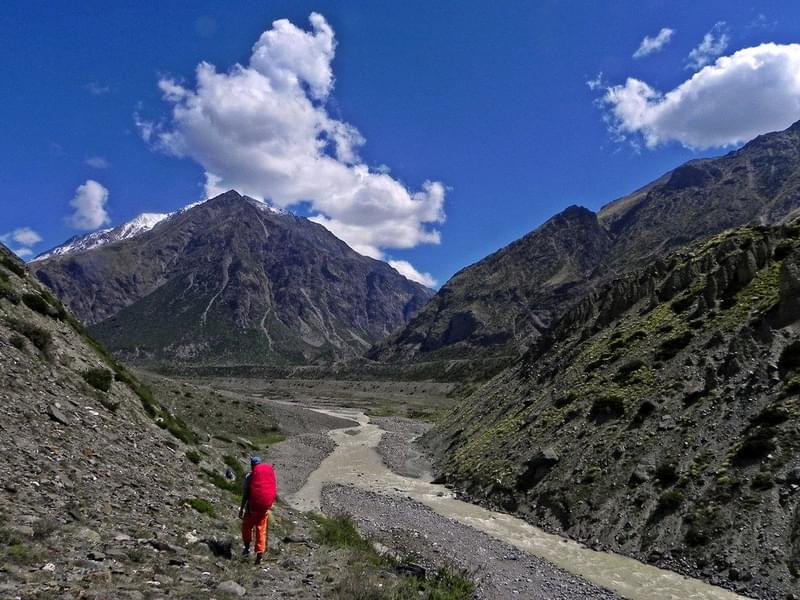
Gaundhar to Ransi
You will trek from Gaundhar to Ransi on Day 12.
Trek through a scenic trail for 6 km.
Reach Ransi, and stay overnight at the camp in Ransi.
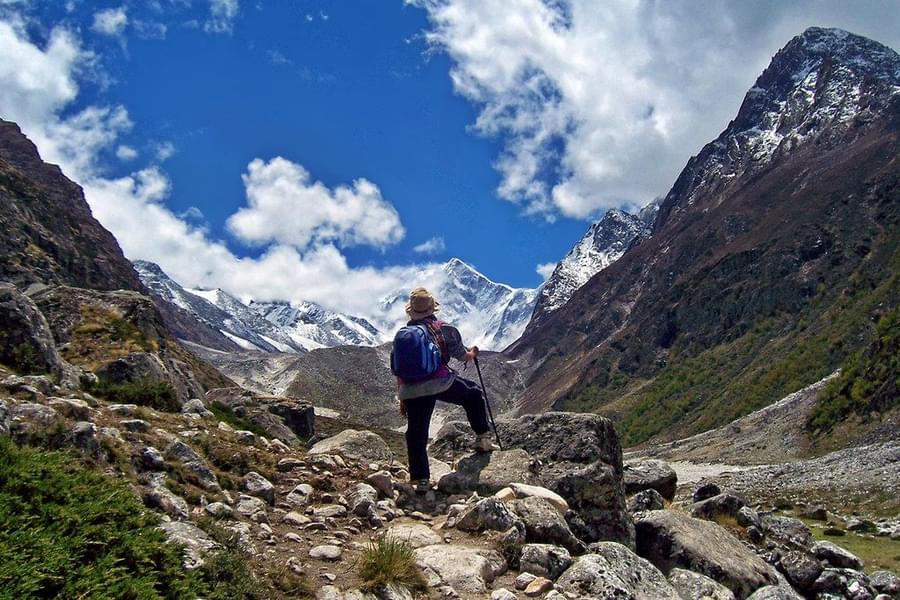
Ransi to Kalimath (13 km. By Trek) and Kalimath to Gaurikund to Guptkashi (1319 m., 39 km. By Drive)
Day 13 will see you covering around 13 km of the trek distance from Ransi to Kalimath.
The trekking route will pass through thick forests and streams.
Reach Kalimath and drive to Gaurikund via Guptkashi.
Halt at Guptkashi to visit some ancient temples.
Reach Gaurikund and retire in a hotel for the night.

Gaurikund to Kedarnath
Maximum Altitude: 3584 m
Trek: 16 km
Feel excited to start your journey to the famous Kedarnath Temple, located at a height of 3584 m. above sea level.
Trek through the amazing route with a stunning view of the valley and the river.
Arrive at Kedarnath, and get ready for an overnight stay at a camp.
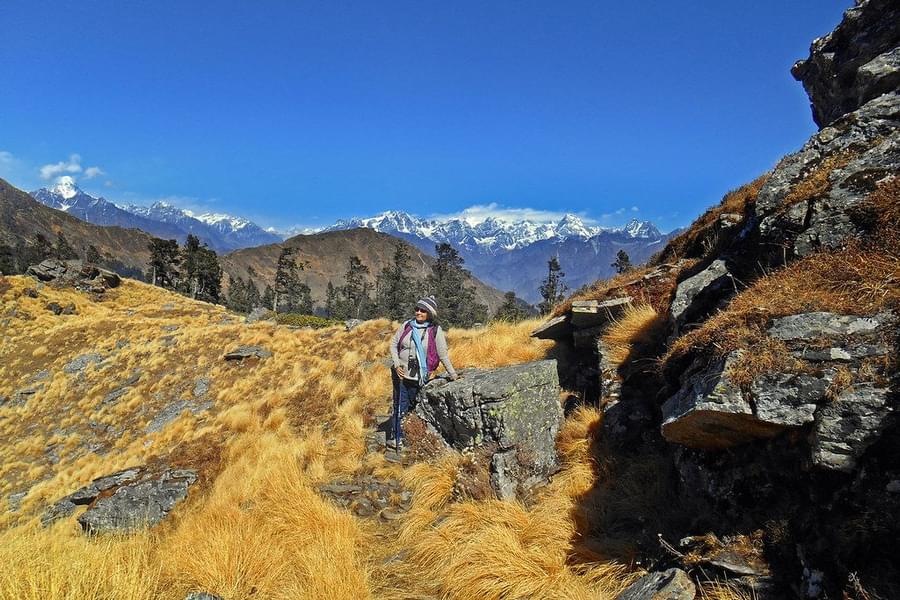
Kedarnath to Gaurikund (16 km. By Trek) and Gaurikund to Guptkashi (30 km. By Drive)
Wake up on the morning of the last day of your Panch Kedar Trek and visit the Kedarnath Temple to offer your prayers.
Start the trek down from Kedarnath to Gaurikund on the same route.
Reach Gaurikund, have lunch and drive towards Guptkashi to end your trekking trip with wonderful memories.
What To Pack For Your Panch Kedar Trek?
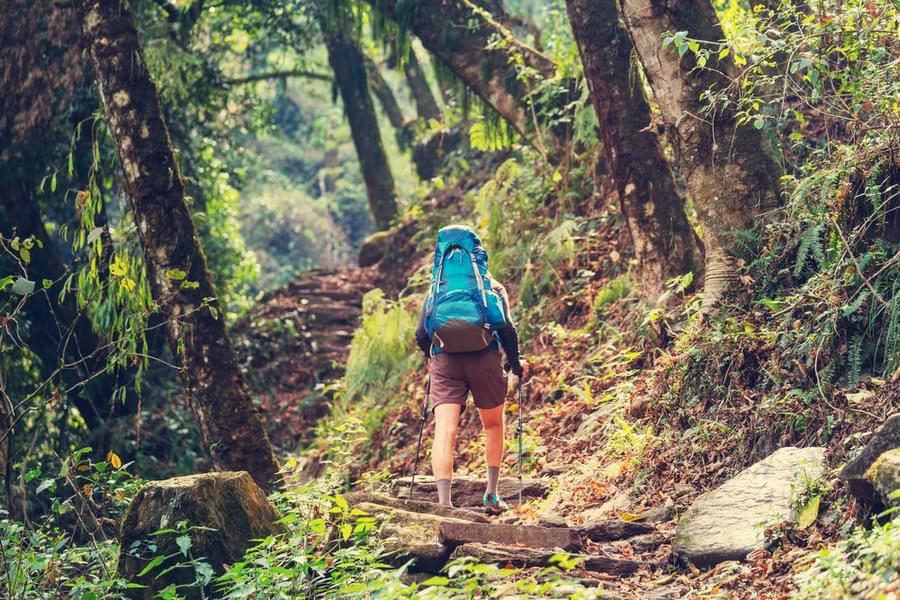
Clothes & Footwear:
Do not carry too many clothes as you have to carry them during your trek.
Trek Pants will be more comfortable during the trek than jeans or trousers.
Thermals to keep you warm at night.
Heavy Warm clothing such as fleece or woollen layers.
T-shirts and Fleece T-Shirts are more comfortable than shirts and dry fast.
Raincoat to keep you dry in case there is rain.
Headcover such as a cap or balaclava to protect your head during the trekSocks (woolen and regular)
Hand gloves
Get yourself sturdy well-fitted trekking footwear so that your feet do not hurt during the trek.
Other Essentials:
A strongly built 50 to 60 liters backpack with good support is an absolute must for a trek. Ensure there is a rain cover as well.
Personal toiletry items such as toothpaste, toothbrush, toilet paper, sanitiser etc.
Personal medical kit with items such as prescribed medicines and common ones. Also an antiseptic cream, a pain relief spray, bandage and cotton for cuts.
Carry sunscreen to protect your skin.
Snacks ( Dry fruits, ORS, Electoral etc)
2 Water bottles of 1 liter each to refill with water to hydrate yourself during the trek.
Sunglasses for protecting the eyes.
Hiking pole for support during the trek.
Torch to use at night.
Camera with rechargeable batteries

Know Before You Go To Panch Kedar Trek
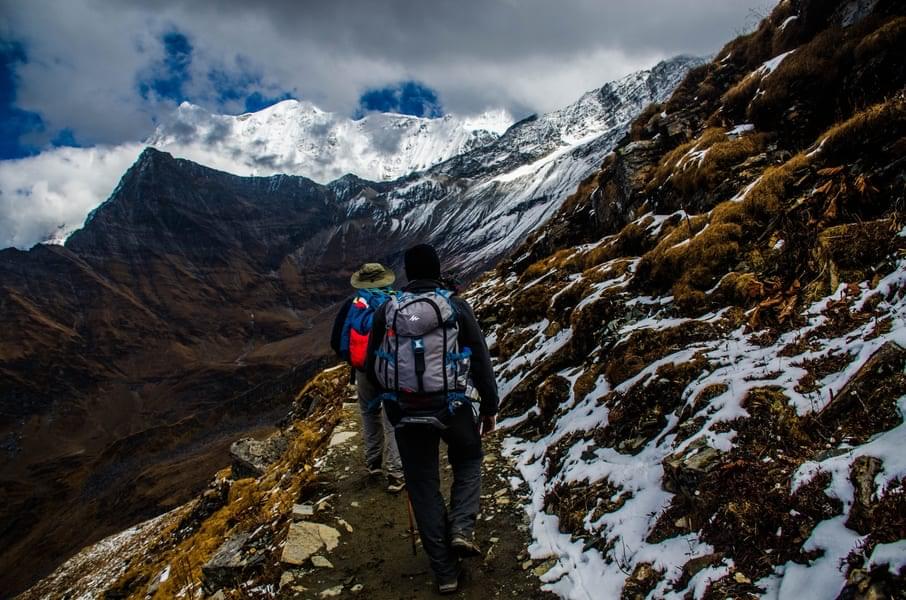
By Air: Jolly Grant Airport at Dehradun is the closest airport to Joshimath and you will need to travel for approximately 7 hr 48 min via NH 7 to cover 264.8 km to reach the town of Joshimath from the airport.
By Rail: Rishikesh is the closest railway station to Joshimath. It is 248.0 km away from the town and can be easily reached by road by traveling via NH 7 for 7 hr 35 min.
By Road: You can reach Joshimath by road by traveling from Delhi, Rishikesh, Chamoli, Rudraprayag and Srinagar.
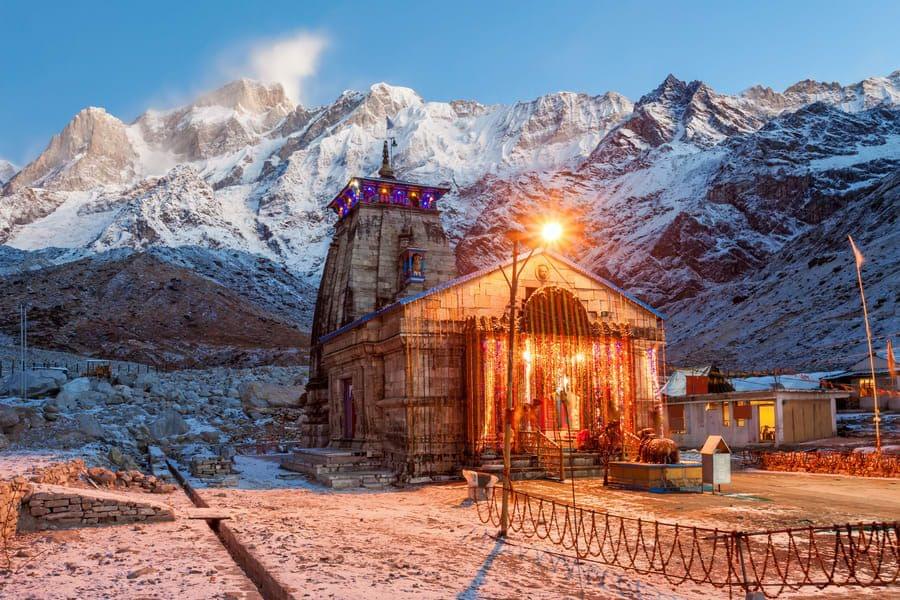
You can take one of the 3 Panch Kedar trek route to reach the Rudranath Temple.
You can continue from Devgram via Kalgot.
You can reach from Helang to Saggar by road and then trek to reach Rudranath Temple.
The third route will take you from Saggar to Rudranath via Panra and after descend via the Nala Pass and cross the Anusuya Devi temple.
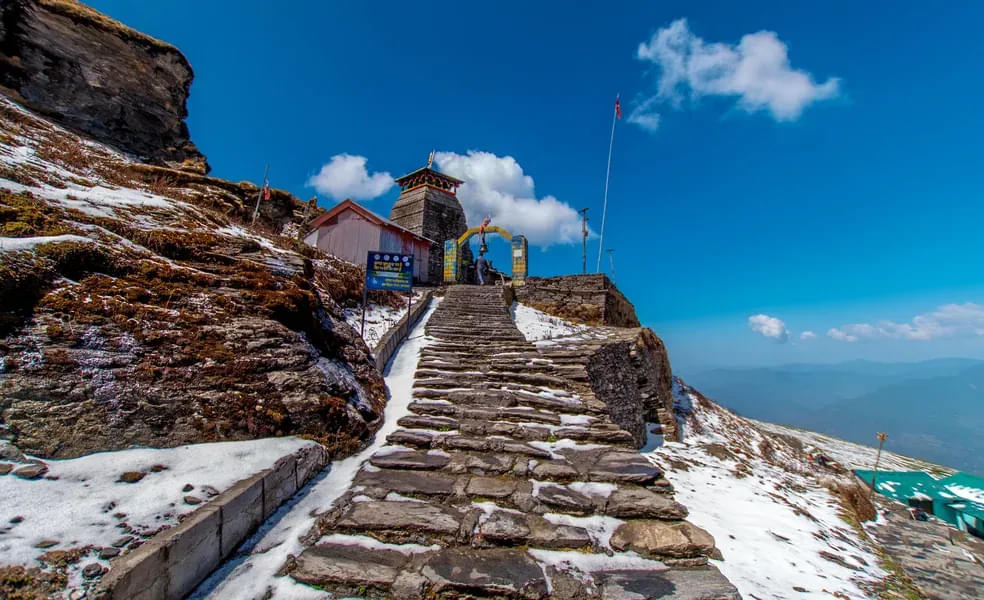
Trekkers must be careful about a few pointers during their trek. This will make their journey safe and enjoyable. A few tips to note are:
Climatic conditions in high altitudes are different from the plains; So, take time to get acclimatized to high altitudes.
State Government guidelines need to be followed.
Get your medical checkup done to ensure fitness before you go on a trek.
People with heart, respiratory and blood pressure problems should not go trekking without a doctor’s advice.
The trek is also not recommended for pregnant ladies.
Pay attention to your trek instructor to enjoy a safe and sound trek.
Do not waste water as it is precious in the hills.
Save the environment by not using plastic bags during your trek.
Do not use earphones during trekking, it might make you unmindful.
Provide a valid ID card during the time of check-in.
Hotels and camps are basic in nature and do not provide luxury.
You May Also Book
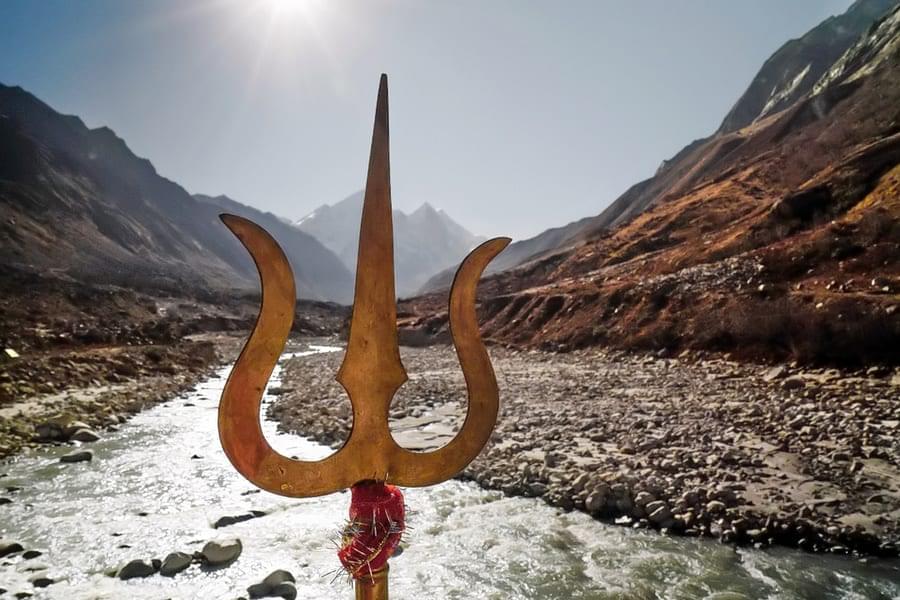
FAQs of Panch Kedar Trek
Are there horses available for offloading at panch kedar temple.
Yes, a Horse ride, that is riding on the back of a pony is available for offloading at Panch Kedar temple.
Where is Panch Kedar Trek located?
The Panch Kedar trek route is located in the Garhwal Himalayas of Uttarakhand. The trek will take you to visit the five temples of Lord Shiva namely Kedarnath, Rudranath, Madmaheshwar, Kalpeshwar and Tungnath. The temples are located in the Upper Himalaya region and have a backdrop of snow-covered mountain ranges of Nanda Devi, Chaukhamba, Kedarnath and Neelkanth peaks. While Kedarnath is located in the valley of the Mandakini river, other temples are situated in the highlands that fall between the Alaknanda gorge and the Mandakini Valley.
How difficult is the Panch Kedar trek?
The Panch Kedar Trek is of Moderate difficulty level so trekkers need not be highly skilled to embark on this trekking trail.
What is the best time to do the Panch Kedar trek?
The best time for Panch Kedar trek is between May to October. Except for Kalpeshwar, all the other temples remain closed during the winter months and are open only from the end of April to October. This is due to the fact that during the winter months, the temples become inaccessible due to rainfall and snow.
What is the highest altitude of Patalsu Peak Trek?
The highest altitude of the Panch Kedar Trek is lying at an altitude of 13800 ft.
More Treks in Himalayas
- Treks in Himachal
- Treks in Uttarakhand
- Weekend Treks in India
- Treks in Ladakh & Kashmir
- Treks in Nepal
- Treks in Sikkim
.png?w=auto&h=400)
The content and images used on this site are copyright protected and copyrights vests with the respective owners.
Kedarnath Temple Blog
Kedarnath Temple Opening Date, Booking, Distance, Weather, Char Dham Yatra 2024 in Uttarakhand.
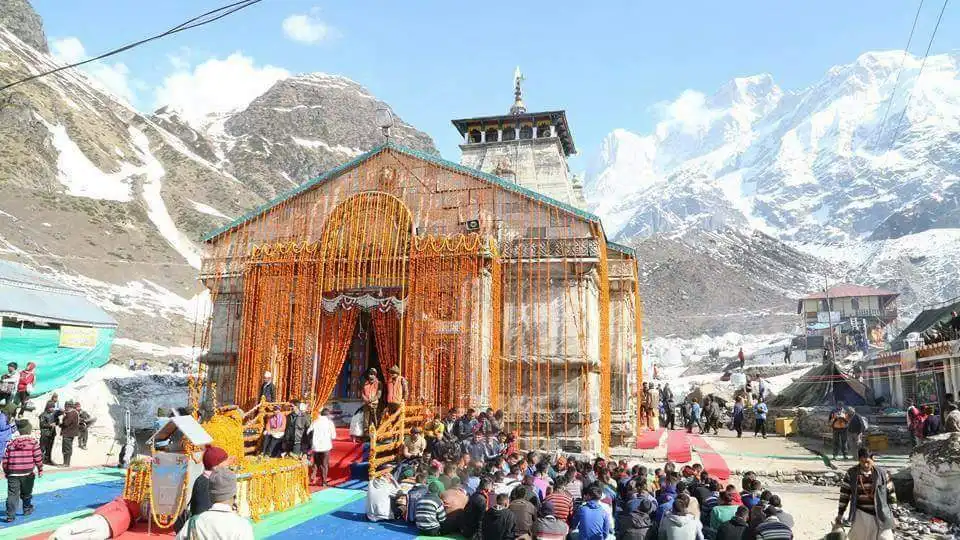
Panch Kedar Yatra 2024 (Travel Guide)
Panch Kedar is part of Lord Shiva’s body that appeared at five places in Kedarnath Town. It is said that the Pandavas built temples at each of these 5 places.
Panch Kedar Yatra 2024
Panch Kedar Yatra consists of Temples namely Kedarnath, Tungnath, Rudranath, Madhyamaheswar, and Kalpeswara.
It takes 14 days to visit all five shrines of lord shiva. There is a spherical trek which is the only way to visit all Panch Kedar temples. And for most of the part, you have to walk from temple to temple.
The best way to visit Panch Kedar is a bus service that leaves Gaurikund near Kedar Nath. The Timing of this bus is every morning at 5 am and stops at every point for Panch Kedar temples.
Panch Kedar Route Map
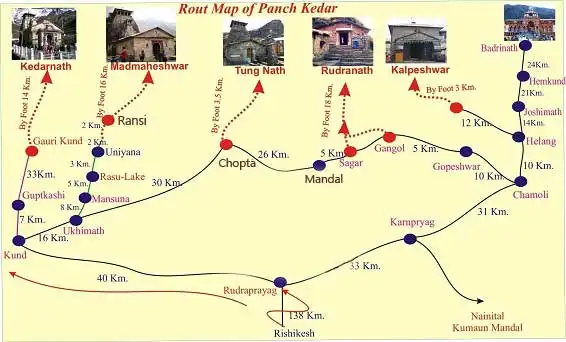
Panch Kedar Yatra starts from Kedarnath Temple . And to reach Kedarnath Dham, first of all, you have to reach Gaurikund via Kund. You can see as shown in the above image of the Panch Kedar Temples Route Map.
One more option for helicopter service is there from Phata to Kedarnath. The second destination is Madhyamaheshwar, the third is Tungnath, the fourth is Rudranath, and the last fifth is Kalpeshwar Temple.
1. Kedarnath Temple (First Panch Kedar)
Kedarnath is a holy Hindu town located in the Rudraprayag district of Uttarakhand . It is one of the Chota Char Dhams located in the Northern Himalayas. The height of Kedarnath is 3584 meters above sea level. And Kedarnath Dham is Near the head of the Mandakini River. The Kedarnath Temple lies on the lap of the Garhwal Himalayan ranges and is visited by thousands of tourists each year.
Travel Tips For Kedarnath
- One can also find mules and porters for hire. Before hiring you can check the official price chart.
- For safety reasons, do check the ID cards of porters and mule owners.
- While traveling in monsoon, check with local authorities and tour guides about the weather conditions before you start the journey.
- Photography is not allowed inside the temple due to religious reasons. And It would be wise to follow the rules set up by temple authorities.
Ukhimath or Okhimath is just a little away south of Guptkashi. It has a colorful temple and monastery, which has many small cells for meditation. And pooja for Kedarnath is done in Ukhimath only when snow in the hills rises cold in winter.
The doors of Kedar Dham are closed for 6 months in the winter season. For This Period, Shiva’s worship is done in Ukhimath with all the rituals. Ukhimath has all the different forms of Lord Shiva. So if you are not able to visit Panch Kedar, then getting a darshan of all deities at Okhimath is equal to being blessed by all the forms of Lord Shiva.
This friary is also the seat of the immortal saint, such as Parashurama and Visvamitra, as well as Varahi and Chandika, the Tantrik goddesses.
In Okhimath there are many temples of Lord Shiva Goddess Parvati, Usha, Mandhata, and Aniruddha. It is believed that Usha-Aniruddha’s marriage took place in Okhimath. Usha along with her father used to live here.
Must-Read Articles:
- Kedarnath Yatra 2024
- Badrinath Yatra 2024
- Gangotri Yatra 2024
- Yamunotri Yatra 2024
2. Madhyamaheshwar Temple (Second Panchkedar)
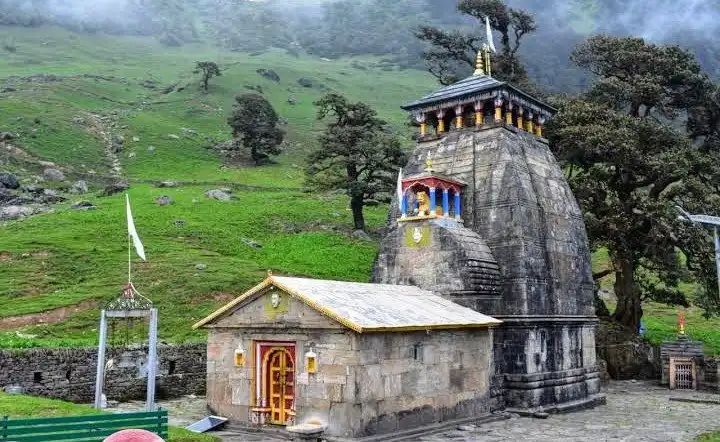
A local bus goes every day between Gopeswar and Guptkashi, and from there you can return to Guptkashi and then visit Okhimath and continue on to Mansuna village.
From Mansuna village it is a 24km trek to Madhyamaheswar (3,497m), which is 30km away from Guptakashi. One can stop at Ransi overnight, and then you can go to Gondar (3km) and climb 10km to Madhyamaheswar.
The temple here is a small stone temple that is dedicated to the middle (Madhya) part of the bull form of Lord Shiva.
Mysteriously snow-covered towards the Himalayas, on the right of which, are lush green alpine plains on the left side, and dense forest act as its backdrop. The grazier huts, village houses, thousands of years old Madmaheshwar temple, and heavenly views complete this town. The temple architecture is a classic North Indian style.
Travel Tips for Madhyamaheswar
- The temple remains closed from November to April. So if you are planning to visit the temple during winter. Then don’t forget to check the opening and closing dates.
- If one has difficulty in trekking or carrying luggage, especially for old people who are not physically fit. Then you can also find mules and porters for hire, especially during peak season.
- And the timing of the Madhyamaheshwar Temple is from 6 AM to 9 PM.
3. Tungnath Temple (Third Panchkedar)
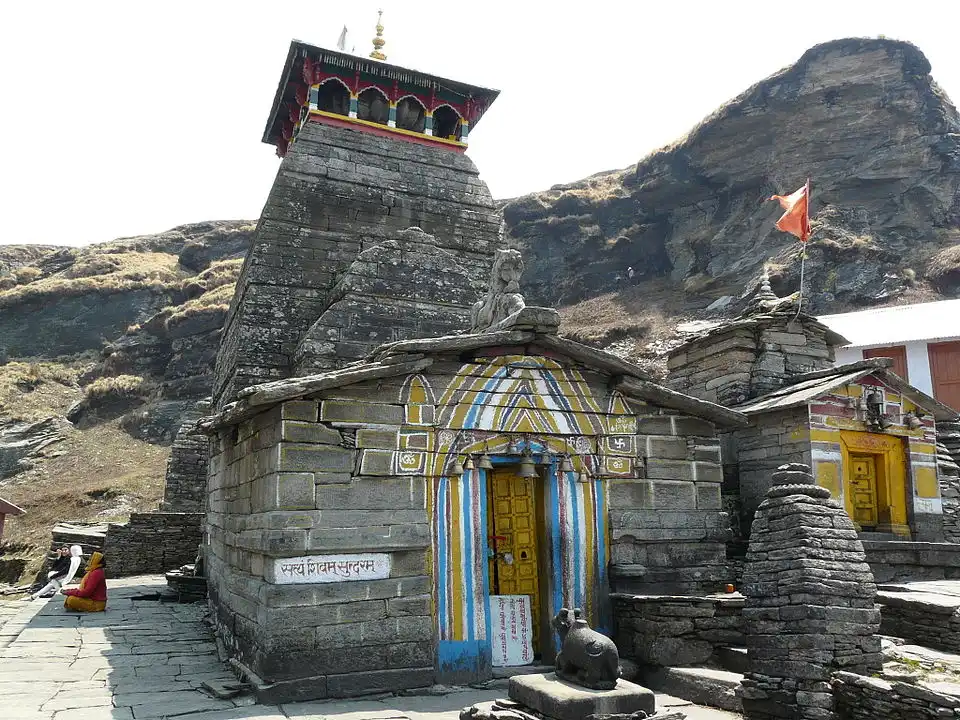
After Kedarnath, Tungnath is the most popular Temple in Panch Kedar. Tungnath is the highest temple in India in terms of altitude. The Hight of Tungnath Temple is about 3,680m or 12,065 ft. It is the world’s highest Shiva Temple among all.
Beautiful mountains near Tungnath are Neelkanth, Kedarnath, and Nanda Devi. The Shiva temple here is on a stone-paved platform overlooking a cliff. There are five statues of faces of the Pandavas along with the deities of Vyasadeva and Kalabhairava in the temple. And there is also a small temple of Goddess Parvati.
You can get here by trekking from Chopta (7km, 4 hr), which is 37km from Ukhimath. The distance from Chopta to Tungnath is about 7km which can be covered in 4 hours of walking.
Tung Nath peacefully located on the Chandranath Parvat is the highest Shiva temple in the world and the highest Panch Kedar temple of Uttarakhand.
It is one of the third Kedar (Tritiya Kedar) in the pecking order of the Panch Kedar Yatra 2024. Tungnath is at an elevation of 3,680 meters above sea level. And it is considered to be more than 1,000 years old.
Travel Tips for Tungnath
- For a physically fit person trekking to Tung Nath can be easy.
- The trek route is comparatively easy but running, cycling and swimming can all help improve cardiovascular stamina.
- One can also find mules and porters to hire, especially during the peak season.
- Avoid traveling during the monsoon season. Because the high mountains of Uttarakhand are prone to landslides during the rain. After the Landslides, roads get blocked and you can get stuck there.
- Being situated in a remote area, facilities like ATMs, and petrol pumps are not available at Tungnath, one has to go all the way to Gopeshwar or Ukhimath to get these facilities.
Related Posts:
- Kedarnath Flood Story
- Kedarnath Jyotirlinga
- Kedarnath Shivling Story
- Kedarnath Facts
- Kedarnath Bhajan
4. Rudranath Temple (Fourth Panchkedar)

Next, you can go to Gopeswar by road and then to Sagar. From there it is a 24km trek to Rudranath, dedicated to the head of Lord Shiva.
There are mesmerizing views of the Trisul, Nandadevi, and Parbat peaks, and down below there are small lakes flowing with the enchantment of nature’s beauty.
To reach Rudranath you can also walk from Kalpeswara. And Rudranath is the highly revered temple of Lord Shiva is peacefully situated in the Garhwal Himalayas.
It is the fourth temple to visit in the sacred Panch Kedar Yatra 2024. The angelic temple is snuggled inside the rhododendron forests and the alpine grasslands.
Travel Tips for Rudranath
- The thrilling trek to Rudranath temple can either begin from Sagar village, Helang, or Urgam village.
- Rudranath temple is the toughest one to reach in comparison to other temples of Panch Kedar.
- The Himalayan ranges adding to the glory of Rudranath are Nanda Devi, Trishul, and Nanda Ghunti.
- Rudranath Temple remains closed from November to April due to heavy snowfall just like Kedarnath Temple.
- Every day the morning aarti at the sacred Rudranath Temple starts at 8 am in the morning and 6:30 pm in the evening.
- The trail leading to Rudranath is challenging and risky but equally rewarding and adventurous.
- It is sensible to check with local authorities, tour guides, or tour operators about the weather and condition of roads especially during monsoon before you actually start your trek or trip.
- having a skilled and experienced guide with you would be helpful for you because the guide would know the route very well and trekkers won’t lose their way.
5. Kalpeshwar Temple (Fifth Panchkedar)
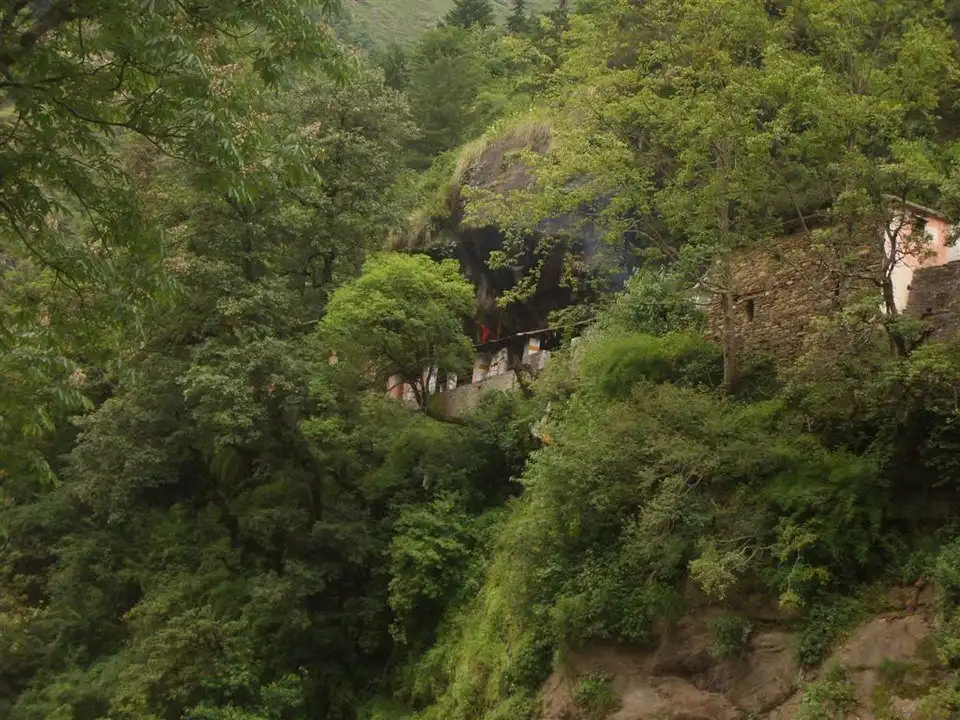
To reach Kalpeshwar temple you have to travel by bus to the village of Helang, 14km south of Joshimath, and from Helang you have to walk 9km to the village of Urgam, which has basic accommodation and food. From there it is a 1.5km walk to Kalpeswara Temple. Kalpeshwar is dedicated to the matted hair (Jata) of Lord Shiva. And it is made up of rock that is entered through a cave.
Kalpeshwar is the last and fifth Temple in the list of Panch Kedar Yatra 2024. And it is the only temple of the sacred Panch Kedar that remains open throughout the year.
Lord Shiva is worshipped in the form of matted hair at Kalpeshwar. And the trace to this sacred shrine goes through thick forests and lush green meadows. There is also an old Kalpavriksha tree here which is believed to be the wish-granting tree in Hindu mythology.
Travel Tips for Kalpeshwar
- There is not much beauty in nature that can be seen.
- Rudranath Temple can be reached from Kalpeshwar by trek. One should check the Trek route from Kalpeshwar to Rudranath.
- Photography may be prohibited inside the temple and especially inside the sanctum. Please follow the guidelines outlined by temple authorities and respect the purity of the place.
According to Mahabharata, when Pandavas were searching for Lord Shiva, he turned himself into a bull to avoid detection. However, when Bheema tried to capture the bull, it disappeared. After that, reappeared in the form of body parts at five locations. As a result, these five locations are presently known as Panch Kedar.
The hump reappeared at Kedarnath, the arms appeared in Tungnath, the navel appeared in Madhyamaheshwar, the face showed up at Rudranath and the hair and head appeared in Kalpeshwar.
It is said that the Pandavas built temples at these five places for worshipping Lord Shiva. Many devotees of Lord Shiva take part in Panch Kedar Yatra at all the five Shiva temples mentioned above.
Panch Kedar Trek
The Panch Kedar trek is a pilgrimage trek that covers five ancient Hindu temples dedicated to Lord Shiva, located in the Uttarakhand region of India.
- The total distance covered in the trek can vary depending on the route taken but typically ranges between 150 to 200 kilometers (93 to 124 miles).
- The trek can be completed in 15 to 20 days, depending on the pace and duration of stops along the way.
- It is a challenging trek that involves steep ascents, rugged terrain, and high altitude, so it is recommended for experienced trekkers with good physical fitness.
Char Dham Distance from Delhi:
- Delhi to Kedarnath (466 km)
- Delhi to Badrinath (555 km)
- Delhi to Gangotri (530 km)
- Delhi to Yamunotri (485 km)
FAQ About Panch Kedar
Here are the most frequently asked questions about Panchkedar.
What is Panch Kedar?
Panch Kedar refers to a group of five Hindu temples dedicated to Lord Shiva located in the Indian state of Uttarakhand. These temples are considered to be among the most sacred shrines of Lord Shiva in India and are an important pilgrimage destination for devotees of Lord Shiva.
The five temples that make up the Panch Kedar are Kedarnath, Tungnath, Rudranath, Madhyamaheshwar, and Kalpeshwar. Each temple is believed to be associated with a different part of Lord Shiva’s body: Kedarnath with the hump, Tungnath with the arms, Rudranath with the face, Madhyamaheshwar with the navel, and Kalpeshwar with the hair.
According to Hindu mythology, the Panch Kedar temples were built by the Pandavas, the heroes of the Hindu epic Mahabharata, as a way to seek forgiveness from Lord Shiva for their role in the Kurukshetra war. The temples are located in remote areas of the Himalayas and are considered to be difficult to access, adding to their spiritual significance for pilgrims who undertake the journey to visit them.
Where is Panch Kedar?
The Panch Kedar is located in the state of Uttarakhand in northern India. The five temples that make up the Panch Kedar are spread across different parts of the Garhwal region of Uttarakhand.
- Kedarnath Temple, which is the most famous and important of the Panch Kedar temples, is located in the Rudraprayag district of Uttarakhand.
- Tungnath Temple is located in the district of Rudraprayag, while,
- Rudranath Temple is in the district of Chamoli.
- Madhyamaheshwar Temple is located in the district of Rudraprayag, and,
- Kalpeshwar Temple is situated in the district of Chamoli.
All of these temples are located in the Himalayas and are situated at a high altitude, requiring a certain level of physical fitness and endurance to reach them. The region is known for its stunning natural beauty, and many pilgrims also visit the Panch Kedar as part of a trekking or hiking expedition in the Himalayas.
How to visit Panch Kedar?
Visiting the Panch Kedar temples requires some planning and preparation, as the temples are located in remote areas of the Himalayas and are not easily accessible by road. Here are some general guidelines on how to visit the Panch Kedar:
- Plan your itinerary: You can start by planning your itinerary and deciding which temples you want to visit. You can either visit all five temples or choose to visit some of them based on your preference, time, and physical fitness level.
- Reach the nearest town: The nearest town to the Panch Kedar temples is usually Gaurikund, which is located at the base of the Kedarnath Temple. You can reach Gaurikund by road from major cities in Uttarakhand such as Haridwar, Rishikesh, or Dehradun.
- Trek to the temples: From Gaurikund, you will have to trek to each of the temples as they are not accessible by road. The trek to each temple varies in difficulty level, and you may need to be physically fit to undertake the journey. There are also options to hire a pony or a mule to carry your luggage and help you with the trek.
- Accommodation: You can find basic accommodation and food facilities at each of the temples or at guesthouses along the trekking route. However, it’s recommended to carry some essential supplies such as warm clothes, medicines, and snacks with you.
- Best time to visit: The best time to visit the Panch Kedar temples is during the summer months of May to June and September to October when the weather is pleasant, and the trekking routes are open. The temples remain closed during the winter months due to heavy snowfall.
It’s advisable to plan your trip well in advance and consult with a local travel agent or tour operator for a hassle-free journey.
8 thoughts on “Panch Kedar Yatra 2024 (Travel Guide)”
- Pingback: पंचकेदार यात्रा के 5 मंदिर और नाम: उत्तराखंड के प्राचीन शिव मंदिर
- Pingback: Best Time To Visit Kedarnath Badrinath - Chaar Dham Yatra
- Pingback: Kedarnath Temple History | Pandavas Story About Panch Kedar
- Pingback: Char Dham Yatra 2023 | Yamunotri, Gangotri, Kedarnath, Badrinath
- Pingback: Best Time To Visit Kedarnath Temple in Uttarakhand (2023)
- Pingback: Kedarnath Dham | Char Dham Yatra 2023 - Uttarakhand Temples
- Pingback: Temperature in Kedarnath Today | Weather Forecast Now (7 Days)
- Pingback: Kedarnath Yatra 2023: Opening Date, Booking, Registration
Leave a Comment Cancel reply
Save my name, email, and website in this browser for the next time I comment.
Panch Kedar - Trek And Yatra
1. kedarnath, architecture and significance of kedarnath temple.

How To Reach Kedarnath
Best time to visit kedarnath.

2. Tungnath
Architecture and significance of tungnath.

How To Reach Tungnath
Best time to visit tungnath.

3. Rudranath

How To Reach Rudranath
Best time to visit rudranath.

4. Madhyamaheshwar
Architecture and significance of madhyamaheshwar.

How To Reach Madhyamaheshwar
Best time to visit madhyamaheshwar.

5. Kalpeshwar
Architecture and significance of kalpeshwar.

How To Reach Kalpeshwar
Best time to visit kalpeshwar.

Formation of Panch Kedar

This post was published by Saumya Bansal
Share this post on social media Facebook Twitter
Uttarakhand Travel Packages
Compare quotes from upto 3 travel agents for free
Delhi Nainital Mussoorie Tour Package - 5 Nights 6 Days
Exciting uttarakhand family tour package, relaxing uttarakhand classic tour package, charming dehradun mussoorie tour with dhanaulti & hardiwar, char dhaam yatra - gangotri, yamunotri, badrinath and kedarnath, quintessential uttarakhand - nainital, jim corbett & more, related articles.

Art & Culture
Kumaoni Holi 2024 - The Colourful Festival of Uttarakhand

Kailash Mansarovar Yatra
Culture of Uttarakhand - Traditions, Festivals and More

Panch Prayag - The Five Sacred Rivers
Traditional Dresses of Uttarakhand
Languages of Uttarakhand - 6 Languages From The Devbhoomi Of India
Historical Places in Uttarakhand For A Heritage Tour
Top Religious Places in Uttarakhand

Uttarakhand Government Wants You To Have A Spooky Experience In Your Next Trip - The Ghost Tourism Project!

5 Airports in Uttarakhand

Fairs & Festivals
21 Festivals of Uttarakhand - India's Devbhoomi
7 Enthralling Treks In Uttarakhand For Adventure Seekers
10 Treks in Uttarakhand and Himachal Pradesh for Beginners
Enthralling Places For Camping in Uttarakhand

The Faraway Travel – Sari Village in Uttarakhand #TWC
Trek in Uttarakhand: How I survived the cloudburst
5 Life Lessons Learnt on a Himalayan Trek #TWC
My First Encounter with the Majestic Himalayas #TWC
Trekking in Uttarakhand To Shikar Varnavat #TWC

Food of Uttarakhand : Scrumptious Delicacies From The Land of Natural Beauty
Are You Ready To Watch The Most Awaited Man vs Wild Episode Yet?
The Mystery of the Skeletal Remains at Roopkund Lake

Backpacking
137 More Peaks Opened For Trekking in Himalayas: Good or Bad?
Experience Nature At It's Best At This Mid-Himalayan Range in Uttarakhand!
Uttarakhand Food Festival To Be Held This Week – What Are Your plans?
The Journey To And Through The Hidden Valleys Of Uttarakhand
Junoon in the Hills, a Homestay Just 300 Kms from Delhi!

Uttarakhand Is Set to Get a Summer Capital!
4 Very Rare Snow Leopards Sighted in Uttarakhand! Read More Here
Delving into the forbidden – the Nelang Valley
Comments on this post
Browse package collections, uttarakhand package collections.
Uttarakhand Honeymoon Packages
Badrinath Kedarnath Tour Packages
Top Listed Packages
Uttarakhand Religious Tour Package
3 Days Tour Package in India: Char Dham Yatra By Helicopter
Browse Hotel Collections
By hotel type.
Best Resorts in Uttarakhand
By Star Category
Best 5-Star Hotels In Uttarakhand
For Special Purposes
Stunning Workations in Uttarakhand
Top Places in Uttarakhand

Get the best offers on Travel Packages
Compare package quotes from top travel agents
Compare upto 3 quotes for free
- India (+91)
*Final prices will be shared by our partner agents based on your requirements.
Log in to your account
Welcome to holidify.
Forget Password?
Share this page
Choose Trek
Customise Trek
Suggest me a trek
Rent a gear
Volunteer Program
Blogs & Articles
Discounts & Offers

Panchkedar Trek & Drive
Max Altitude
Moderate To Difficult
Trekking KM.
38,000 /Person
- +5% GST (Goods and Services Tax)
- Rishikesh to Rishikesh | included transport
- Kedarnath, Madhmaheshwar, Tungnath, Rudranath, Kalpnath
Help & Support
- +91 9368882322
- 10:00 hrs to 18:00 hrs Monday - Saturday GMT +5:30 Sunday Closed
- [email protected]
- Cost & Cancellation Terms
- Risk & Respond
How To Reach
Trek essential.
- Important Links
Fixed Departure
- Trail Type -
- Rail Head Haridwar
- Airport Jolly grant airport Dehradun
- Base Camp -
- Summer Treks (Mid Apr - Jun)
- Monsoon Treks (Jul - Aug)
- Autumn Treks (Sep - Mid Nov)
- Services from Rishikesh to Rishikesh | Included Transport
- Meals Meals while on trek & at Hotel/Guesthouse (Veg & Eggs)
- Stay Hotel/Guesthouse/Village Homestay and Camps (Triple/Quad sharing)
- Region - Uttarakhand
- Duration - 12 Days
- Grade - Moderate To Difficult
- Max Altitude - 13000 Ft.
- Approx Trekking Km - 130 Kms.
After Char Dham Yatra the Panch Kedar or the five temples dedicated to Lord Shiva are considered significant in Indian Mythology. As per the saga, the five Kedar have relevance from Mahabharata. The legend says that Lord Shiva was unhappy after the Mahabharata War due to wrong practices during the war. Also, the Pandavas were in distress due to the killings of their brothers (Kauravas) and Brahmins in the war. They wanted to seek his blessings but Lord Shiva did not want to oblige them. So he hid disguised as Nandi in the Garhwal mountains.
When Bhim one of the Pandavas spotted the Nandi, Lord Shiva submerged in the earth and reappeared at five different locations in pieces. These panch spots are the Panch Kedar . It is believed that Nandi’s hump is at Kedarnath , his legs at Tungnath , his mid-torso at Madhyamaheshwar , his hair is believed to be at Kalpeshwar and his face at Rudranath . The circuit of these prime shrines completes the Panch Kedar Trek.
Apart from its devotional attribute, this wonderful hike has adventure and gives an adrenaline rush as you touch every temple. All of these Cedars are located in the western Uttarakhand or the Chamoli district. They are all accessible by roads and stunning trails concealed by deep woodlands. The trek begins from Haridwar and then Joshimath which is the starting point of the long trek.
Each day is a discovery of the hidden thrill of the Garhwal Himalayas, eye-soothing meadows, verdant forests of rhododendrons, fierce Ganges, chirping of birds and lively animals dancing around, all of this adorned by snow-crowned peaks. Camping amidst such wilderness is an exceptional experience that makes us grow as a person. The trek route is easy to grade but provides a different set of challenges of 12 days of survival in the jungle.
It is believed that this Yatra completes the purpose of life. But being a trekker one must not miss this fun, easy and incredible adventure. Come and walk the path like a nomad for 12 days.
Who can participate
- Age; 15 years.
- Experience of any high altitude trek, at least 1 treks of 4,000m/13,100ft.
- The climber must be fit and have sufficient stamina to cover 5 km of distance in 30 minutes without a stress.
- The climber should be able to carry a 12-16 kg backpack.
Health Awareness
- Pulse rate at rest must be in between (60 to 90 beats per minute)
- Blood Pressure Reading must be in between (DIASTOLIC 75 – 85, SYSTOLIC 100 - 130 mm Hg)
- Respiratory rate at rest must be in between (12 to 20 breaths per minute)
- Should not have Liver and kidney issues
- Should not have Diabetes Mellitus, Bronchial Asthma, Epilepsy, Heart problems, Hypertension etc
- No pacemaker implant
- People with the Sinus issues please contact to trek coordinator before booking the trek
- If your BMI is not normal, Please contact our Trek coordinator before Trek booking.
Government Employees {SCL}
Government Employees can avail the benefit of Special Casual Leave (SCL) when you join us for a trekking expedition. As per the rules of the Pay Commission, Special Casual Leave can be availed for up to 30 days in a calendar year for trekking/mountaineering expeditions through a registered organization. Trek The Himalayas is a registered adventure tour operator by Indian Mountaineering Foundation (IMF) and Ministry Of Tourism (MOT) Trekkers have to apply for leave at least 20 days before trek departure date.
- Junior trekkers (below 15 years) should have a company of parent/guardian.
- Trekkers between 15 to 18 years can come solo with the disclaimer form signed by parent/guardian.
- Medical & Disclaimer Form (Mandatory Documents) Click here
Reporting Place : TTH Head Office, Tapovan Laxmanjhula at 6:00 am
Driving Distance: 180 km, 7-8 hrs
- Breakfast and lunch on the way (exclusive of charges)
Altitude: 1,319 m/ 4,327 ft
Overnight stay : Guest House
- Meals : Dinner
- Network : Available
The journey to the Panch Kedar begins at the holy city of Rishikesh from where we will travel to Guptakashi via Devprayag and Rudraprayag. The route to Guptakashi is extremely beautiful as you will drive along scenic roads with River Ganga and then River Alaknanda accompanying you.
From the name Guptkashi, you might have guessed that it means hidden Varanasi. It is one of the most prominent pilgrimage places in the country. Located on the way to the Kedarnath trek, Guptkashi lies in Mandakini Valley and the presence of the Champak flower is pretty prominent here. Guptkashi is nothing less than a natural wonder with lush green valleys and the backdrop of the Chaukhamba Peak, standing tall in its snow-ensconced beauty. As per the Puranas when the Kurukshetra War was over, Lord Krishna advised the Pandavas to atone for their sins from the crimes they committed during the war, and as such the Pandavas went out in search of Lord Shiva. Pandavas were trying to reconcile with Lord Shiva for their journey to heaven. Shiva concealed in Gupt Kashi in the disguise of Nandi. Later Shiva escaped to Kedarnath where Pandavas found him. Hereditary priests stay in GuptKashi in winter when the Kedarnath temple is closed. When you reach in the evening try to catch up at ArdhNarishwar temple, a unique temple that presents the idol representing half Lord Shiva and half Goddess Shakti. Sleep well at your Guest house at night as tomorrow, you will trek to Kedarnath tomorrow.
Altitude: 3,584 m/ 11,758 ft
Drive distance: 30 km, 1-2 hrs
Trek distance: 16-18 km, 8-9 hrs
Overnight stay: Guest house (Dormitory)
Meals: Breakfast and Dinner
- Lunch is on the way (Exclusive of charges)
From Guptkashi you will head to Gaurikund from where the Kedarnath Trek starts. Upon arrival at Kedarnath ji proceed for the trek for holy darshan at Kedarnath temple. Kedarnath Dham needs no introduction. It is one of the 12 Jyotirlingas of Lord Shiva, a perfect Himalayan getaway with terrific historical and mythological prominence. More importantly, it is just a magnificent spot of beauty and serenity with the Kedarnath Range as the backdrop.
From Gaurikund start your trek and continue through Rambada Bridge to reach Jungle Chatti, your first stop point. Gaurikund to Jungle Chatti is at a distance of 4 km. If you are tired, take a break here, have some water and refreshments and continue on your journey. From Jungle Chatti, the next stop is at Bheembali, which is at a distance of 3 km from Jungle Chatti. There are accommodations along Bheembali as well. The third stop is at Linchauli, which is 4 km Linchauli, accommodations are available at Linchauli as well. The mountain views from Linchauli are extraordinary and will take all your tiredness away. From Linchauli, it is another 4 km to the Kedarnath base camp. From the base camp, you will get a panoramic view of the mountain environs and the temple not very far away. You can feel the divine mysticism and the spiritual aura of the place as soon as you set foot on the Kedarnath shrine. The Kedarnath peak stands tall behind the temple adding to the divine aura of the temple. Overnight stay is arranged in camps/guest house in Kedarnath.
Drive To Guptkashi: 30 km, 1 hrs
Trek distance: 16-18 km to Gaurikund, 8-9 hrs
Overnight stay : Guest house
- Meals: Breakfast and Dinner
- Network: Available
Get up early in the morning before dawn and after taking a bath visit the temple by 4:45 am for the Abhishek’ to Kedarnath Shiva. After Temple Darshan and Post breakfast begins your downward journey from Kedarnath. Trek down to Gauri Kund, which is known for its hot spring. There is a famous Parvati temple as well. According to legends, Gaurikund is where Parvati did penance involving yogic and ascetic practices to win Lord Shiva’s heart and it is believed that Lord Shiva accepted to marry Parvati here and they got married in the Triyuginarayan temple. From Gaurikund you will drive to Guptkashi. Overnight stay is in Guptakashi.
Driving Distance: 35 km, 1-2 hrs
Trekking Distance: 5-6 km, 5-6 hrs
Overnight stay : Homestay
- Meals: Breakfast, Lunch, and Dinner
Another exciting day and its time to move to the second Kedar – Madhamaheswar. The journey begins from Guptakashi by road to Ransi, a 35 km drive. After which there is a 6 km trek to Gaundhar. The route is made of mud and scree. The motorable road ends at Ransi village and the trek starts from here. It is a well-paved path with the Madhyamaheswar Ganga River flowing on the right. It is an easy route as it is mostly downhill and it is since the route is a part of the Kedarnath Wildlife Sanctuary, the views, and the biodiversity is amazing. You can witness the rich biodiversity of the region with its beautiful flora and fauna. You will encounter numerous butterfly species, lizards, mountain goats, guard dogs, sheep, monkeys, and various bird species as well. The mountain and the forests will give you an amazing opportunity to be close to nature and absorb its peaceful vibrations.
Gaundhar is located at an elevation of 3073 meters and is the base camp for hikers who want to reach Madhyamaheshwar. You will witness the holy merging points of rivers Madhyamaheswar Ganga and Markanga Ganga. It is a stunning viewpoint, never to miss. The temple itself is set against a beautiful backdrop of green hills and meadows.
Enjoy your another tent stay at the Gaundhar camp. Sleep well for the upcoming Kedar next morning.
Altitude: 3,490 m/ 11,450 ft
Trek distance: 10 km, 7-8 hrs
Overnight stay : Village homestay
- Meals: Breakfast, Lunch, and Dinner
- Today we will trek to the Madhyamaheswar Templer, which is often considered the second Kedar and also the fourth Kedar by many. Today is the hardest day of the trek as you will climb uphill all throughout the trek and gain quite a bit of altitude. It is an overwhelming hike of 5-6 hours covering a distance of 10 km to Madhyamaheshwar temple. The temple is 3490 meters in height and is a striking element hidden between the alpine trees of the Garwhal Mountains. The shrine is placed perfectly between green meadows and lush forests. After breakfast at Gaundhar, head out on your trekking adventure towards Madhyamaheswar. Start the day early so that you can reach the temple by lunchtime. The trail is quite similar to the previous day but it gets a lot steeper half an hour before the climb. As you climb towards the temple you will witness beautiful grasslands covered by pine trees. The trekking trail is well-marked there is no chance of losing the track. All throughout the day, you will notice breathtaking scenery at every juncture and it gets better and better as you keep climbing up. There are also fixed benches along the route to sit down if you get tired. Along the route, you will also spot some shops that sell snacks and drinks. You can reenergize yourself at these points. The final few hundred meters to the temple is a flat walk and the view that opens up in front of you will leave you with a dearth of words. Once you reach the leveled path, you will reach the temple in a few minutes and you will feel quite satisfied and accomplished after arriving at the mighty temple. Madhyamaheswar temple is thousands of years old and you can get a close look at the ancient architecture. Lord Shiva is worshipped in the form of navel-shaped Lingam here. Along with the main temple, there are also two small shrines, one dedicated to Shiva’s consort Parvati and another to Ardhanarishvara - a composite male and female idol of Lord Shiva. You will halt the night next to the temple. The camping place is stupendous with clear sights of Kedarnath, Chaukhamba, and Neelkanth. Have your hot dinner and rest for the night
Altitude: 1,319 m/ 4,327 ft
Trek Distance: 16-17 km, 8-9 hrs
Drive to Chopta : 50 km, 1-2 hrs
Overnight stay : Camps/Cottages
Today you will head to Chopta which is 50 km from Ransi. After visiting the temple in the morning we will descend to Ransi and drive towards Chopta.
Chopta is at a distance of about 50 km from Ransi and will take approximately 1-2 hrs. You will drive to Chopta via Kalimath. The road to Chopta is a serene ride rising slowly. Chopta is a popular tourist destination hence it is crowded. It is a very picturesque destination that is also a camping site for the Chopta Chandrashila trek. The beauty of Chopta Valley is such that it is often known as the ‘Mini Switzerland od Uttarakhand’. It is also a great spot for birdwatching, often considered a paradise for birdwatchers with as many as 240 species of birds. The most prominent varieties are the Himalayan Monal, Himalayan Griffon, Himalayan Swiftlet, Hill Partridge, and Scarlet Finch. It is an extremely peaceful location to relax after a long tiring day. Enjoy your night stay in Camps/Cottaes
Altitude: 3680 m/ 12073 ft
Trekking Distance : Chopta To Tungnath, and return (Trek 7 km)
Trekking Time: 7 to 8 hrs
Water source: none
Overnight stay: Camps and cottages Meals : Breakfast, Lunch, and Dinner
Today will be an exciting day as you will climb to the highest Shiva temple in the world. Located at 3680 meters elevation Tungnath temple is over 1000 years old.
The route throughout the temple is cement paved with stairs and grills for safety. There are various stalls at the base of the temple that gives the vibe of a pilgrim spot. One thing to note about the trail to the top is that it is entirely decored with rhododendrons that change their colors from red to pink to white as you slowly rise above. We will start in the early hours of the morning so that we can reach Tungnath while it is still daytime and you can enjoy the golden hour from the top. The path is 3.5km long and normally it takes 4-5 hours to reach. Today’s hike is going to be a little grueling as you will have to make sharp turns around the mountains. Chandrashila trek has many hairpin bends and at the 10th bend, you will come to a flagpole section from where you can get a good view of the Chandrashila summit. Ravanshila connects Chandrashila to Tungnath. The temple is seen from a distance that stands right in front of a rocky cliff with infinite beauty around it. The entrance to Tungnath temple is at the 11th bend. Tungnath is where the hands of Lord Shiva are said to have appeared. Tungnath Temple also has a mention in the Mahabharata, according to which Arjun was the first person to lay the foundation of the temple.
Once you get back to the base, you will stay in Camps.
Altitude: 2,350 m/7520 ft
Driving Distance: 35 km, 1 hrs
Trek Distance: 10 km, 6-7 hrs
Overnight stay : Camp
Having visited the Tungnath Temple, we will head to Sagar village and trek to Panar Bugyal from there. Sagar village is located at a distance of 35 km approximately. Panar Bugyal is about 10 km away from Sagar and you have to complete the journey by trekking.
Panar Bugyal as the name suggests is a highland meadow that offers beautiful views of Mt. Trishul, Nanda Ghunti, Nanda Devi, and Bandarpoonch. Sunset is especially beautiful here as the golden rays of the sun hit the snow-covered peaks and paint the sky and the mountains in hues of red, orange, purple, and pink. Needless to say, it is an awe-inspiring experience.The best thing about the trek is that along with spiritual importance, each moment is taking you closer to nature. It is the experience of being in the wild. This trail is also a great route to encounter birds like Himalayan Monals, Green Bee Eaters, and Black Drongos.
Altitude: 3600 m/ 11811 ft
Trek Distance: 14 km, 8-9 hrs
Overnight stay : Camps/Homestay
- Meals : Breakfast, Lunch, and Dinner
Wake up in your cozy tent rooms and take a few breaths of freshness. Today you will hike up to Rudranath. At 2286 meters in height, it is considered as the hardest and the most durable temple compared to the other four ones. The journey to Rudranath will be life-altering. The natural rock temple has rock-paved pathways surrounded by dense rhododendrons. The climb is 8 km long and a moderate hike. Rudranath Temple lies in the laps of Himalayan meadows, where the face of Lord Shiva is believed to have appeared. Inside the temple, you can see a beautiful stone-carved face that looks almost lifelike. The rock-carved sculpture of Shiva wears a smile on his face, which seems to melt away all your worries. Rudra Ganga flows near the temple, adding to its mystical allure. If you want to visit the temple independently, and not as a part of the Panch Kedar Trek then you should do so in the Hindu month of Shravan, when there is an annual fair held in the region and the entire area lights up and the shrine becomes even more beautiful.From Panar Bugyal take the road that moves towards the ridge on the left. En route, you will find some boulders and views of the snow-capped peaks. The trail slowly and gradually climbs up the ridge and after half an hour of walking, you will see the Panar meadows below you. The verdant expanse of the Panar meadows and the snow-capped peaks in the foreground is just the perfect scene to enjoy nature’s splendour and capture Instagram-worthy pictures. Continue on the ridge until you reach a section where there are huge boulders on the left and a green valley on the right. As you continue on the path, you will come to a patch where there are huge boulders on each side of the trail with the ridge in between. The greenery all around and the snow-covered beauty will strike you spellbound with their beauty. Continue on the gradually ascending mud trail and soon you will see prayer flags and bells in the distance. It will take about 20 minutes to reach the bells. Following this, the trail descends into the valley with bright flowers and shrubs all around you. After about an hour of hiking, the Rudranath temple becomes visible. 20-30 minutes into the hike and you will come across painted tourist huts, walk past the huts, and in a few minutes, you will arrive at the shrine. Once you reach the Shiva shrine, one of the Panch Kedars you will see the first real views of the biggest Himalayan peaks of Nanda Devi, Trishul, and more. Rudranath temple is surrounded on each side by Surya Kund, Chandra Kund, Manas Kund, and Tara Kund. After some soothing moments at the sacred place, it will be time to go back to Panar. Enjoy your nights stay in tents.
Altitude: 1259 m/4028 ft
Driving Distance: 30 km, 1-2 hrs
Trekking Distance: 10 km, 5-6 hrs
- Overnight stay: Hotel
Having done the Rudranath trek, we will be descending to Sagar village once again followed by a drive to Pipalkoti.
Start your day with a hearty breakfast and begin your journey downwards. The path is a little meandering and soon you will reach the grasslands of Lunti Bugyal, from here take the trail on the left and you will reach a stream in about 45 minutes. The mud trail is well-defined. The trail descends further to a wooden bridge in the forest and another beautiful meadow comes into view, which is surrounded by alpine forests. A few tea stalls line the meadow that serves tea and refreshments to the pilgrims, there’s also a shade to protect the pilgrims from rain and sun. The area is marked by a boundary of colourful flags. Continuing along the meadow, you will enter another forest cover and can witness the forest cultivation done by the villagers. Sagar village soon becomes visible as well. Continue down along the left and you will come across a stream just before entering Sagar village. After the stream, the trail becomes pretty narrow and rocky until you reach Sagar. At the end of the trail, there is a bus stop, and crossing the road, you can see Sakleshwar Mahadev Mandir.
From here, we will drive to Pipalkoti, which is at a distance of 30 km and will take about an hour or two. Pipalkoti is a small hamlet in the Chamoli district of Uttarakhand. Known for its unique beauty and serenity, this place often serves as a rest stop for people visiting Badrinath, Auli, Valley of Flowers, or Hemkund. The hamlet is located by the banks of the Alakananda River and also offers a glorious view of the mountain peak of Nanda Devi, Mana Parbat, Neelkanth, and Hati Parbat. Your night stay is arranged at Pipalkoti.
Driving Distance: 70 km, 3 hrs
Overnight Stay: Hotel
- Meals: Breakfast, lunch, and Dinner
We will start the day with a hearty breakfast and we will take a ride from Pipalkoti towards Kalpeshwar Temple. From Pipalkoti, we will first drive to Helang Village from where we will visit Vridha Badri, one of the Sapt Badris. The temple dates back to the time when India was under the rule of the Gupta Empire. This temple holds a big religious significance. Lord Vishnu is worshipped here in the form of an old man.
The legend says that Lord Narad once decided to perform penance on this site to please Lord Vishnu. Appeased by his prayers, Vishnu appeared in the form of an old man and answered all prayers of Narad. An idol of Vishnu was thus constructed in the form of an old man here. From Vridha Badri Temple we will proceed towards Urgam village.
Urgam village is a peaceful habitat at 2134 meters elevation from where you start walking to Kalpeshwar. The altitude so far will be the same as Urgam village. Urgam village is known for its serenity and peacefulness, a place where saints meditate. The entire scenery is revitalizing Kalpeshwar. You will slowly climb up in the diverse forests and animals grazing around. The trail is moderate with a lot of rest. You will be greeted by villagers at every step. It is a short hike to Kalpeshwar.
Folklore also has it that Kalpeshwar was the favourite meditative spot for sages like Durvasa and Arghya. While at the temple, also pay respect to the Kalpeshwar tree, it is believed the tree grants all your wishes. From Kalpeshwar, you will also get stunning views of Nanda Devi, Mt. Trishul, and Nanda Ghunti. 150 m behind the temple premises lies the ‘Dhyan Badri’ temple, although not one of the five Badris, this is yet another mystical experience for you. Many people visit Kalpeshwar temple because of the gorgeous views of the untouched mountain valley, the terraced fields of the villages, and the dense woods. After paying your respect at the temple and spending some time in the serene environs and we will return to Pipalkoti.
Driving Distance: 215 km, 7 hrs
- Breakfast and lunch on the way (Exclusive of charges)
- Rishikesh Dropping by Evening.
The ride will commence at 6 am and you will reach Rishikesh around 5 - 6 pm. Your Breakfast and Lunch will be on the way at a roadside inn, exclusive of charges, after having your morning tea/coffee you can leave for your next destination. We advise you to book further travel after 7 pm.
- Pick Up Place
At first you have to reach Rishikesh, after that TTH will take care of your further travel plan.
Our Pick-up place
Trek The Himalayas Head office , Tapovan Laxmanjhula, Landmark -Nainital Bank opposite Shiv Vilas Hotel
Options to reach Rishikesh
1. Take overnight train/bus to Rishikesh.
2. Take overnight train/bus to Haridwar and drive to Rishikesh (35 min drive with normal traffic).
We always recommend to go for the govt. Buses over the private ones outside the bus station as based on the experience we have found that there are very high chances of delay involved with private buses. Also, govt. Buses are always more reliable. Whichever bus you choose, just make sure to reach Rishikesh at least by 05:30 am positively.
3. Take the flight to Dehradun airport (Jolly Grant Airport) and drive to Rishikesh (20 km, 30 min), if coming by flight then come one day early.
- TTH’s Tata Sumo, Tempo Traveller or similar vehicles will pick-up you.
- Pick-up is included in the cost of the trek.
- If you wish to upgrade the transport service, please contact the Trek Coordinator.
- After morning tea move to Rishikesh
- Reach Rishikesh by 6:00 pm
- Drop off point is Trek The Himalayas Office (Tapovan) Laxmanjhula
- Plan your further travel plan after 7:00 pm
- Cancellation Policy
What's included 1. All the Accommodation are in triple and quad sharing in Hotels, Guesthouse, camps, and cottages
2. Meals while on trek (Pure Veg.) as per itinerary 3. All necessary permits and entry fees. 4. First aid medical kits, oxygen cylinder. 5. Mountaineering qualified & professional trek Leader, guide, and Support staff. 6. Transport from Rishikesh to Rishikesh 7. All road transfers by NON AC Vehicle like Mahindra Max Jeep, Tempo Traveller, or Similar to Panch Kedar sector & back.
What's Excluded 1. Any kind of personal expenses. 2. Food during the transit. 3. Insurance. 4. Any kind of emergency evacuation charges 5. Mules or porters to carry personal luggage. 6. Anything not specifically mentioned under the head.
Things can be provided on demand and availability (participant has to pay extra for these things)
1- Satellite phone/set-phone - is a type of mobile phone that connects via radio links via satellites orbiting the Earth instead of terrestrial cell sites like cellphones. Therefore, they can operate in most geographic locations on the Earth's surface.
2- Gamow/PAC HAPO Bag (Portable Hyperbaric Bag) - is a unique, portable hyperbaric chamber for the treatment of acute mountain sickness (AMS), also known as altitude sickness.
3- AEDs (Automated External Defibrillators) - are portable life-saving devices designed to treat people experiencing sudden cardiac arrest, a medical condition in which the heart stops beating suddenly and unexpectedly
Insurance is mandatory and can be obtained through TTH or other providers. Non-Indian rates are slightly higher, trek coordinator will share the balance payment link after booking. If you choose not to book through us, we will refund your insurance fee; email us immediately after booking for the refund.
Offloading Facility:- Normally TTH expects to carry your personal luggage on your own, if you wish to offload your backpack, you can give it to Mule Charges of offloading backpack:- INR 8000/- if you make an online payment, 10 days in advance INR 10000/- if you inform us after reaching Guptakashi The backpack cannot weigh more than 11 kg. The backpack should have a waterproof cover. Suitcases/strolleys/ bags will not be allowed.
The fee can be paid by online transfer/Check deposit/Cash deposit/Demand draft. Instruction for payment will be forwarded along with your confirmation email. When your transfer is done, please e-mail us a confirmation mail with your transfer details, so that we can follow up your reservation efficiently.
Cancellation terms:
For the cancellation of services due to any avoidable/unavoidable reasons, Trek The Himalayas must be notified of the same in writing at [email protected] At the time we receive your written cancellation, refunds based on the total fare are as follows.
Cancellations prior to 25 days from the start of the Trip
Refund options
- 5% deduction of trek fee
- 100% cash voucher for any trip till one year
Cancellation between 24 days and 15 days to the start of the Trip
- 30% deduction of trek fee
- 100% cash voucher for same trip till one year
- 85% cash voucher for any trip till one year
Cancellation between 14 days and 10 days to the start of the Trip
- Book the same trek, in the same season, with any other batch
- 50% deduction of trek fee
- 80% cash voucher for same trip till one year
- 70% cash voucher for any trip till one year
Cancellation less than 9 days to the start of the trek
- Transfer your trek (same trek, same batch) to your friend
- No cash refund
- 20% cash voucher for the same trip till one year
- 10% cash voucher for any trip till one year
In the unlikely event that TTH cancels a trek prior to the scheduled departure date:
While it is extremely rare for TTH to cancel a trek, we understand that unforeseen circumstances or natural disasters may occasionally require us to do so before the scheduled departure. These circumstances could include continuous rain or snow, thunderstorms, snowstorms, landslides, floods, earthquakes, or any other natural calamity that poses a risk to the safety of our trekkers. Additionally, unforeseeable events such as local riots, curfews, pandemics, lockdowns, government orders, or any similar situations that compromise the safety of the trekking experience may also necessitate a cancellation.
In the event of such a cancellation, TTH will provide you with a voucher equivalent to the amount you paid for the trek. This voucher can be redeemed for any of our treks within the next year, allowing you to still enjoy an adventure with us at a later date.
- The issuance of a voucher is not applicable in situations where you are required to descend from the trek for any reason. The trek leader may make the decision to send you down from the trek due to factors such as insufficient fitness level, symptoms of Acute Mountain Sickness (AMS), high blood pressure, exceeding the designated turn-around-time, health concerns, or if you are found smoking, drinking, or violating the rules set for the trek. In such cases, the provision of a voucher does not apply.
In the rare event that TTH shifts a trek:
We would like to emphasize that weather conditions in high-altitude areas are highly unpredictable and can undergo sudden changes at any time, irrespective of the day. Additionally, circumstances beyond our control, such as natural disasters, political unrest, pandemics, and lockdowns, may impact the feasibility of conducting a trek. In cases where we are unable to proceed with an event due to such circumstances that are beyond our direct control, we will make every effort to provide you with an alternative trek that is safer and more suitable.
In such situations, we will issue a voucher to offset the cost difference between the originally scheduled trek and the alternative trek. This voucher can be redeemed at any time within one year from the date of issue. Please note that a refund fee or reimbursement of the cost difference is not applicable in these cases.
- Change of trek batch is dependent on the availability of seats in the batch
- In case of transferring a trek to a friend, he/she should satisfy all the mandatory requirements put forward by TTH
- TTH holds the right to change/cancel the policies, without prior notice
- Cash refund is applicable only in case of bookings made without using any promotional offer code or vouchers
Cash Voucher Terms:
- This is a non-transferable voucher
- The voucher cannot be merged with any other offer of Trek The Himalayas
- The voucher is valid for Trek booked directly with Trek The Himalayas in India
- To avail the voucher please use your register phone number or e-mail id
- All the other Terms of booking a trek with Trek The Himalayas are applicable to the voucher
- Trek The Himalayas holds rights to add/remove any of the Terms and Conditions without prior notice
Itineraries are based on information available at the time of planning and are subject to change. "Trek The Himalayas" reserves the right to change expedition dates, people or itineraries as conditions warrant. If a trip must be delayed or the itinerary changed due to bad weather, road conditions, transportation delays, government intervention, airline schedules, sickness, or other contingency for which TTH or its agents cannot make provision, the cost of delays and/or other changes are the responsibility of the participant. TTH reserves the right to decline, or accept, any individual as a trip member for any reason whatsoever.
- Personal Utilities
Fitness regime for:
Calculate Your BMI :
Your BMI value is
Congratulations, your body is in good conditions!
- If your BMI is normal, you can plan your fitness regime as mentioned.
- If your BMI is not normal, consult your trusted physician before you plan your fitness regime.
- If you're suffering from any chronic illnesses consult a medical practitioner.

Similar Treks
Buran Ghati Pass Trek
Himachal Pradesh
Gaumukh Tapovan Trek
Uttarakhand
Goechala Trek
Kashmir great lakes trek.
Jammu and Kashmir
Kedar Tal Trek
Roopkund trek, sandakphu trek.
West Bengal
Annapurna Base Camp
Doodhpathri trek, nafran valley trek, frequently asked questions.
The Panch Kedar Trek and Drive is a trekking route in the Indian state of Uttarakhand that covers the five holy shrines of Lord Shiva known as Panch Kedar. It is a challenging trek that covers a distance of approximately 130 kilometres and includes driving and trekking through remote and rugged terrain.
The five shrines of Panch Kedar are Kedarnath, Tungnath, Rudranath, Madhyamaheshwar, and Kalpeshwar . These shrines are considered to be holy by Hindus and are believed to be the places where Lord Shiva appeared in the form of natural elements such as hair, arms, navel, face, and matted hair.
The best time to do the Panch Kedar Trek and Drive is from September to October. During the monsoon season , the trek can be challenging due to heavy rains and landslides. In winter, the region receives heavy snowfall and is inaccessible.
The Panch Kedar Trek and Drive are considered to be a moderate to difficult trek , with steep ascents and descents, rough terrain, and unpredictable weather. It requires a high level of physical fitness and experience in trekking.
Accommodation on the Panch Kedar Trek and Drive is primarily in tents or basic guesthouses. Some tour operators may also offer the option of staying in homestays with local families.
The Panchkedar region is home to a variety of wildlife, including snow leopards, musk deer, Himalayan black bears, and various species of birds. While sightings are not guaranteed, trekkers should keep an eye out for these animals and respect their habitats.
Yes, permits are required for the Panch Kedar Trek and Drive, as it passes through protected areas. Trekkers must obtain permits from the local forest department or hire a registered tour operator who can arrange the permits.
Trekkers should bring appropriate clothing and footwear for trekking in mountainous terrain, as well as a sleeping bag, camping gear, and a backpack. Other essential items include sunscreen, sunglasses, a hat, a water bottle, a first aid kit, and any necessary medications.
The starting point of the Panch Kedar Trek and Drive is the town of Sonprayag, which can be reached by road from the city of Rishikesh. Private taxis and shared taxis are available for hire.
The Panch Kedar Trek and Drive is a challenging trek that requires experienced trekkers and appropriate precautions. Trekkers should take appropriate precautions and follow all local regulations and safety guidelines. It is recommended to travel with a reputable tour operator and to inform someone of your itinerary before setting out.
Panch Kedar Trek
Panch Kedar Trek is an exhilarating trek located in Rudraprayag District of Devbhoomi Uttarakhand. It consists of five holy temples of Lord Shiva and Lord Vishnu. Devotees visit the temples and get the blessings of the Lord. Furthermore, adventure seekers also get intrigued by the holy shrines and begin the Himalayan exploration. The trekking of Panch Kedar sites began from Kedarnath Temple and then proceeded to Madhmaheshwar, Tungnath, Rudranath, and Kalpeshwar Temple. The altitude of all the sites of the holy temple is estimated between 1,500 Meters to 4,000 Meters above sea level. In addition, it takes around 12 to 15 days to reach all the four temples and get their blessings.
The Panch Kedar temples are believed to be built by Pandavas. According to Vedic mythology, it is said that Pandavas were searching for Lord Shiva for the Mahabharata yudh. Pandavas were in agony about the sins committed by them in war. They reached out to Lord Shiva in Kashi. However, the lord seemed to ignore the Pandavas for some time and fled to this holy destination. Every temple has its significance in the journey of the Lord Shiva. As a result, These sites became important in Hindu culture and devotees worship the god. Travelers are required to do a 120-kilometer trek and explore all the temples.
The Panch Kedar trek covers the beautiful destination of the Garhwal ranges. These sites include Chopta, Panar Bugyal, Gaurikund, Sonprayag, Guptakshi, and other great destinations. Travelers can scroll down the page for details regarding the trek. After that, they can search for an affordable Panch Kedar Trek Tour Package and book it accordingly.

Panch Kedar Trek Outline
Panch Kedar Trek is among the amazing expeditions that present the beauty of nature in every step. Travelers can set out for the Himalayan trail in the respective duration. The details that are required to furnish a well-proof plan are simplified below, Travelers must go through the trek-related information and then book a tour package.
- Location: Rudraprayag District of Uttarakhand
- Altitude: 1,500 Meters to 4,000 Meters
- Temples: Kedarnath, Madhmaheshwar, Tungnath, Rudranath and Kalpeshwar.
- Mythological Significance: Holy temples are Hindu pilgrimage sites built by Pandavas
- Best time to Trek: May to November
- Trekking Distance: 120 Kilometer
- Number of Trekking Days: 12 Days
- Hardship of trek: Moderate to Challenging
- Starting Point: Guptkashi
- Trekking Famous En-route: Gaurikund, Guandhar, Chopta, Panar Bugyal, Pipalkoti and Rishikesh
- Nearby Famous Destinations: Ukhimath, Chandrashila Peak, Deoria Tal, and Gaurikund
- Nearby Famous Treks: Tungnath Chandrashila Trek, Gangotri Gaumukh Trek, Satopanth Lake Trek, Rudranath Trek, and Kuari Pass Trek
- Nearest Railway Station: Rishikesh
- Nearest Airport: Jolly Grant
Best Time for Panch Kedar Trek
In this section of the article, travel enthusiasts will be informed about the best time for Panch Kedar Trek of Uttarakhand. This is to inform the devotees that the holy shrines of all five temples remain open only for six months. These months are between May to October of every year. In these months, the blanket of snow begins to melt down clearing the passage to reach the ancient temples. The temperature in Panch Kedar sites fluctuates between 11 Degrees Celsius to 14 Degrees Celsius in the summer season. However, it pours heavenly in the monsoon season. Devotees can select any of the months of the Panch Kedar Trek and then venture out to all the primitive temples. Travelers can book a Panch Kedar Trek Tour Package in any of the given months. Furthermore, it is important to pack the bags with all the essentials needed for the expedition.

Panch Kedar Trek Distance
Travel enthusiasts setting out for trekking to the ancient temples will be required to cover a 120-kilometer trek. Here, the traveling distance is excluded for specific information. The Panch Kedar Trek map is illustrated in the following section. The devotees from all across India visit the holy shrine by bus, flight or train. The distance that will be covered for the major cities of Bharat by road is outlined below. Tourists can go through the information and get a rough idea of the Himalayan expedition. The Panch Kedar Trek Itinerary will cover all the dazzling locations of the lofty peaks.
- Distance from Delhi to Rishikesh: 233 Km
- Distance from Rishikesh to Guptkashi: 187 Km
- Distance from Kolkata to Guptkashi:1,757 Km
- Distance from Mumbai to Guptkashi: 1,829 Km
- Distance from Chennai to Guptkashi: 2,574 Km
- Distance from Bangalore to Guptkashi: 2,567 Km
Panch Kedar Trek Itinerary
Travel enthusiasts can begin the journey anytime in the Himalayan mountains. However, it is crucial to get acquainted with the Panch Kedar Trek map. In this voyage, tourists will explore numerous mountain locations that are shown in the details provided below. They must go through the 12-day Panch Kedar Trek Itinerary. This will help the devotees visiting from multiple Indian states. After that, they can proceed with the Panch Kedar Trek Tour Package booking on the scheduled dates.
- Travel Distance: 187 Km
- Travel Time: 8 to 9 hours
- The journey will begin from Rishikesh and proceed to Devprayag, Rudraprayag, and finally to Guptkashi.
- Guptkashi is well known as the “Hidden Varanasi of Uttarakhand” on the banks of the Mandakini River.
- After the Mahabharat yudh, lord Shiva disguised himself in the form of Nandi in ArdhNarishwar Temple.
- Drive Distance: 30 Km
- Trek Time: 16 to 19 Km
- Travel Time: 1 hour + 9 hours
- This holy shrine is a place where the 12th Jyotirlinga of Shiva is placed for worship.
- The sites covered in the trek to Kedarnath Temple are Gauri Kund, Sonprayag, Jungle Chatti, Bheembali, and finally Kedarnath Dham.
- Travelers will get the blessings of Lord Shiva and continue to the other Panch Kedar sites.
- Devotees can participate in the early morning aarti of Lord Shiva.
- Thereafter, they are required to Guptkashi through Gaurikund.
- Based on Vedic mythology, Lord Shiva married Parvati in Gaurikund.
- Tourists can take a rest in the homestay available at Guptkashi.
- Trek Distance: 5 to 6 Km
- Travel Time: 7 hours
- The journey of 35 Km via road will begin from Guptkashi to Ransi.
- Thereafter, trekkers will begin a 6 km trek to reach Gaundhar.
- The beautiful flora and fauna of Kedarnath Sanctuary will assist the trekkers in the Madhyamaheshwar temple.
- Trek Distance: 10 Km
- Trek Time: 6 to 7 hours
- The 10 km hike through the rugged terrain, beautiful meadow, and high altitude trees will be completed in 7 hours.
- Madhyamaheshwar temple is an ancient temple dedicated to Lord Shiva.
- Here, the black stone Shiva Lingam is enshrined by the priests.
- Furthermore, the holy temple is enclosed by Chaukhamba hills, Neelkanth, and Kedarnath peaks.
- Trek Distance: 17 Km
- Drive Distance: 50 Km
- Travel Time: 9 hours
- Now, it’s time to proceed to Tungnath Temple, the third Panch Kedar site.
- The ascent will begin from Madhamaheshwar to Gaundhar.
- Thereafter, take a local bus or cab and then cover a 50 Km drive and reach Chopta.
- The night stay will be provided in the nearest hotel.
- Trek Distance: 3 Km
- Trek Time: 3 hours
- Adventure enthusiasts will begin hiking for Tungnath and Chandrashila Temple.
- In Hindu mythology, Tungnath is known as the arms of Lord Shiva.
- Devotees visit the temple and the thriller seekers admire the Chopta Chandrashila Trek.
- The travelers will return to the base camp: Chopta on the same day for rest and dinner.
- Drive Distance: 35 Km
- Now, it is time to proceed to Rudranath Temple by road covering a 35 Km distance.
- Thereafter, begin the 10 Km trek from Sagar village to Panar Bugyal.
- In Garhwal, bugyals are known as the grazing land for cattle that adds up to the beauty of the Himalayas.
- Trek Distance: 14 Km
- Trek Time: 7 hours
- It is a moderate-level of trek situated at an altitude of 2,266 Meters above sea level.
- This ancient temple is a rock-cut temple worshiped as the face of Lord Shiva.
- Several devotees tend to visit the site during the Shravan month.
- Rudra Ganga gives significance to the holy shrine and gives direction to reach the abode of Lord Shiva.
- The expedition to Lord Ruranath temple begins from the striking destination Panar Bugyal and ends at the ancient temple.
- Travel Time: 7 Hours
- Hiking devotees will begin the journey to the last Panch Kedar temple: Kalpaeshwar Mandir.
- Firstly, trekkers will descend to 10 Km to reach Sagar Village.
- Thereafter, they will take a bus and then cover a 30 Km distance within 1 hour to reach Pipalkoti.
- Tourists can stay at hotels also or pitch their camps in a stunning location.
- Drive Distance: 70 Km
- Travel Time: 3 hours
- This temple dates back to Gupta Empire where lord Vishnu is worshiped by the devotees.
- According to Hindu mythology, lord Vishnu is worshiped by the Vaishanavites in the aged form. As a result, Kalpeshwar temple is also known as Vridha Badri.
- The journey will begin from the small village of Pipalkoti and then reach the destination within 3 hours.
- After that, they will return to Pipalkoti for a night stay.
- Drive Distance: 215 Km
- Buses, cabs, and other public transport are accessible from Pipalkoti to reach Rishikesh.
- It is a long and hectic journey that passes from one mountain to another.
- Transportation From Dehradun
- Meals During the trek (starting day 1 from Dinner & day 12 day Lunch)
- High Quality camping equipment (Tents, sleeping bags, zero degree sleeping Matts, dinning tents, toilet Tent)
- Crampons and Gaiters as per Snow Conditions
- Basic first Aid Kit with Oxygen Cylinders
- Forest permission charges
- Highly experienced team of mountain trek leader and guides
- Experienced Trek Leader/Trip Captain
- Radio Walkie Talkie for communication
- Certificate of trek completion
- Anything not mentioned in inclusion
- Personal insurance
- Meals During transportation
- All personal Expenses, optional tour, extra Meals
- Mules or porter charges to carry private Baggage Offload Charges for Bag 450 per campsite – Bag weight should not be more than 10kg
- Accommodation in dehradun
- Any expense for medical treatment of injury or accident before during and after the trek
- Any early returns travel costs or accommodation except for the days as per the itinerary
- Any cost arising due to natural, calamities, landslide, Road blocking, political disturbance (strikes) etc ( to be borne by the client, which is directly payable on the spot).
Alpine enthusiasts who have understood all the Panch Kedar Trek-related information can furnish well-prepared trekking planning. All the above information is provided from credible resources to assist the tourists in scheduling a trip to these holy temples. Each temple has a significant place in Hindu mythology. However, these four temples are connected by the faiths of the devotees and the roads that lead us to the pious sites. Devotees who made up their minds can set out for the journey. Before that, they are required to book a Panch Kedar Trek Tour Package with Hillway Travels. Here, trekkers will be picked up from Rishikesh and the journey will cover all the destinations based on the specified itinerary. The hotel, food, and camping expenses will be covered under the given trek price. The Panch Kedar Trek costs between Rs 35,000 to 40,000 per person. Once the trek is booked on the specified date, travelers can begin the Himalayan mountain exploration. This journey will surely add new experiences, life lessons, and long-lasting memories.
Frequently Asked Questions Regarding Panch Kedar Trek Trek
Panch Kedar trek of Uttarakhand includes all the spiritual temples of Lord Shiva. All the treks will be completed within 15 to 17 days. It will begin from Rishikesh and cover the holy shrines.
The journey of the Panch Kedar trek begins from Kedarnath, Madhmaheshwar, Tungnath, Rudranath, and finally to Kalpnath.
The toughest trek of Uttarakhand among the Panch Kedar destinations is Rudranath. It is a 3-day trek that begins from Sagar Village and covers 20 km.
The Panch Kedar expedition begins from the Kedarnath Trek. It is the first destination to begin the trek.
The approximate distance of Panch Kedar trekking is 130 Km excluding traveling distance. It will take around 15 to 17 days to complete the Himalayan expedition.
The Panch Kedar Trek is a moderate-level trek that begins from the Kedarnath trek and ends in kalpeshwar temple. If you are a beginner then you might find the expedition difficult. Hence, it is important to work on physical and mental stamina to summit all the peaks.
Have any questions? We are always open to talk and how can we assist you.
Book Your Trek Now
Grab this last-minute Summer Discount, and save up to 50% on selected items.
No thanks, I’m not interested.
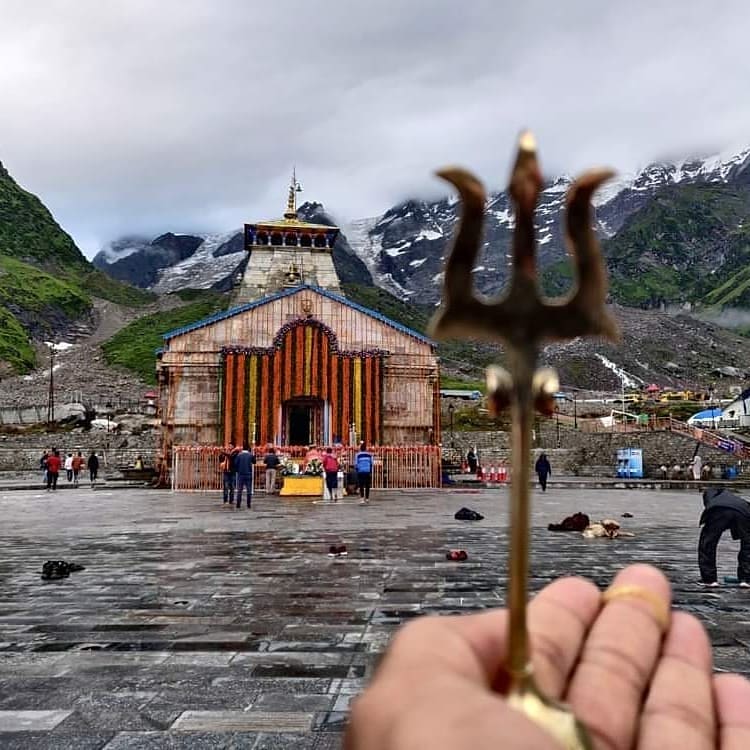
Panch Kedar 12 Days Trekking Tour Package
What's included?
Get in touch with us!
Lord Shiva is the most revered deity in Uttarakhand and one can find many temples and shrines dedicated to him. Out of all the temples dedicated to Lord Shiva, the cluster of five shrines of Shiva is the most revered. They are known as Panch Kedar . Many pilgrims do Panch Kedar Yatra every year. In this Panch Kedar Yatra trekking package , we offer you the best Panch Kedar Yatra trekking itinerary and take you to the best suitable Panch Kedar route for you.
According to Mahabharata, when Pandavas were searching for Lord Shiva, he turned himself into a bull to avoid detection. However, when Bheema tried to capture the bull, it disappeared and later reappeared in body parts at five locations, presently known as Panch Kedar .
The hump reappeared at Kedarnath , the arms appeared in Tungnath , the navel appeared in Madhyamaheshwar , the face showed up at Rudranath and the hair and head appearing in Kalpeshwar . The Pandavs built temples at these five places for worshiping Shiva.
Tour Itinerary
Day 1 drive from haridwar / rishikesh â sonprayag / sitapur.
Drive to Sonprayag or Sitapur from Haridwar / Rishikesh . (depends on the accommodation booked/available). Night stay in hotel/homestay.
Day 2 Gaurikund to Kedarnath Trek
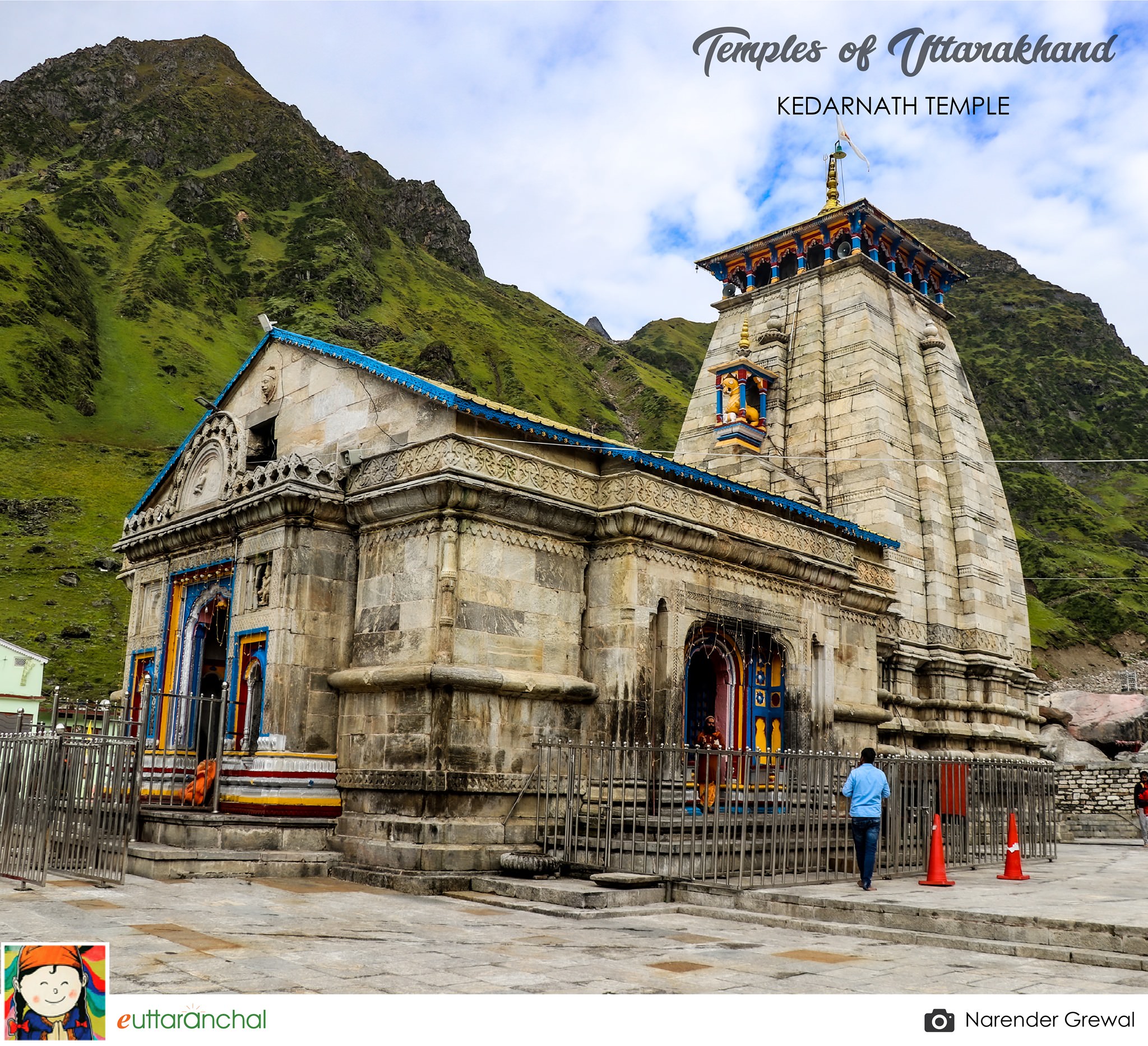
Drive to Gaurikund . Trek 18kms to Kedarnath Temple (3583mts). You can also opt to ride on a pony/helicopter to cover this distance. Donât forget to visit Bhairav Temple for its prominence and amazing view of the Kedarnath Valley .
Else keep 01 reserve day as directly getting down the next day will tire you down at the very beginning of the Panch Kedar Yatra itinerary.
Day 3 Buffer Day (Optional)
We can use Buffer Day here or any other day in between if the weather is bad, or somebody is not feeling well or too tired.
Day 4 Kedarnath - Gaurikund - Ransi Village
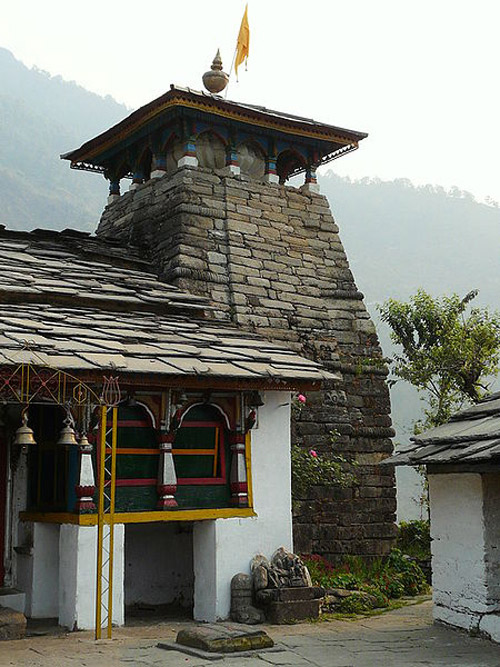
Start trekking back to Gaurikund in the morning and drive to Sonprayag . Take some rest and stop for lunch at Guptkashi . Then start your journey again and drive to Ransi Village to relax for the remaining part of the evening. Ransi village is the starting point of the trek to Madhmaheshwar .
Day 5 Day 5 : Trek to Nanu via Gaundar
A newly made road leads to some 1km beyond Ransi Village . We drive to that point and start the trek. The route is fairly easy all the way to Gaundar, a small settlement near the river with a few good lodges and guest houses . Watch out for a beautiful waterfall right before reaching Gaundar.
The route from Gaundar onwards is steep and will require some effort. We hike all the way to Nanu and stay at Homestay.
Day 6 Trek to Madhmaheshwar
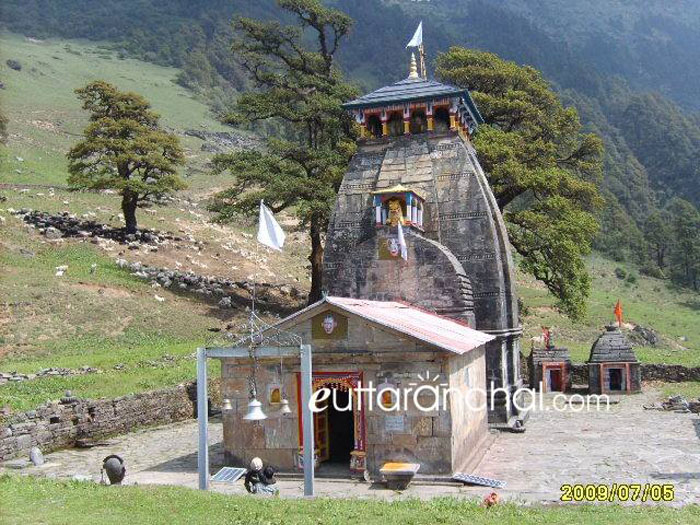
Start early morning to cover 2hr trek and reach Madhmaheshwar on time. After Darshan, spend the remaining time around the temple premises. After lunch head to Budha Madhmaheshwar (1.5km) from the temple. The view of Chaukhamba peaks is unlike anything else from here.
Dinner at Madmaheshwar and Overnight stay at Tents/Homestay in Mashmaheshwar.
Day 7 Trek down to Ransi Village - Chopta
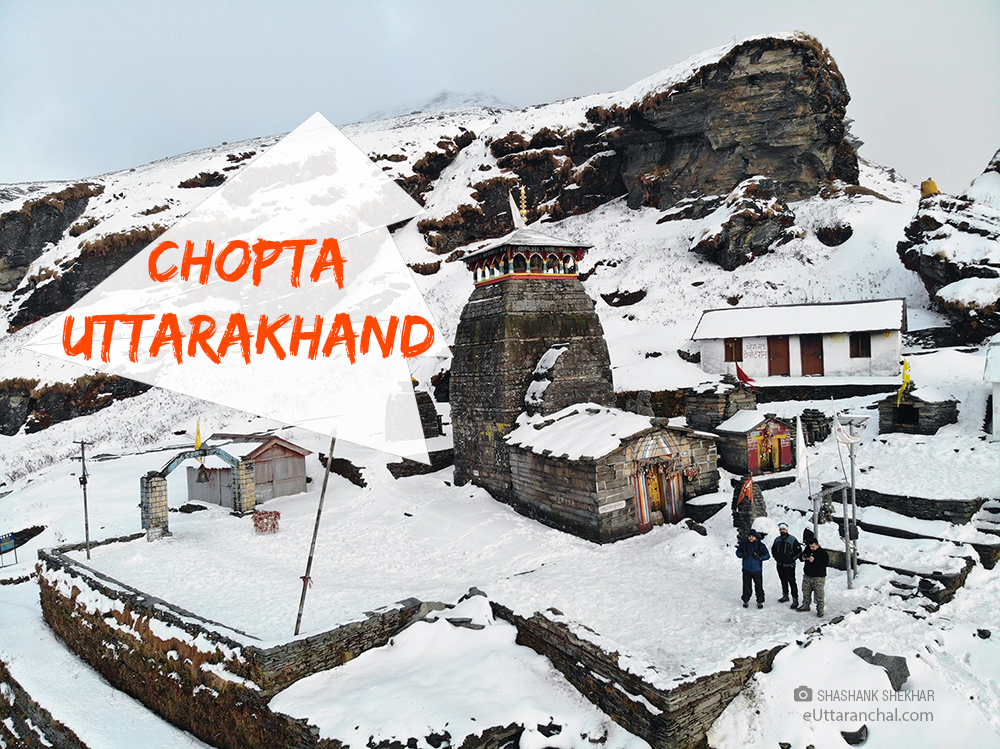
After visiting the morning aarti and having breakfast, trek down to Ransi Village (18kms) and drive to Dugalbitta , Chopta . It is roughly 2 hours drive.
Dinner at Chopta and overnight stay at Meraki Mayadeep Hotel in Chopt a.
Day 8 Tungnath â Chandrashila â Saggar Village
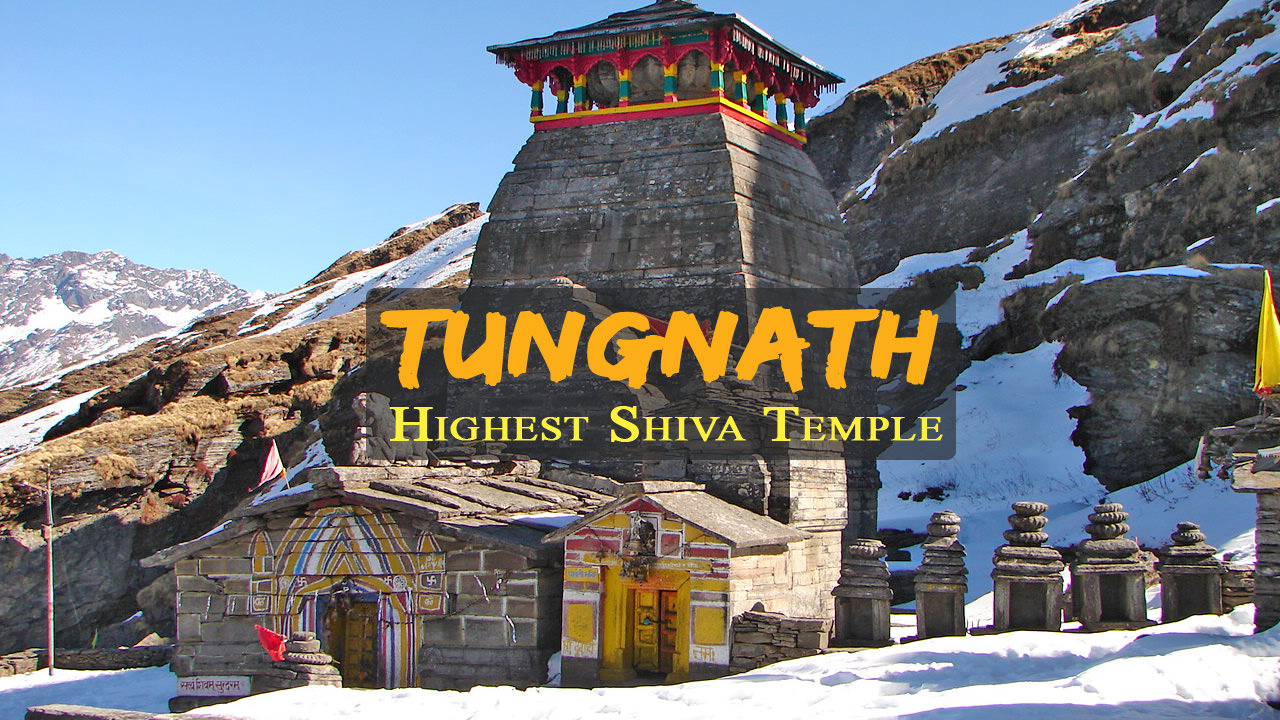
After breakfast drive 6kms to Chopta. Start your trek to Tugnath Temple & beyond to Chandrashila . Located at 3780mts above sea level, Tungnath Temple is the highest temple of Lord Shiva in the world. After reaching the Temple take some blessing from God and trek back to Chopta & drive to Saggar Village beyond Mandal .
Dinner at Sagar village and overnight stay at the hotel in Saggar village .
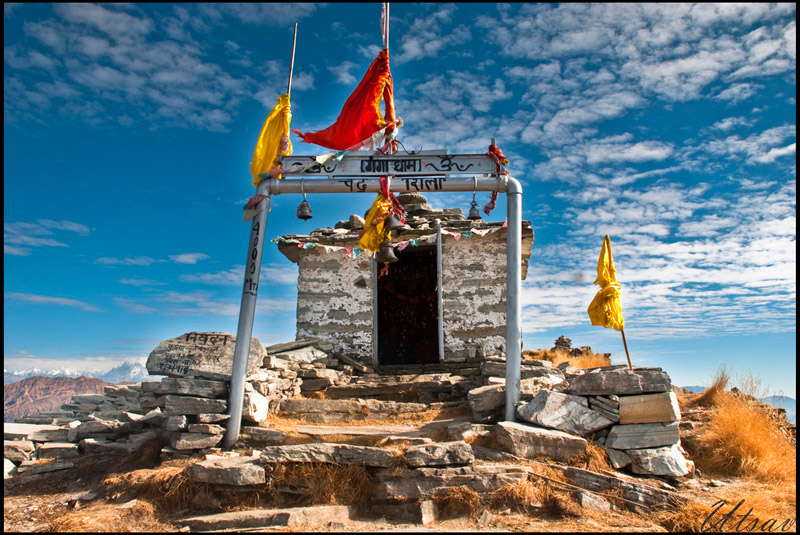
Day 9 Trek to Panar Bugyal
After breakfast starts your trek from Saggar to Panar Bugyal which is almost 12 km and the toughest part of the trek as there is a long steep climb through dense forest. The meadows open up from Lyuti Bugyal to Panar Bugyal. If weather turns bad or you feel tired, then we can also stay at Lyuti Bugyal at a small shack operated by BishtJi there.
Alternately we trek to Panar Bugyal which is 2kms before Lyuti Bugyal. Panar Bugyal is a gorgeous expanse of a meadow overlooking the Garhwal Himalayas and the mountain ranges coming from Kalpeshwar .
Day 10 Panar Bugyal - Rudranath
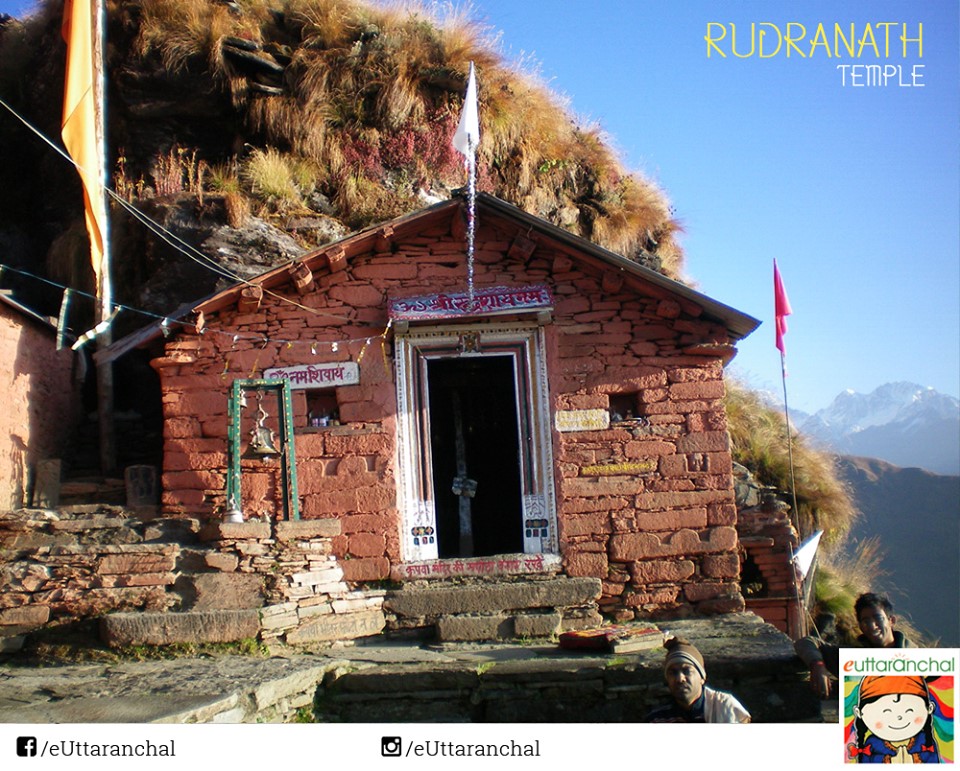
Start early in the morning for Rudranath (3500mts)as the trek involves a climb to Pitradhar (highest point of the trek). The route further passes through Panch Ganga and thereon to Rudranath Temple. After reaching the temple take some blessings from Lord Shiva and enjoy the environment and surroundings of the temple and return to PanarBugyal. Dinner and overnight stay in PanarBugyal.
Day 11 Day 11 :PanarBugyal - Saggar Village - Urgam Village - Kalpeshwar
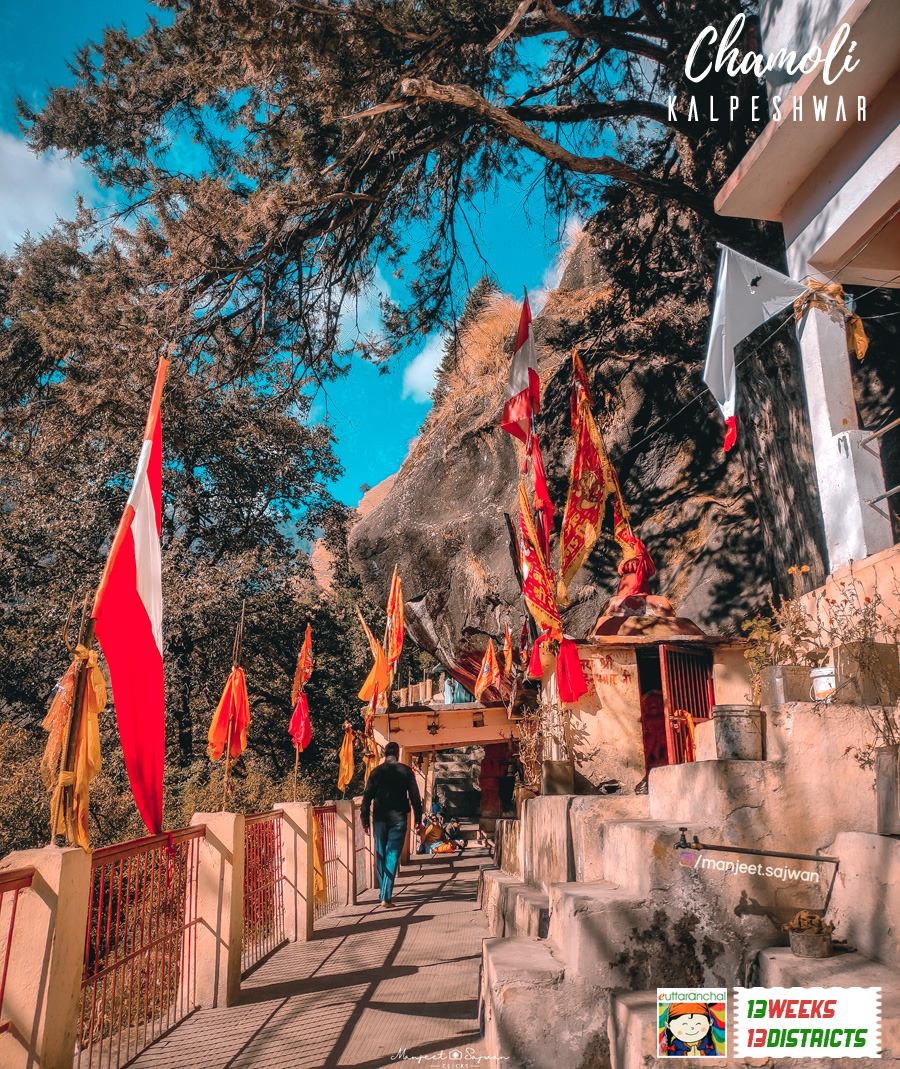
After breakfast, trek down to Saggar Village and drive to Urgam Valley via Gopeshwar and Helang. Kalpeshwar Temple (2100mts) is almost on-road and the only one amongst the Panch Kedar which remains open throughout the year. Urgam Valley is also known for its Rajma. Do carry some while traveling back.
Day 12 UrgamâHaridwar / Rishikesh
After breakfast drive to Devprayag , the origin of Ganga. And thereon to Haridwar / Rishikesh .
Note : We have kept 1 Buffer Day Extra just in case of bad weather or bad health.
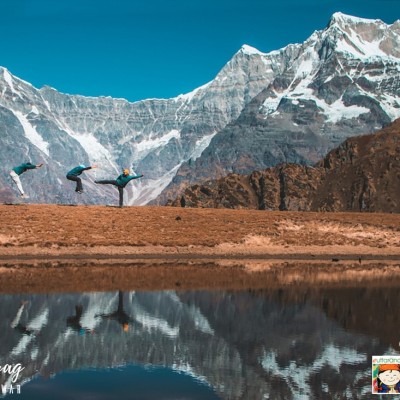
Similar Tour Packages
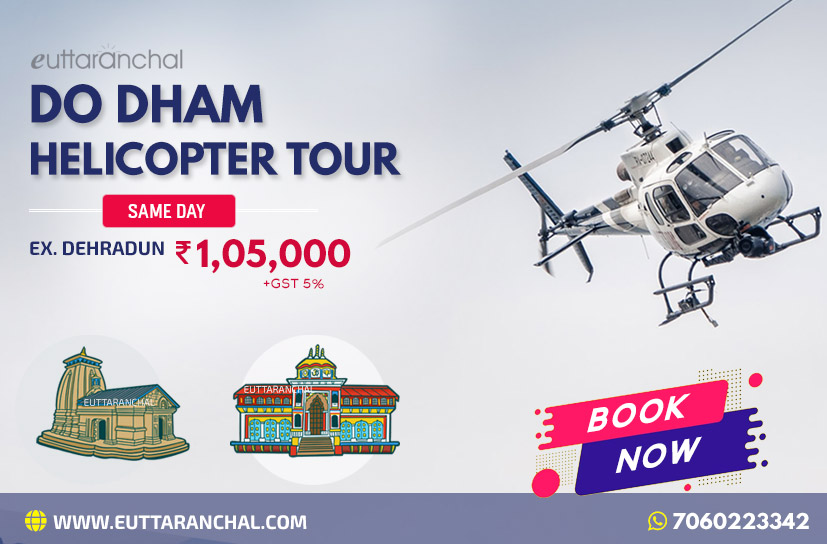
Same Day Do Dham Helicopter Tour Package ex-Dehradun
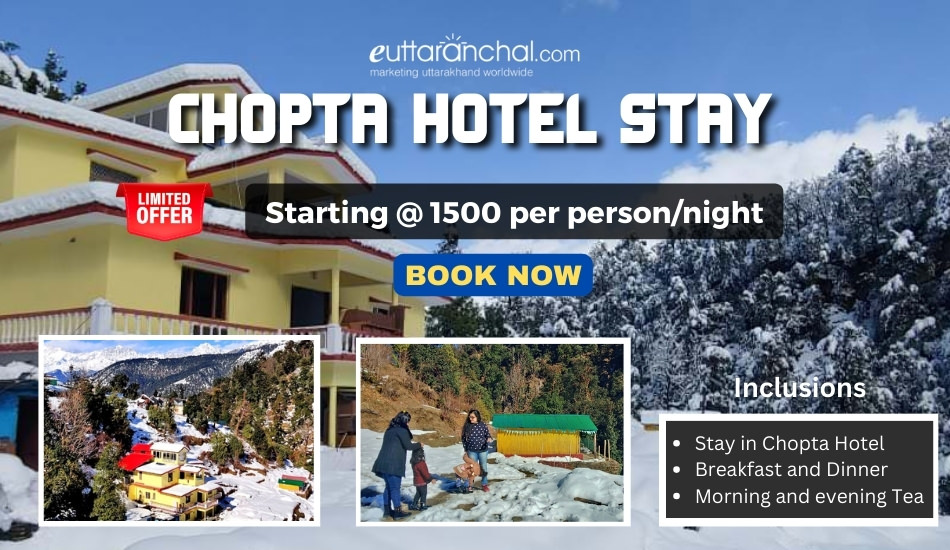
Hotel Package in Chopta - Stay with Meals

Char Dham Luxury Helicopter Tour Package ex-Dehradun
Places covered, package categories.
- Send Enquiry
- Bestsellers
Plan your Tour
Panch Kedar

- 1 Understand
- 5 Stay safe
Panch Kedar is a group of five Mahadev Temples in the Garhwal Himalayas . The trek to all these temples takes 15-16 days. None of these temples are connected to a road, and the way to these temples takes one through some of the most beautiful parts of Garhwal Himalayas . It is not a picnic trek, but a great event to bring you closer to yourself as also to the Divine.
Understand [ edit ]
The Legend of Panch Kedar
Panch Kedar has an interesting legend. When the Pandavs went to the Himalayas, Shiv avoided them because they had killed so many people in the war. To avoid them He ran in the form of a Bull, and Bhim chased him. On being followed, the colossal Bull dived into the ground to resurface at other places. He left his hump at Kedarnath. But when he resurfaced, it seems that he had assumed human form and emerged at different areas in these mountains. His face resurfaced at Rudranath. His Arms resurfaced at Tungnath. His navel emerged at Madha Maheshwar. His hair emerged at Kalpeshwar.
These temples of Panchkedar have been and are seats of Tapasyas for sages from time immemorial. It is believed that even today the area abounds with siddhas and sadhaks.
Which are these five Mahadev Temples?
Hump at Kedarnath: one of the 12 Jyotirlings. Arms at Tunganath: Highest temple in the region. Face at Rudranath: Natural Rock Temple. From Gopeshwar drive 4 km to Sagar. Trek 20 km to Rudranath. Mid-body (naval) at Madhyamaheshwar: 25 km northeast of Guptakashi. From Guptakashi drive to Kalimath and then trek to Madhyamaheshwar. Hair at Kalpeshwar: Between Rudranath and Helong, a motor head on Badrinath route.
Prepare [ edit ]
Get in [ edit ], go [ edit ].

What is the route of the Panch Kedar Parikrama?
The proposed route is as follows:
From Delhi drive to 30.562764 79.084983 1 Kalimath . Offer prayers to invoke the blessings of Shakti at Kalimath before proceeding.
After Puja at Kalimath drive 70 km to 30.653955 79.027135 2 Gaurikund via 30.523541 79.081399 3 Guptakashi . Visit Guptakashi temples when passing through the town.. From Gaurikund trek 14 km to 30.735231 79.066895 1 Kedarnath . This is 1st Panchkedar.
From Kedarnath return to Kalimath.
From Kalimath trek 16 km to 30.587469 79.142359 4 Gaundar .
From Gaundher trek 10 km to 30.635181 79.221679 2 Madhyamaheshwar . This is 2nd Panchkedar.
From Madhyamaheshwar return to Gaundher.
From Gaundher trek 12 km to Kalimat . From Kalimath bus to 30.51549 79.091161 5 Ukhimath .
From Ukhimath take a bus to 30.48498 79.20022 6 Chopta 43 km away. Trek 4 km to 30.4887 79.217021 3 Tunganath . This is 3rd Panchkedar. Return to Chopta.
From Chopta drive 30 km to 30.439457 79.319996 7 Sagar and then trek 10 km to Panargupha .
From Panargupha trek 12 km to 30.519244 79.318494 4 Rudranath . This is 4th Panchkedar.
From Rudranath trek 18 km to Dumuk .
From Dumuk trek 14 km to 30.545673 79.452643 5 Kalpeshwar . This is 5th Panchkedar.
From Kalpeshwar trek 9 km to 30.525643 79.506103 8 Helang . Catch a bus to Badrinath .
Rest at Badrinath
From Badrinath return to Delhi.
Stay safe [ edit ]
Go next [ edit ].
- Has default banner
- Has mapframe
- Has map markers
- Outline itineraries
- Outline articles
- Asia itineraries
- Itineraries
- Pages with maps
Navigation menu

How to Travel Panch Kedar
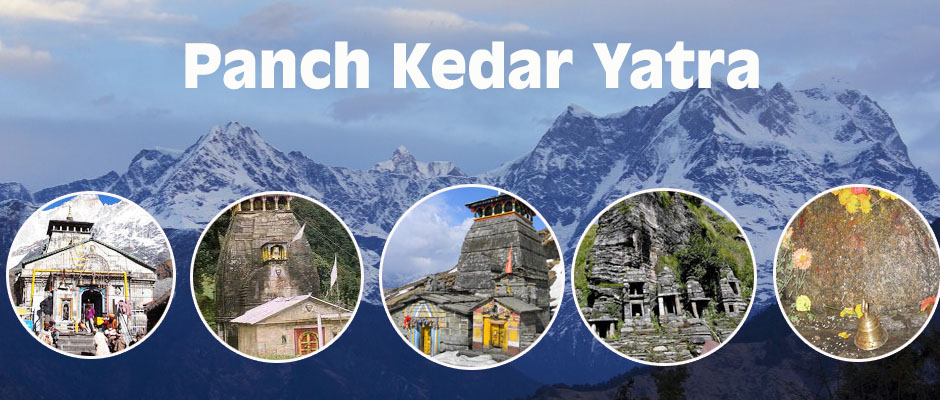
Panch Kedar Yatra
The Panch Kedar refers to five places of the Shaivite or the five Hindu Holy Temples dedicated to Lord Shiva. These five temples of Lord Shiva are located in the Garhwal Himalayas of Uttarakhand. The Panch Kedar has 5 temples of Lord Shiva namely Kedarnath , Rudranath , Madmaheshwar , Kalpeshwar and Tungnath . Travelling to Panch Kedar needs you to have all the necessary information that includes the details about travelling to the Panch Kedar. The Panch Kedar is a long journey in the Himalayas; it was built by the Pandavas the heroes of the Mahabharata. The Panch Kedar is a minimum journey of 15 to 16 days. To know About How to Travel Panch Kedar keep reading.
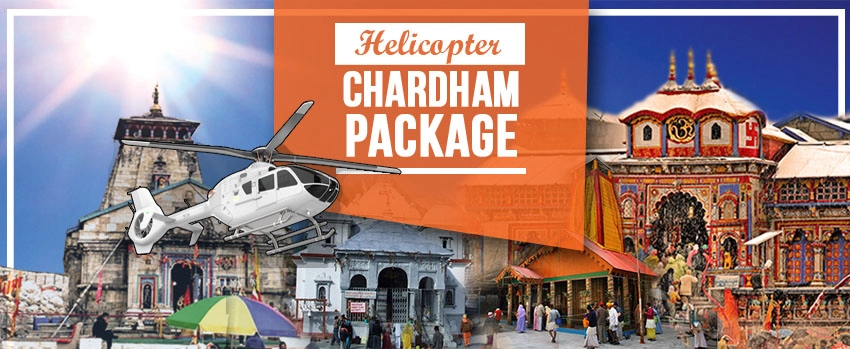
Best Time to Travel to Panch Kedar
The Panch Kedar opens for a period of 6 months, generally from the months of April to October. The Best Time to Travel to Panch Kedar is usually in the month of May, June, September and October.
Panch Kedar during winters is closed because of the snow cover. The idol of Lord Shiva from Kedarnath is shifted to Omkareshwar temple at Ukhimath and is worshipped there for the other 6 months. The representational idol of Tungnath is worshipped at Mukkumath. The symbolic image of Rudranath is brought at Gopeshwar and the symbolic idol of Madhyamaheshwar is honored at Ukhimath. It is only Kalpeshwar is open throughout the year.
Although if you are an avid trekker you can go during the winters but you got to be well equipped with food and good trekking gears. Winters in the Himalayas is absolutely ravishing, dolled up with a vegetation and décor which is absolutely incredible.
Check Best Panch Kedar Tour Package Here
How To Visit Panch Kedar
Travelling to Panch Kedar involves travelling through road and by foot both. It is a 16 day long journey which will take you on an expedition in the Himalayas. To travel in the Panch Kedar you can hire a taxi for most part of your journey and trek to the rest of the journey which is to be travelled by foot. You will also have to visit Badrinath to pay homage to Lord Vishnu as a final affirmatory proof by the devotee that he/she has sought blessings of Lord Shiva. Below is a route map that you give you The Panch Kedar travel Details from New Delhi.
Panch Kedar Travel Route Plan
Panch kedar route map, tips to travel at the panch kedar.
- When Travelling to the Panch Kedar, make sure you are physically fit as this journey requires you to be in the optimum state of health.
- Pack the essential things you need in Panch Kedar such as power banks, important medicines, creams, energy bars, heavy to light woolen clothes depending on the travel month you choose.
- The Panch Kedar is open for only 6 months except Rudranath which is accessible throughout the year.
- The Panch Kedar is a long journey to be covered therefore plan your journey early in the mornings to visit all the Panch Kedar on an appropriate time.
With this we wish the divine may shower you with all the divinity. Before travelling to the Panch Kedar make sure you thoroughly go through this Travel Guide of Panch Kedar .
Get Tour Details
Add comments and suggestions or ask questions about "how to travel panch kedar".
We would be glad if you can comment below and provide your valuable suggestions and feedback on How to Travel Panch Kedar. If this How to Travel Panch Kedar page have any wrong information/list or out of context content, then you can report us as well.
If you have any questions, you can also ask as in the following comments section. Our team will try to provide you answers/solutions.
सभी पंचकेदारों के पैदल ट्रेक की वास्तविक जानकारी प्रदान करने का अनुरोध है।
पंक्ति क्र.3 का कालम 3 में गौरीकुंड से केदारनाथ धाम की यात्रा 5-6 किमी उल्लेखित है जबकि यह पैदल यात्रा वास्तविक रूप से 22 किमी से अधिक की है।
bike se panch kedar yatra kar sakte he?
Hann .. par treks to krne hi padenge on foot ..
Panch kedar yatra konse mahine mai shuru hoti hai or konse mahine mai khatam
Same as Kedarnath Yatra … From Apr-May to Oct-Nov
I’ve to attend Panch Kedar Yatra in june 2023

Destinations
Char dham yatra tour packages.
- Char Dham Packages
- Badrinath Packages
- Kedarnath Packages
- Gangotri Packages
- Yamunotri Packages
- Teen Dham Tours
- Do Dham Packages
- Chardham Helicopter Packages
- Chardham Leisure Hotels
- Fixed Departure Tours
- GMVN Tour Packages
- Hemkund Tours
- Winter Chardham Packages
- Chardham Packages 2024
Char Dham Hotels
- Chardham Hotels
- Hotels in Badrinath
- Hotels in Kedarnath
- Hotels in Gangotri
- Hotels in Yamunotri
- Hotels in Barkot
- Hotels in Joshimath
- Hotels in Auli
- Hotels in Srinagar
- Hotels in Devprayag
- Hotels in Guptkashi
- Hotels in Harsil
- Hotels in Ukhimath
- Hotels in Uttarkashi
- Hanumanchatti
- Rudraprayag
- Sayanachatti
- Srinagar Garhwal
- Karanprayag
- Jankichatti
Packages
tours, book now.

About the Activity:
Panch kedar yatra package.

About Panch Kedar Yatra Tour Packages:
History of panch kedar, madhymaheswar temple images.
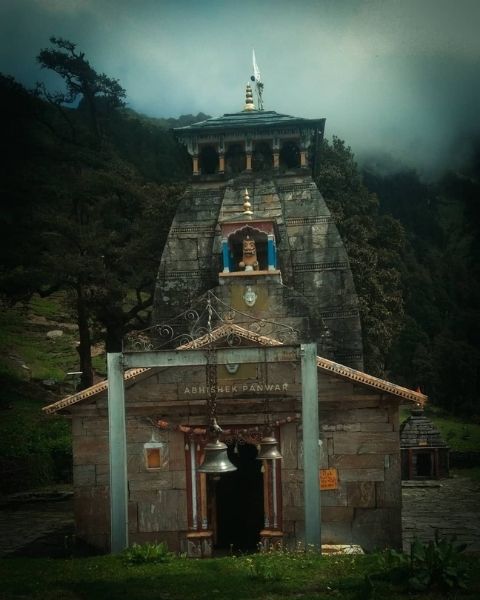
Tungnath Temple Images
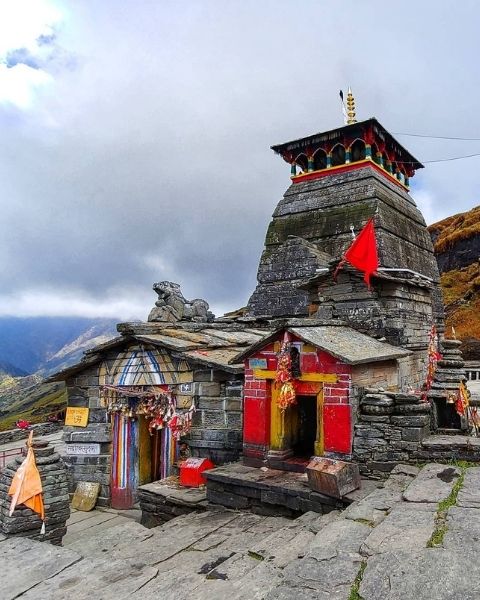
Rudranath Temple Images

Kedarnath Temple Images
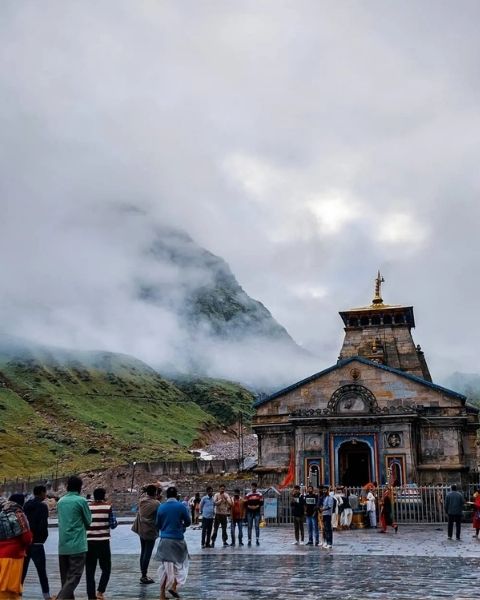
Kalpeshwar Temple Images

Best Time to visit Panch Kedar
Day wise panch kedar itinerary, day 1 haridwar – sonprayag (drive -204 kms/07 hrs approx).
After breakfast drive to Sonprayag via Devprayag & Rudraprayag. Upon arrival check into the hotel. Dinner & overnight stay at hotel.
Day 2 Sonprayag – Gaurikund(Drive -5 Km/20 mins approx) Gaurikund - Kedarnath (Trek-17 km one way)
Start early in morning to reach Gaurikund on time. On arrival start ardous walk on well paved trail to Kedarnath, entire route is steep with level walk at few stretches. Overnight stay at Kedarnath.
Day 3 Kedarnath - Gaurikund (Trek back) Gaurikund – Ransi (Drive - 65 Kms/4 hrs approx)
After blissful Darshan of Kedarnath Temple return back to Gaurikund and proceed drive to Ransi. Ransi is starting point of Madhyamaheshwar Trek. Night halt at Ransi Village.
Day 4 Ransi – Bantoli via Gaundhar (Trek 6 Kms)
It will easy walk on descending trail with level walk alongside of river with stretch of moderate ascent. Night stay at Bantoli
Day 5 Bantoli– Madhyamaheshwar (Trek 10 Kms)
Today trek will start with moderate ascent which get tougher as you ascend to Khatra, Nanu, Moukheem & Koon. Night stay at Madhyamaheshwar.
Day 6 Madhyamaheshwar – Ransi (Trek back) Ransi – Chopta (Drive 40 Kms/02 hrs approx)
Start trek back to Ransi, on arrival start drive to Chopta for overnight halt.
Day 7 Chopta – Tungnath ( Trek – 4 Kms) & Tunganth – Chopta (Trek back)
The trail to Tungnath temple is moderate with steep climb in some stretches however scenic view of surrounding keep rejuvenate the climbers. After darshan of Tungnath temple trek back to Chopta for overnight stay.
Day 8 Chopta-Sagar (Drive-30 km/01 hrs approx) Sagar – Panar Bugyal (Trek 10 Kms)
You will be driven to Sagar Village. Commence the uphill trek to Panar Bugyal which passes through Pung Bugyal, Mauli Karak, Luiti Bugyal. Night stay at Panar.
Day 9 Panar Bugyal - Rudranath (Trek 8 km) Rudranath – Panar Bugyal (Trek back)
Start the hike on gradient path with level walk & down hill descent after Pitradhar. After darshan return back to Panarbugyal for night halt.
Day 10 Panar bugyal– Sagar Village (Trek back) Sagar Village- Urgam (Drive-60 km/ 02 hr approx)
After breakfast start trek down to Sagar and on arrival proceed drive to Urgam Via Helang. Night halt at Urgam.
Day 11 Urgam – Kalpeshwar (Trek- 02 Km) Kalpeshwar – Urgam (Trek back) Urgam – Rudraprayag (110 Km/3 hr approx)
It is an easy trek of 2 kms from Urgam village of Helang. Post darshan return back to Urgam & start drive to Rudraprayag for overnight stay
Day 12 Rudraprayag – Haridwar(Drive-162 km/ 06 hrs approx)
After breakfast drive to Haridwar to connect for onward destination.
- Breakfasts, lunches, Teas and dinners
- Accompanying guide for Trek.
- Transportation Ex-Haridwar.
- All park entrance fees and trekking permits.
- Accommodation in tents/homestay/guesthouse.
- Ponies & Porter during treks.
Things to Carry:
- Warm clothes like windproof jackets, full sleeve sweater, thermal inner wears, woolen caps, and socks, mittens and scarf.
- Comfortable clothes like T-shirts, trousers/lower, etc.
- Raincoat or poncho to protect from rains or snowfall.
- Trekking stick (not compulsory).
- Trekking or hiking shoes.
- Water bottles.
- Sunscreen lotion, lip balms, skin ointment and first aid kit/basic medications (or prescribed if any).
- Torch or flashlights with extra cells and bulbs.
- Personal toiletries and towels.
- Any International or Domestic Air or Rail Tickets.
- Meals/drinks not mentioned.
- Any expenses of laundry, porter, tips, camera fee, ropeway charges, entrance charges.
- Any travel, medical health insurance, or any other expenses incurred due to bad weather, road closure, landslides, etc., and anything not specified in cost included.
- Any increase in the govt. taxes.
- Any service not specified in inclusions.
Cancellation Policy
- Cancellations received 46 days (or more) of departure will incur a penalty of 10% per person.
- Cancellations received within 45-31 days of departure will incur a penalty of 25% per person.
- Cancellations received within 30 -15 days of departure will incur a penalty of 50% per person.
- Cancellations received within 14 days of departure will incur a penalty of 100% per person.
- Click to know the Terms and Conditions / Cancellation Policy.
Pictures Courtesy:- Kabir Akhtar(@awaara_u.p_wala) Via Instagram | Naman Via Instagram | Kabir (@rewindstories_) Via Instagram | Saikiran Kota(@saikiran_kota_) Via Instagram | Manjeet Sajwan(@bhatkta_mann) Via Instagram | Ashish Verm(@aashish._.verma) Via Instagram | Abhishek panwar 'Gaundari'(@pahadi_dagdia) Via Instagram | Sagar Mehta(@saagarah) Via Instagram | Saurav Rawat(@sau_rawat) Via Instagram | Vishal Awasthi(@vishalawasthi11) Via Instagram | Ankit(@_thepursuitofadventures) Via Instagram | Shalini Suara(@shalinisuara) Via Instagram
Panch Kedar – Frequently Asked Questions (FAQs)
Here is the list of Panch Kedar opening & closing dates 2023 (Tentative)*-
Panch means five & Kedar means Shiva. Panch Kedar is a very important circuit for Shaiva followers. This circuit contains five spiritual Shiva Dham which are - Kedarnath, Kalpeshwar, Madhmaeshwar, Rudranath & Tungnath.
According to legends - After the great Mahabharat battle Pandavas felt guilty for the massacre, and to get free from the sins they needed Shiva blessings. But Shiva was not willing to give redemption for their bad work. And to hide from the Pandavas, Shiva transformed himself into a Bull and dive to the ground. But Bhima recognized the bull as none other than Shiva then he caught the bull with his tail and hind legs. The bull vanishes into the ground and reappears at five different places- Hump in the Kedarnath, two forelegs in the Tungnath, Nevil & stomach in the Madhy-Maheshwar, face at Rudranath and hair-lock in Kalpeshwar. Together these five places are called Panch Kedar.
In Uttarakhand, there are a total of five Kedar which is known as Panch Kedar. Panch Kedar contains five Shiva Temples which are at the remote locations of Uttarakhand. These five temples are Kedarnath , Kalpeshwar, Madhmaeshwar, Rudranath & Tungnath
Like others' spiritual circuits Panch Kedar also follows a fixed sequence that starts from Kedarnath, then Madhmaheswar, then Tungnath, Rudranath, and last Kalpnath/Kalpeshwar.
No, Kedarnath & Tungnath are two different Shiva temples which are the parts of Panch Kedar. Kedarnath is the place where Shiva is worshiped in the form of a bull whereas Tungnath is the place where the devotees worship the fore-legs of Shiva.
No. Tungnath Temple is based in the high snowfall region which makes the temple inaccessible for the devotees. That’s why Tungnath temple opens only for 6 months and closes in winters for the next six months.
Kedarnath Dham is a more than the 1000 year old temple based on the bank of Mandakini river which was recreated by Adi Shankaracharya in 8 AD.
Tungnath Temple is the world's highest-altitude Shiva Temple. It is located near Chopta in Rudraprayag district of Uttarakhand, at an elevation of 3,680 meters (approx 13000 ft.) above sea level and is considered to be more than 1,000 years old.
To reach Tungnath Temple, you have to first come to Haridwar/Rishikesh from there you can take any taxi or shared vehicle till Ukhimath or Chopta . Chopta is the place from where the trek starts. The trek is 3.5 km long which goes through beautiful landscapes. The trek is not very difficult but it needs physical fitness.
May to October is the best time to do Panch Kedar Yatra. This is the time when the weather remains pleasant which would be good for trekking, but it is advised to avoid yatra during monsoon season.
he trekking distance for Panch Kedar's Temples is given as follows - 1. Kedarnath Temple has a 16 km trek, which starts from the Gaurikund. 2. Tungnath Temple’s Trek is just 3.5 km long, which starts from Chopta. 3. To reach Rudranath there are three different routes but the approx trek distance is more than 20 km. 4. Madhy-Maheswar Temple trek is approx 14-16 km long, which starts from the Ransi Village. 5. To reach Kalpeshwar the road is motorable till Helang Urgam road. From there you have to trek less than a km to reach Kalpeshwar Mahadev Temple.
Rudranath Temple’s trek is the toughest in all five Panch Kedar.
In winter, when the temple is inaccessible due to snowfall and rainfall at that time the idols of these temples are brought down to their winter’s seats. In winters the symbolic idol of Kedarnath Temple is brought to Omkareshwar Temple at Ukhimath, idol of Tungnath brought to Mokhumath, the symbolic idol of Rudranath moved to Gopeshwar, Madhy-Maheswar idol brought to the Ukhimath. Only the Kalpeshwar Temple is open throughout the year.
Plan Your Tour Now
Enter your Details
Char Dham Yatra 2024
- Complete Chardham Yatra
- Do Dham Yatra
- Kedarnath Yatra
- Badrinath Yatra
- Chardham Yatra by Helicopter
- Do Dham Yatra by Helicopter
- Kedarnath Yatra by Helicopter
- Badrinath Yatra by Helicopter
- Rishikesh Rafting Package
- Kanatal Uttarakhand Package
- Chopta Package
- Valley of Flowers
- Corbett Safari Packages
- Kedarkantha Package
- Har ki Dun Trek
- Dodital Trek
Hill Station
- Rishikesh Auli Package
- Mussoorie Holiday Packages
- Nainital Packages
- Nainital-Jim Corbett Package
- Chopta Tour Package
- Shimla Packages
- Auli Tour Packages
- Manali Tour Packages
- Uttarakhand Taxi Service
- Haridwar Car Rental
- Delhi to Uttarakhand Service
- Dehradun Taxi Service
Char Dham Car Rental
- Complete Char Dham
Experiential Travel
- Spiti Valley Tour
- Shimla Honeymoon Tour
- Manali Volvo Tour
- Dalhousie Dharamshala Tour
Accommodation
- Camps in Uttarakhand
- Hotels in Uttarakhand
- Hotel & Resort in Jim Corbett
- Hotels in Himachal Pradesh

- Payment Policy
- Login / Register
- 98731-52953
- +91-9897-581-113
- +91-7252-885-525
- [email protected]
Member Login
Forgot password, register account.

Panch Kedar Yatra Package
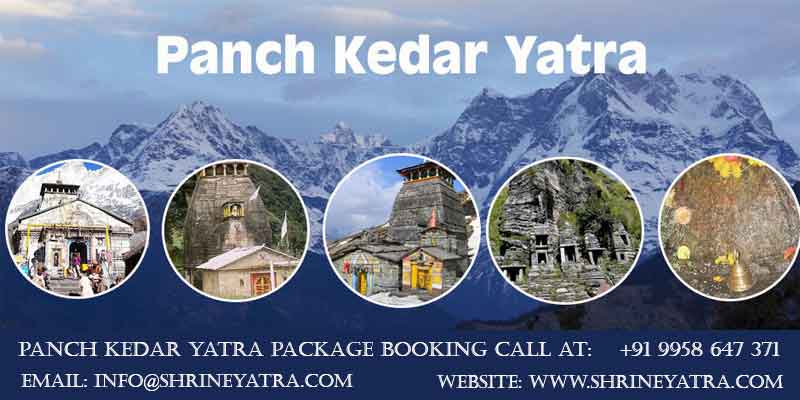
Panch Kedar Yatra Dedicate to Lord Shiva is extremely religious and pious for the Shaivite sect of worshippers. All these sites are the Garhwal region of Himalayas. These five holy worship sites are made up of Kedarnath , Madmaheshwar , Tungnath , Rudranath and Kalpeshwar . Read more in the details about panch kedar
Panch Kedar Yatra Package ensures that you feel the power of the Lord in your journey to this sacred place. We organize these trips keeping in mind the best time for Panch Kedar trek enabling you to have a divine experience free of any unforeseen hassle.
Book Panch Kedar Yatra Package 2024
Day 01: dehradun – guptkashi (240 km drive)...
Morning, drive to Guptkashi. On the way enjoy the Devoprayag, Rudraprayag, Kashi Vishwanath Temple. Arrival check-in at hotel. Overnight stay at Guptkashi.
Day 02: Guptkashi – Kedarnath Temple (16Km Trek).
Early morning, drive to Gaurikund and start 16 km trek to Kedarnath Jee Temple. Arti Darshan in the evening and check-in at hotel. Overnight stay at Kedarnath.
Day 03: Guptkashi – Ransi – Gaundhar (35 Kms Drive & 6 Kms Trek).
In the morning after breakfast transfer to Ransi Village, its about 35 Kms to reach, after arrival start the trek to Gaundhar Village and Stay.
Day 04: Gaundhar – Madhmaheshwar (10 Kms Trek).
Early morning start the trek to Madhyamaheshwar Visit Madhmaheshwar temple for night arthi. This Pujanka (similar to snake dance) arthi is for almost 40 minutes by the priest arthi tray and ringing bell on each hand. Overnight stay in Madhmaheshwar at Camps / Homestay.
Day 05: Madhmaheshwar – Ransi – Chopta (50 Kms Drive & 17 Kms Trek)
(18 kms/ 07 hrs down trek – Doli/Porter/Pony/Palki available if in need then drive 45 kms – 2 hrs), Night stay at Chopta Hotel.
Day 06: Chopta – Tungnath – Chopta (7 Kms Trek)
In the morning after breakfast start the trek to Tungnath and after visit we can see the Chandrashila Peak and later back to Chopta for Overnight stay.
Day 07: Chopta – Sagar – Panar Bugyal (35 Kms Drive & 10 Kms Trek)
In the early morning drive to Sagar Village, and start the trek to Panar Bugyal and stay in Camps / Homestay.
Day 08: Panar Bugyal – Rudranath – Panar Bugyal (15 Kms Trek)
In the morning start the trek to Rudranath and after darshan back to Panar Bugyal and overnight stay.
Day 09: Panar Bugyal – Sagar – Pipalkoti (35 Kms Drive & 10 Kms Trek)
After breakfast in Sagar transfer to pipalkoti. On the way we will see the Gopeshwar Temple (winter home of Rudranath Ji). Overnight stay at Hotel in Pipalkoti.
Day 10: Pipalkoti – Kalpeshwar – Pipalkoti (140 Kms Drive).
In the morning transfer to visit Kalpeshwar Temple and back to hotel and overnight stay.
Day 11: Pipalkoti – Rishikesh (230 Kms Drive).
In the morning after breakfast, transfer to Rishikesh via Rudraprayag & Devprayag. On arrival at Rishikesh check-in the hotel and overnight stay.
Day 12: Departure Day.
In the morning after breakfast, transfer to Dehradun Airport for Onward Journey.
Call for Best Deal: +91 9958647371
Hotels details:.
- Hotel accommodation as per package same or similar hotels.
- Meals as per package (Breakfast + Dinner only 03 nights).Rest all trek is Breakfast, Lunch, dinner.
- Transfers and sightseeing as prepackage car.
- toll tax, parking, fuel and driver allowances.
- hotel and transport taxes.
- Local Guide for complete tour
- Lunch does not include in Package.
- Anything not mentioned under ‘Package Inclusions’
- personal expenses, optional tours and extra meals.
- Medical and travel insurance.
- Any kind of entry fees anywhere if not mentioned in including.
- Tips, travel insurance, medical insurance, laundry charges, liquors, mineral water, telephone charges.
- Porter, pony, horse, cable car, boat, train tickets, air tickets charges.
- Helicopter Ticket for Kedarnath ji
- VIP Darshan for Kedarnath Darshan.
Get A Free Quote
Arrival Date
Adults Select 1 2 3 4 5 6 7 8 9 10 11 12 12+
Children Select 1 2 3 4 5 6 7 8 9 10 10+
Message Message
FAQ for Panch Kedar Yatra
Get free quotes from our tour expert, recommended packages, valley of flowers with chardham yatra (12 nights & 13 days).
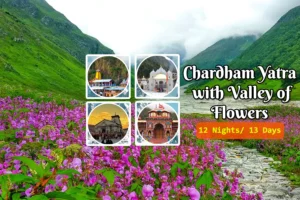
Chardham Yatra with Valley of Flowers 2024 Tour Package awaits to greet you with some awestruck attra... read more
Do Dham Yatra Package by Helicopter (02 Night / 03 Days)
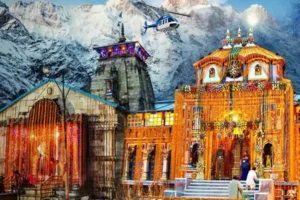
From competitive pricing and a top grade services, SHRINE YATRA brings you to this badrinath and kedarnath tou... read more
05 Night / 06 Days Shri Kedarnath Badrinath Yatra Package from Haridwar

With Shrine Yatra’s Do Dham Package from Haridwar, you will also get a chance to visit places like Haridwar,... read more
Kedarnath Badrinath Yatra by Helicopter (Same Day)
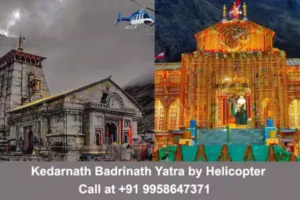
07 Nights / 08 Days Kedarnath Badrinath Yatra Package from Delhi

Kedarnath Badrinath Yatra package from Delhi to visit the holy abode of Lord Shiva and Lord Vishnu. The Kedarn... read more
Chardham Yatra Package from Chennai 12 Night/13 Days
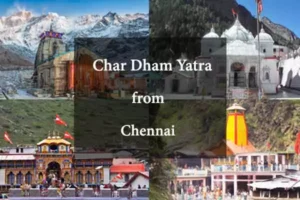
If you comming from Chennai the we are offering best Chardham Yatra from Chennai for 12 Nights and 13 Days is ... read more

5-Day Moscow Itinerary
Navigate forward to interact with the calendar and select a date. Press the question mark key to get the keyboard shortcuts for changing dates.
Navigate backward to interact with the calendar and select a date. Press the question mark key to get the keyboard shortcuts for changing dates.
- Moscow in 5 days
- 1-Day Moscow Itinerary
- 2-Day Moscow Itinerary
- 3-Day Moscow Itinerary
- 4-Day Moscow Itinerary

Table of contents
Day 1: most popular attractions, day 2: north side of town, day 3: off the beaten path, day 4: proximity is everything, day 5: keep it simple.
Zaryadye Park

The Moscow Kremlin
Alexander garden, bolshoi theatre, okhotny ryad, where to eat, stolovaya 57.

Track your travel spending and split costs with friends
Plan your trip. Keep your budget organized. Split the cost between tripmates. Wanderlog does it all.

All-Russian Exhibition Center
Museum of cosmonautics, park ostankino, ottepel', restoran 7 nebo.

Don’t forget to pack anything
Stay organized with a to-do list, packing list, shopping list, any kind of list.

Gorky Central Park of Culture and Leisure
Muzeon park of arts, new tretyakov gallery, neskuchny garden, elarji restaurant, danilovsky market.

All travel reservations in 1 place
Never dig through your emails again — access all your flights, lodging, and any reservations in 1 place.

Perfect for road trips
See time and distance between places, and optimize your route to get the most of your day.

Sokolniki Park
Bauman garden, apothecary garden, yekaterininskiy park, madame galliffet.
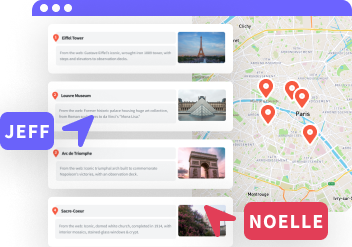
Collaborate with friends in real time
Plan along with your friends with live syncing and collaborative editing.

Top searches in Moscow
Popular road trips from moscow, what's the weather like in moscow.
It depends on when you visit! We've compiled data from NASA on what the weather is like in Moscow for each month of the year: see the links below for more information.
- Weather in Moscow in January
- Weather in Moscow in February
- Weather in Moscow in March
- Weather in Moscow in April
- Weather in Moscow in May
- Weather in Moscow in June
- Weather in Moscow in July
- Weather in Moscow in August
- Weather in Moscow in September
- Weather in Moscow in October
- Weather in Moscow in November
- Weather in Moscow in December
All road trips from Moscow
- Moscow to London drive
- Moscow to Paris drive
- Moscow to St. Petersburg drive
- Moscow to Berlin drive
- Moscow to Prague drive
- Moscow to Amsterdam drive
- Moscow to Budapest drive
- Moscow to Vienna drive
- Moscow to Istanbul drive
- Moscow to Florence drive
- Moscow to Venice drive
- Moscow to Stockholm drive
- Moscow to Milan drive
- Moscow to Krakow drive
- Moscow to Copenhagen drive
- Moscow to Warsaw drive
- Moscow to Helsinki drive
- Moscow to Munich drive
- Moscow to Brussels drive
- Moscow to Tallinn drive
- Moscow to Riga drive
- Moscow to Oslo drive
- Moscow to Turin drive
- Moscow to Hamburg drive
- Moscow to Vilnius drive
- Moscow to Yaroslavl drive
- Moscow to Nizhny Novgorod drive
- Moscow to Kyiv drive
- Moscow to Tula drive
- Moscow to Bruges drive
Explore nearby places
- Likino-Dulevo
- Ivanteyevka
- Orekhovo-Zuevo
- Semyonovskoye
- Ivanovskoye
- Rumyantsevo
- Dzerzhinsky
- Sovkhoz Imeni Lenina
- Dolgoprudny
All related maps of Moscow
- Map of Moscow
- Map of Danki
- Map of Shatura
- Map of Likino-Dulevo
- Map of Uspenskoye
- Map of Gorskoye
- Map of Ivanteyevka
- Map of Reutov
- Map of Domodedovo
- Map of Peresvet
- Map of Vorobyovo
- Map of Bronnitsy
- Map of Orekhovo-Zuevo
- Map of Moskovsky
- Map of Semyonovskoye
- Map of Izmaylovo
- Map of Nikolskoye
- Map of Ivanovskoye
- Map of Marfino
- Map of Govorovo
- Map of Nagornoye
- Map of Mosrentgen
- Map of Bratsevo
- Map of Rumyantsevo
- Map of Mytishchi
- Map of Putilkovo
- Map of Razvilka
- Map of Khimki
- Map of Dzerzhinsky
- Map of Sovkhoz Imeni Lenina
- Map of Dolgoprudny
Moscow throughout the year
- Moscow in January
- Moscow in February
- Moscow in March
- Moscow in April
- Moscow in May
- Moscow in June
- Moscow in July
- Moscow in August
- Moscow in September
- Moscow in October
- Moscow in November
- Moscow in December
Looking for other day-by-day itineraries in Moscow?
Check out our other curated itineraries that are also filled with jam-packed days:
Day itineraries for nearby cities
- 5-Day Mytishchi Itinerary
- 5-Day Khimki Itinerary

- Itinerary + map in one view
- Live collaboration
- Auto-import hotels and reservations
- Optimize your route
- Offline access on mobile
- See time and distance between all your places

IMAGES
VIDEO
COMMENTS
Short Itinerary Highlights of the Trek - Travel to all the five Panch Kedar temples in a single journey. Trek inside deep forests and reach summits with outset mountain views. Availability of dhabas and stay options allows you to pace your trek according to your fitness level and the amount of time you have. Detailed Trail Information
Panch-Kedar refers to five holy places of the Shaivite sect dedicated to god Shiva. They are located in the Garhwal Himalayan region in Uttarakhand, India.The five temples designated in the strict pecking order to be followed for pilgrimage for worship are the Kedarnath at an altitude of 3,583 m (11,755 ft), the Tungnath (3,680 m/12,070 ft), Rudranath (2,286 m/7,500 ft), Madhyamaheshwar or ...
Panch Kedar Route Map. Prepare for a 15-day long adventure to Panch Kedar! But before you go, gather all the essential travel information on Panch Kedar route map. Short Itinerary of Panch Kedar from Haridwar DAY 01: Haridwar - Joshimath. Start your journey from Haridwar. Drive to Joshimath. Check-in to your hotel in Joshimath and rest for ...
Itinerary of Panch Kedar Trek Day 1 - Haridwar to Joshimath (Altitude: 6724 ft, 256 km drive, approx 10 hours) Joshimath is the starting point for the spiritual Panch Kedar trek. Joshimath is a town in Uttarkashi that has recently become a tourist destination. Buses run frequently from Haridwar and Dehradun to Joshimath.
Trek Description. In the heart of the majestic Himalayas, where snow-capped peaks touch the heavens, lies a sacred pilgrimage route known as Panch-Kedar. The term "Panch" signifies 'Five,' and "Kedar" represents the 'Mountain Lord'—a revered name for Lord Shiva in Hinduism. Panch-Kedar comprises five sacred temples dedicated ...
Panch Kedar Trek. Panch Kedar trek is a combination of treks to five holy shrines of Lord Shiva in the Kedarnath valley. The five temples are Kedarnath (3,583 m), Tungnath (3,680 m ), Rudranath (2,286 m), Madhyamaheshwar (3,490 m) and Kalpeshwar (2,200 m). Panch Kedar Trek is undoubtedly the most popular trek among the devotees of Lord Shiva.
The five pilgrim site circuit of Kedarkhand in garhwal region is a popular trekking circuit comprising various terrains and landmarks. The holy circuit of Panch Kedar starts from Kedarnath and rounds off to Tungnath, Rudranath, Madhyamaheshwar and ends at Kalpeshwar. Located at various astounding heights ranging from 2200m of Kalpeshwar to 3600m of Tungnath Panch Kedar trek is a remote but ...
About Panch Kedar Yatra Trek. One of the popular spiritual treks in Indian Himalayan region, the Panch Kedar Trek stretches from an altitude of 2134 meters, in Urgam, to a height of 3680 meters, in Tungnath. The entire stretch reflects the mythical colours of the Mahabharata where the Pandavas went to the Himalaya to meet Lord Shiva who avoided ...
The Panch Kedar trek is a revered pilgrimage route in the Indian state of Uttarakhand. It encompasses a series of five ancient temples dedicated to Lord Shiva, collectively known as the "Panch Kedar.". These temples hold great spiritual significance for Hindus and are located in the Garhwal Himalayas, amidst stunning natural landscapes.
A detailed guide and expert advice for the Panch Kedar Trek including best time to visit, cost, travel duration, safety, itinerary, and lots more. ... This trek itinerary gives you a good amount of time to understand the Garhwali culture and its rich heritage. It offers you a good time to enjoy the Garhwali Hospitality and cuisines in their ...
Trek: 7 km. Your ninth-day Panch Kedar trek itinerary will include a trek from Ransi to Gaundhar, located at 3073 m above sea level, the base camp for trekking towards Madhyamaheshwar. On the way, stop at the meeting point of Madhyamaheshwar, Ganga River and Markanga Ganga River and spend some time looking at the stunning view.
Panch Kedar Yatra 2024. Panch Kedar Yatra consists of Temples namely Kedarnath, Tungnath, Rudranath, Madhyamaheswar, and Kalpeswara. It takes 14 days to visit all five shrines of lord shiva. There is a spherical trek which is the only way to visit all Panch Kedar temples. And for most of the part, you have to walk from temple to temple.
Panch Kedar Seasons. Summer (May to June): Enjoy cool and pleasant weather, perfect for sightseeing, temple visits, and adventure activities. The average temperature hovers around 17°C, creating an ideal environment for exploration. Monsoon (July, August): Expect occasional rains with a slight temperature drop to around 12°C. While landslides may occur, All Panch Kedar Temple remains ...
Panch Kedar - Trek And Yatra. ₹ 2,500 onwards View Packages. Get Customized Packages. Panch Kedar are the five temples dedicated to Lord Shiva situated in the Garhwal region of Uttarakhand, India. These five temples are Kedarnath which lies at an altitude of 3583m, Tungnath which lies at a distance of 3680m, Rudranath which lies at an ...
Embark on the divine Panch Kedar Trek 2024 in Uttarakhand. Explore the sacred temples and majestic Himalayan landscapes with our all-inclusive tour package. ... If a trip must be delayed or the itinerary changed due to bad weather, road conditions, transportation delays, government intervention, airline schedules, sickness, or other contingency ...
Let's begin a trail of the Panch Kedar Trek in Devbhoomi Uttarakhand. This journey will have scenic views, waterfalls, and lush green mountains.
Garhwal Tours, Hill Station, Panch Kedar Tours, Pilgrimage Tours, Temple Tours, Trekking. We provide the best 12 days and 11 nights Panch Kedar Yatra trekking tour package in Uttarakhand with the best services at an affordable price. Get Panch Kedar Yatra trek itinerary, Panch kedar yatra trek route, and Panch Kedar Yatra package.
Panch Kedar is a group of five Mahadev Temples in the Garhwal Himalayas.The trek to all these temples takes 15-16 days. None of these temples are connected to a road, and the way to these temples takes one through some of the most beautiful parts of Garhwal Himalayas.It is not a picnic trek, but a great event to bring you closer to yourself as also to the Divine.
Start your trek to Urgam/Kalpeshwar Mahadev and do the darshan there. Trek down from Kalpeshwar Mahadev and go on a 13km drive till Helang. Travel till Joshimath from Helang a 14 km drive. From Joshimath drive till Hemkund and from Hemkund travel till Badrinath. Travel back to New Delhi after completing your Panch Kedar Yatra.
The detailed Panch Kedar trek itinerary is given below. Madhymaheswar Temple Images Read more. Day wise Panch Kedar Itinerary. Day 1 Haridwar - Sonprayag (Drive -204 kms/07 hrs approx) After breakfast drive to Sonprayag via Devprayag & Rudraprayag. Upon arrival check into the hotel. Dinner & overnight stay at hotel. ...
Discover the future of travel planning with Wanderbot, our AI-powered trip planner. Create personalized itineraries, view your entire journey on an interactive map for a clear overview, and effortlessly plan, book, and share your adventures via email, Twitter, and more.
We organize these trips keeping in mind the best time for Panch Kedar trek enabling you to have a divine experience free of any unforeseen hassle. Book Panch Kedar Yatra Package 2024. Itinerary. Day 01: Dehradun - Guptkashi (240 Km Drive).. Morning, drive to Guptkashi. On the way enjoy the Devoprayag, Rudraprayag, Kashi Vishwanath Temple.
Dan — Google review. Make the most out of your 5 days in Moscow by exploring these top visited places: Red Square, Mu-Mu, All-Russian Exhibition Center, Ottepel', Gorky Central Park of Culture and Leisure, Semifreddo, Moscow Zoo, Mari Vanna, Sokolniki Park, and Madame Galliffet.